Travel to Palestine (West Bank) – 2-week itinerary + Tips
By Joan Torres 39 Comments Last updated on April 12, 2024
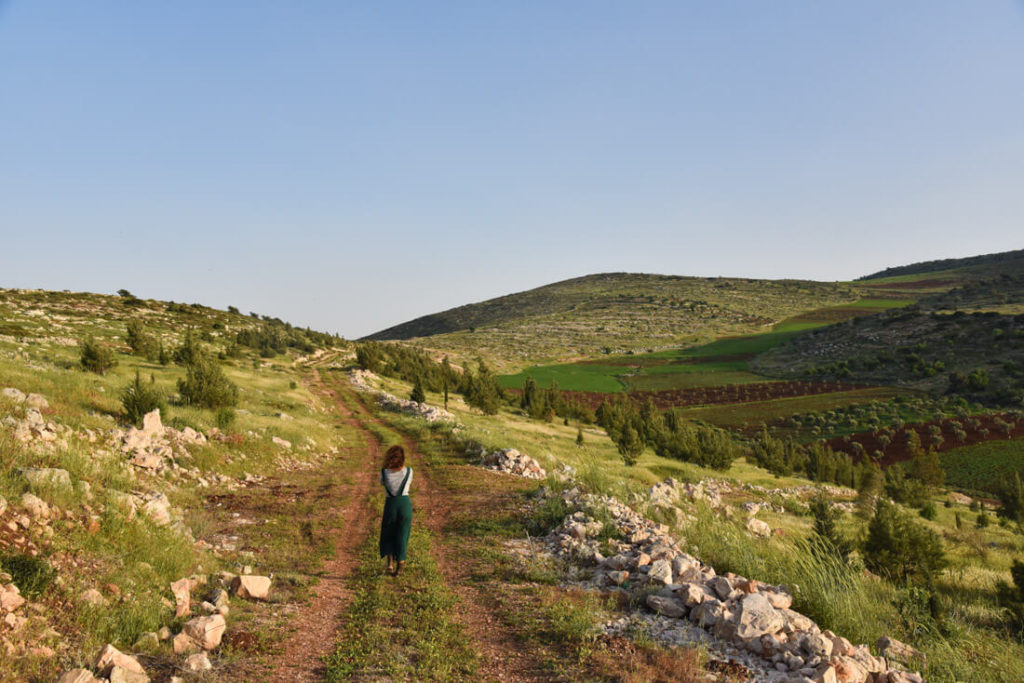
From green rolling hills to a Mediterranean culture and cuisine, the hospitality of the Arabs, first-class souks, historical cities that are thousands of years old and one of the most interesting political scenes in our modern history, visiting Palestine, especially a tiny region called the West Bank, will definitely surprise you.
Whether you are interested in the Israeli-Palestinian conflict, a lover of Biblical and Christian sites or just a backpacker seeking adventure, Palestine is a country adaptable to any kind of traveler.
This guide contains everything you need to know to travel to Palestine , including a comprehensive 2-week itinerary as well as plenty of travel tips.
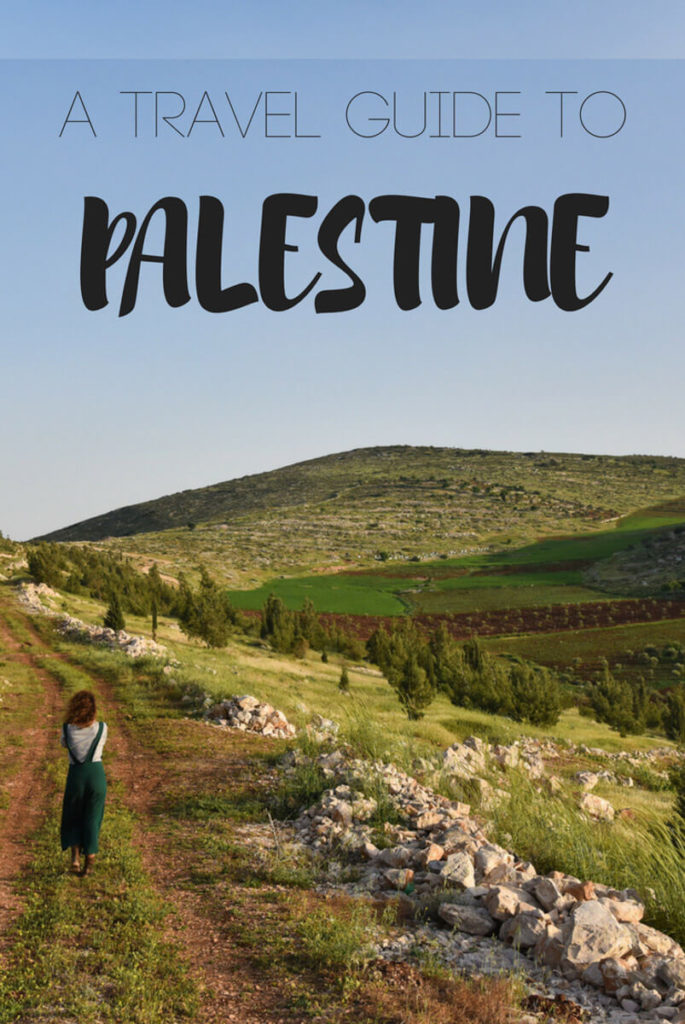

In this Palestine travel guide you will find:
Table of Contents
- Safety in Palestine
- Books I recommend
- The people and religion
- Detailed costs
- Day 1-3 – Jerusalem
- Day 3-5 – Bethlehem
- Day 5-7 – Hebron
- Day 7-9 – Ramallah
- Day 9-11 – Nablus
- Day 11-14 – Jericho
- Jenin – 2 extra days
- Zababdeh – 2 extra days
- Qalqilya – 1 extra day
- More information
💡 Traveling to Palestine – Quick travel tips
Wait, West Bank or Gaza? – You probably know this already but Palestinian territories are divided into two regions: the West Bank and the Gaza Strip, both separated by the state of Israel. You can’t enter Gaza unless you are a journalist or an NGO worker.
This article is for those traveling to the West Bank.
If you wish to travel to Gaza , read our travel guide there.
How to travel to Palestine – There are no international airports in Palestine, so you can only enter overland through Israel. The Palestinian border is controlled by the Israeli authorities.
Read more: Israel – Jordan border crossing .
Visa for visiting the West Bank – A Palestinian visa doesn’t exist. If you are in possession of an Israeli visa, you can visit the West Bank. Most nationalities, especially EU countries, USA, Canada, Australia, and Japan, can get a free visa on arrival. For more information, check out this link to see if your visa situation.
Israeli stamps? – The Israeli authorities don’t stamp passports anymore. Instead, they give you a slip containing all your personal information, which you need to keep with you if want to travel to the West Bank. This is quite a controversial topic. You can find all your answers here: Avoid Israeli stamps – FAQ .
Currency – In Palestine, the currency used is the Israeli Shekel. 1USD = 3.60ISL . Exchange offices are available throughout the country.
Language – Arabic is the official language. A large proportion of the Palestinian population is well-educated and many speak good English. Taxi drivers and shopkeepers speak very basic English.
When to visit Palestine – The West Bank is a year-round destination, with slightly cold winters and moderately hot summers. Some desert parts, though, like Jericho, can get extremely hot in summer. I would say that either spring or autumn would be the best time to travel to Palestine.
Transportation – Since both the Israeli authorities and settlers need to drive throughout the region, roads are in a very good condition. The West Bank also has an efficient public transport system, connecting all cities and towns.
Typically, you have two options: big buses, which are cheaper but slower and less frequent; or serveece , which are brand new yellow mini-vans that are slightly more expensive but faster and way more frequent. Within cities, towns and between small villages, shared taxis are also very common.
Hitchhiking – While backpacking in Palestine, I hitchhiked five or six times and I never had to wait for more than ten minutes and, even in smaller areas and towns, some cars were stopping voluntarily, asking me if I needed a ride to somewhere. Very rarely, they will ask you for money. It only happened to me once.
Internet / SIM Card – High-speedWi-Fi is available throughout the country. You can buy either a Palestinian or an Israeli SIM card. Palestinian SIM cards are cheap but only have 2G not 3G, so if you want good internet data you must buy an Israeli one, which can only be bought in Israel or in border cities like Kalandia, close to Ramallah. A brand new SIM with one month’s worth of data and calls costs around 90ISL (25USD).
Read: A guide for traveling to Syria (How to get a visa + tips)

⚠️ Is it safe to visit the West Bank and Palestine?
You may also be interested in which countries in the Middle East are safe to visit
For the past few years, whatever you have heard on the news in relation to the war with Israel, has happened in the Gaza Strip, which is an isolated, hermetic and inaccessible piece of territory.
The West Bank is a totally different place that has lived in peace (despite a few clashes) for almost twenty years, since the Second Intifada .
🚑 Travel Insurance for Palestine
Get IATI Travel Insurance :
- Covers full travel in Palestine
- Good budget backpacking plans
- It covers senior citizens too
- Readers of this blog can get a 5% exclusive discount .
📚 Recommended books for traveling to the West Bank and Palestine
Palestine travel guide by Bradt – The only exclusive book guide to Palestine. Bradt is one of my favorite traveling brands as they give so many tips for the independent traveler and plenty of local insights.

Israel & West Bank travel guide by Lonely Planet – You can also buy the combo from LP, although it is not very comprehensive for the Palestinian Territories.
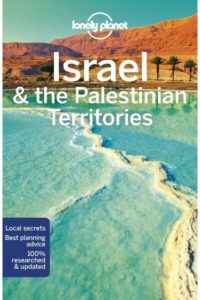
Walking Palestine – If you are a trekking lover, this is the best book for trekking in Palestine out there.
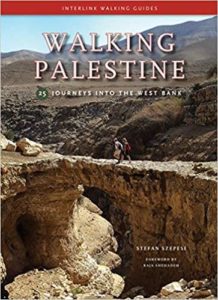
🕌 People and religion
After traveling to practically all the Middle Eastern countries , I will dare say that Palestinians one of the most hospitable peoples in the region.
Either because they rarely see foreigners, have an international bad reputation due to the Israeli conflict or just because they are kind by nature, the fact is that you should always expect loads of coffee, food and house invitations.
Traveling in the West Bank is extremely pleasant.
Palestine is a Muslim country, Sunni Islam being the most practiced religion. Hebron , Nablus and Jenin are more traditional and conservative, so you should always dress modestly there. Ramallah, a surprisingly cosmopolitan capital, is more laid-back, so is Bethlehem, the city with the largest Christian population.
Home to some of the most important Biblical sites in the world, Christianity also plays an important role in the West Bank, not only in Bethlehem but also in several Christian villages around Ramallah and Jenin, like Taybeh and Zababdeh, where even local breweries can be found.
Read: A travel guide to Beirut
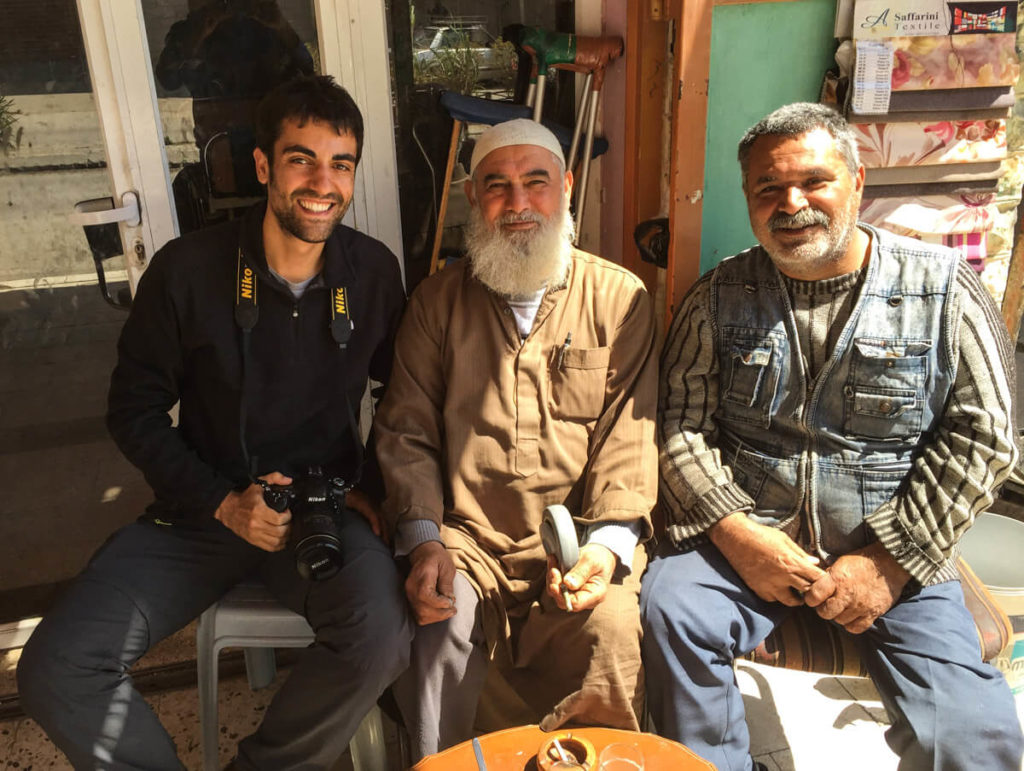
💰 Travel to Palestine – How much does it cost?
You will be surprised if I tell you that the West Bank is not a budget backpacking destination, with similar prices to Greece and Portugal. Since accommodation is pretty expensive, I would say that you can’t travel for less than:
a minimum of 25-30USD a day
Accommodation
Airbnb – Definitely, the cheapest option for a couple. You can find double rooms for as little as 20USD.
Hostels – The cheapest if you are backpacking solo but, honestly, they are pretty expensive for what you get. They are available throughout the country and prices range from 50ISL (14USD) to 75ISL (20USD).
Hotels – Personally, I didn’t stay in any hotels, as private rooms were too expensive. Typically, you won’t find anything cheaper than 30USD or 40USD.
Please note that you can find further details on where I stayed further down, in the ”Travel Itinerary” section.
Fast food is cheap but, if you want a bit of a change from shawarma and falafel, you will have to spend some more money.
- Street falafel – 3-5ISL (80¢ – 1.40USD)
- Shawarma – 8-15ISL (2.20USD – 4.10USD)
- Kebab – 10ISL (2.80USD) per piece
- Half a roast chicken with rice – 25ISL (7USD)
- Proper, good Palestinian meal – 40-75ISL (10-20USD)
- Beer in a bar – 15ISL – 25ISL (4-7USD)
- Beer in a store – 5ISL (1.40USD)
Transportation
These are the prices of some of the bus, mini-van and shared taxi journeys I took:
- Serveece (mini-van) from Hebron to Ramallah (53km) – 27ISL (7.50USD)
- Bus from Ramallah to Nablus (52km) – 11ISL (3USD)
- Shared taxi within the city of Bethlehem – 3ISL (80¢)
Read: Guide for traveling to Iraqi Kurdistan – Everything you must know
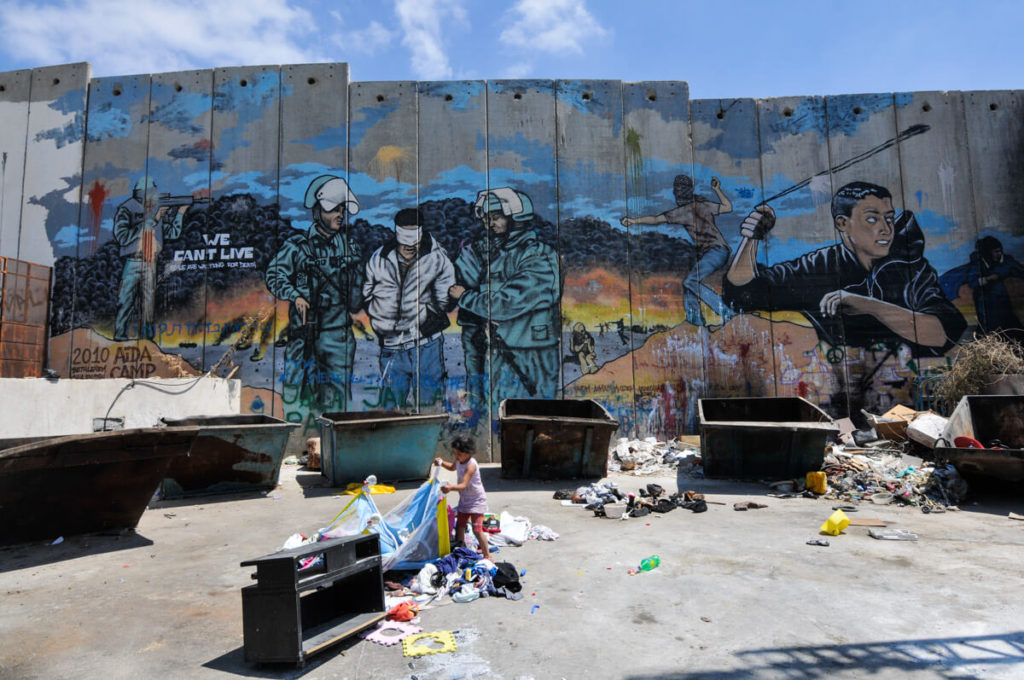
🍲 Palestinian food!
Like its neighbor Lebanon , Palestine is a Mediterranean country whose cuisine goes far beyond just shawarma and falafels, as many people believe.
From delicious fresh salads, including hummus and baba ganouj , to more elaborate stews and roast dishes, where olive oil is king; if you can afford it, in Palestine, you can also enjoy your way through food.
These are some of my favorite dishes:
Makluba – The Palestinian dish par by excellence. Apparently, there are many variations but the one we ate had chicken, rice, cauliflower and eggplant. Makluba literally means ” upside-down ”, because, when it’s being cooked, the chicken is placed at the bottom of the pan so, when it’s ready, you pour out the contents, leaving the chicken on top.
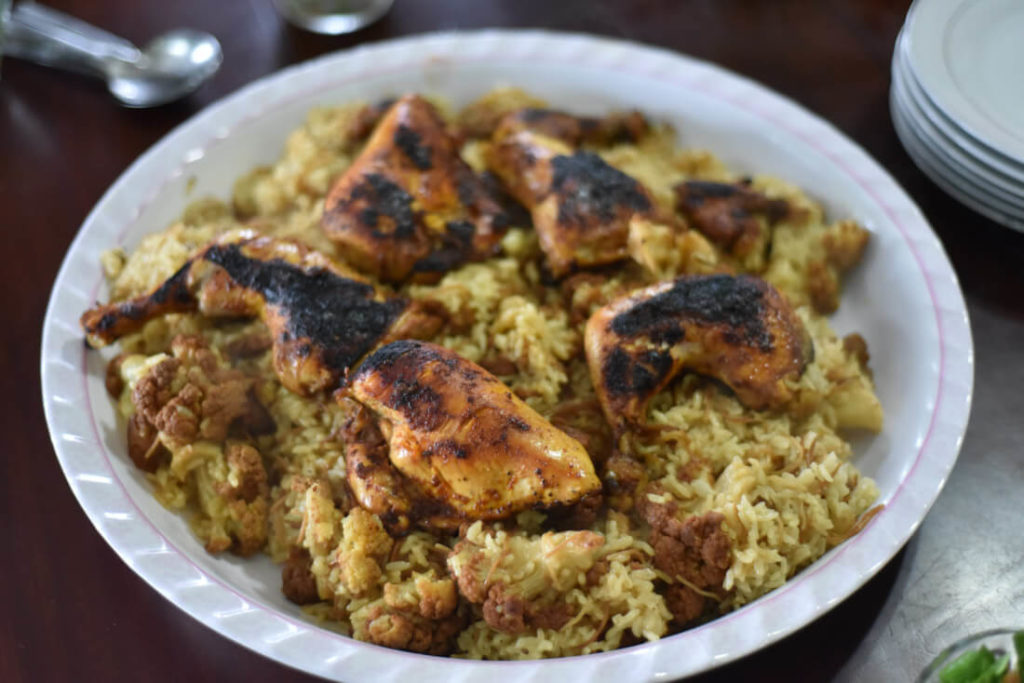
Msakhan – It consists of roast chicken placed on an oily slice of bread and topped with chestnuts and loads and loads of onions. It’s quite a heavy meal, so Palestinians have it for lunch.
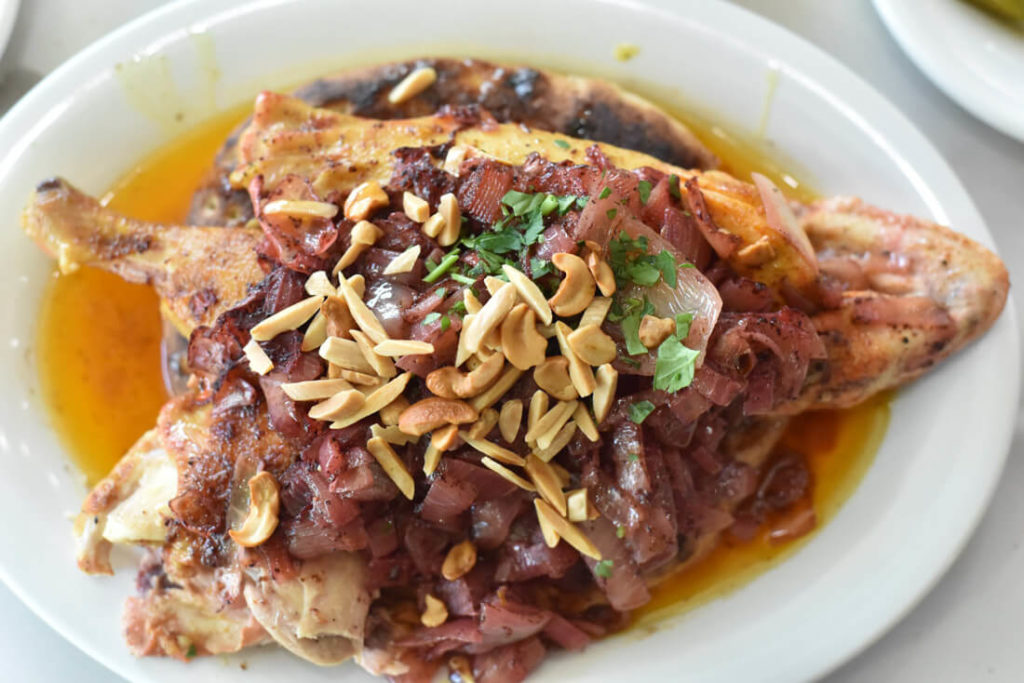
Fatteh – This is not only Palestinian but from all the Levantine region. it has flatbread, olive oil, yogurt, chickpeas and loads of nuts. It a super powerful breakfast. I freaking love it 😀

📍 Visiting Palestine: A 2-week backpacking itinerary through the West Bank
COVID travel insurance is mandatory for traveling to both Palestine & Israel I strongly recommend IATI Insurance : COVID-19 coverage + 5% discount 5% discount if purchasing via this link
I spent 40 days traveling in the West Bank and Jerusalem and still I couldn’t visit everything I wanted to. But I like to travel slowy, spending 3 or 4 days in each place.
That’s why, in my opinion, if you only have 2 weeks, the itinerary suggested below is totally feasible. The good news is that, since the region is pretty small, distances between each destination are short and quick.
Map of the Palestine 2-week travel itinerary
Jerusalem – Day 1-3
Why go? Today, Jerusalem is part of Israel but the eastern part of the city is completely inhabited by Arabs. If Palestine ever becomes an independent state, East Jerusalem would be capital of the country.
Being the holiest place for the three main monotheist religions (Christianity, Islam and Judaism) in Jerusalem, if you wanted, you could spend an entire eternity exploring and wandering around the Old City. I spent 10 days there myself but you only need a few days to visit the main sites.
Do you want to visit Jerusalem with a professional local guide? CLICK HERE TO LEARN MORE
Things to do in Jerusalem – Highlights
Western Wall – One of the most important landmarks in the city and a very holy place where, every day, thousands of Jews come to pray and venerate it. It is also called the Wailing Wall as, during the Ottoman period, Jews would go there and lament the destruction of the previously destroyed Temple Mount.
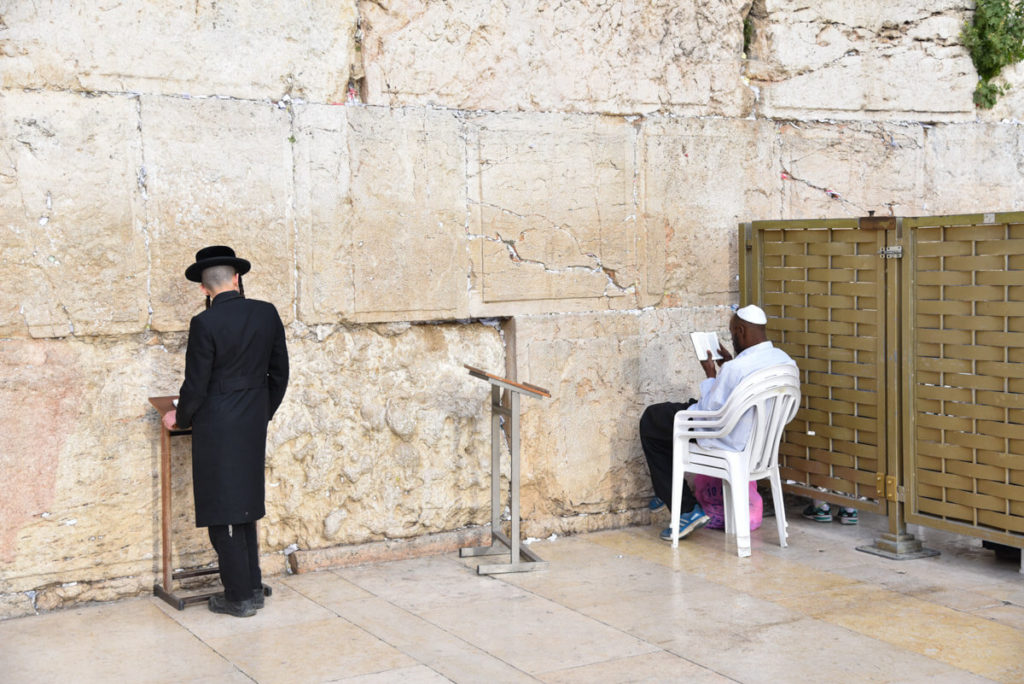
Church of the Holy Sepulcher – Whether you are religious or not, the Church of the Resurrection is an impressive building, where, apparently, Jesus was crucified. You can also find his empty tomb, from where, according to Christians, he rose from the dead and ascended to heaven.
Temple Mount / Al-Haram ash-Sharif – A real landmark, as this is one of the holiest places for both Jews and Muslims. The Dome of the Rock is believed to be the place from where Prophet Mohamed stepped to heaven. The last time I was there, in March 2017, it was only possible to visit in the morning.
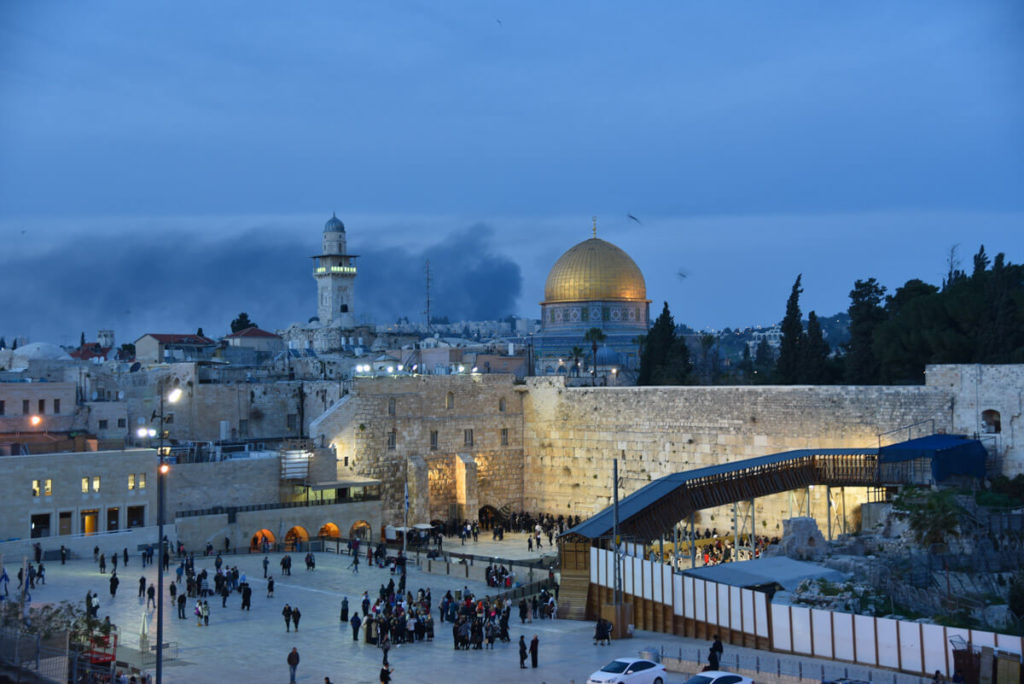
Hang out at Yehuda Market and around – For some reason, all travelers always finish their day at Yehuda Market, which is a regular market that, at night, turns into a bunch of small alleys where you can find budget food, beer and an awesome vibe, both local and international. Around this area, you can also find plenty of pubs and bars. Location: 31.784976, 35.212340.
Mount of Olives – According to the Bible, the Mount of Olives is the place where the Judgement Day will start. And not only that, it is also a great place to watch the sunset over the Dome of the Rock.
Where to stay in Jerusalem
Budget Hostel – Abraham Hostel – One of the most famous hostels in Jerusalem. Located in the center of the new part of the city, this hostel is the best place to socialize and meet other travelers alike. The owners are great and they organize all sort of activities: from endless tours to pub crawls and much more. This is one of the greatest hostels I have ever been to.
Mid-range Guest House – Allenby2 B&B – This very cozy hotel has been here forever, with hundreds of positive reviews and a very central location. It has a lovely garden, very warm staff and free coffee and chocolate. Overall, a great option for mid-range travelers.
Mid-range Hotel – Hotel Hashimi – A pretty cool hotel in the heart of the Old City with stunning views to the Dome of the Rock.
How to get from the airport to Jerusalem
There are two options. Bus nº485 costs 16ISL (7USD), departs every half an hour or so from the first floor and leaves you at the Central Station.
Sherut (shared mini-vans) cost 68ISL (19USD), depart more often, are faster and leave you closer to your final destination. During Shabat, bus nº485 doesn’t run.

Bethlehem – Day 3-4
Why go? With hundreds of tour groups roaming around, Bethlehem doesn’t give the feeling that you are in the West Bank but, since this is the birthplace of Jesus, it is one of the most visited places in the Middle East.
Apart from all the Christian sites, this is a great place to easily get a close feeling of the consequences of the Israeli occupation.
Things to do in Bethlehem – Highlights
The Wall – In 2001, after the Second Intifada, Israel started building a wall, 8 meters high, which would eventually separate Israel from the West Bank. In the center of Bethlehem, the wall is decorated with progressive and Pro-Palestinian paintings, including a real painting from Banksy. Note that most Banksy paintings are fake and the only real one is the white pigeon.
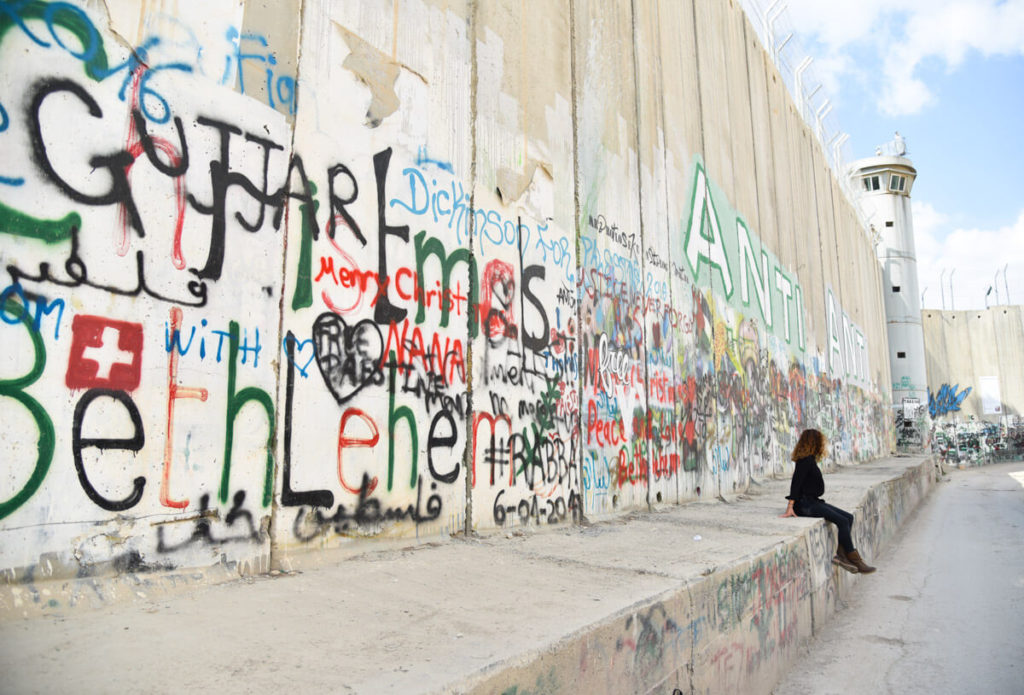
Aida Palestinian refugee camp – In 1948, after the Israeli-Arab war, the Palestinians were expelled from their native land, being forced to settle down in several refugee camps across the West Bank and other neighboring, Arab countries. Aida is perhaps the most well-known camp, although, in my opinion, it is also the most commercialized. The wall is built right beside it and has some very cool graffiti on it.
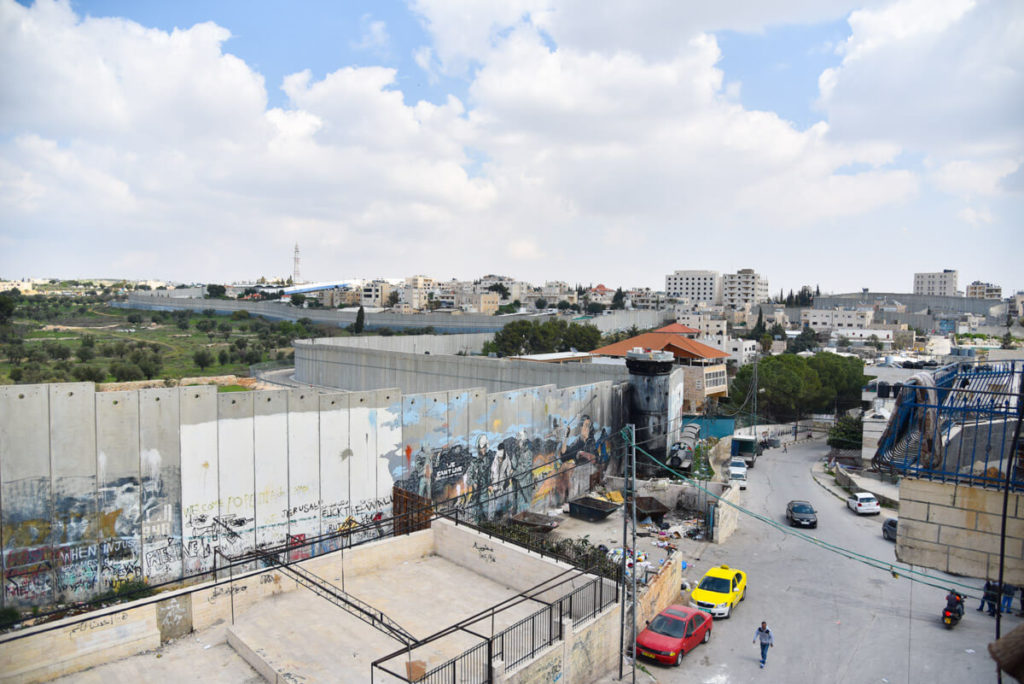
Dheisheh Palestinian refugee camp – Less visited and way more interesting than Aida, in Dheisheh, you will see the real picture of life in a Palestinian refugee camp. The camp also has loads of very interesting martyr paintings. Actually, I did an Airbnb stay here, one of the best traveling experiences in my life.
You can read about it here: Airbnb in a Palestinian refugee camp .
Please note: Both Aida and Dheisheh are extremely safe and foreigners are always welcome. There is no need to go on a tour unless you want someone to explain the history of the camp to you. Cameras are also welcome but, if taking any portrait, ask for permission first. I t’s a good idea to spend a few dollars at one of their shops or cafés. I’ve been to more than 10 refugee camps. Any question, feel free to ask.

The Church of Nativity and the Old City – Well, you made it all the way to Bethlehem. Perhaps you should go to see the place where one of the most influential people in our human history was born, right? The entrance is free but try to get there early, otherwise, you’ll be standing in the line for hours. The old part the city is also worth spending a couple of hours in, wandering around the different souvenirs shops.
Mar Saba (Day trip) – Constructed in an isolated desert valley during the 5th century, either carved into or built on the cliffs, Mar Saba is an Orthodox Christian monastery, considered one of the oldest inhabited monasteries in the world. Today, around 20 monks live at this impressive monastery and, the surprising fact is that they still live the same way their ancestors used to, meaning that there’s no electricity and cell phones.
Entrance to women is strictly forbidden but either way, you will spend 90% of your time outside of it. How to get to Mar Saba: Located 30km from Bethlehem, if you don’t want to take a taxi, you should take a mini-van to Ubeidiya (4ISL, 1.10USD) and from there, either hitchhike or walk the remaining 5-7 kilometers. Location: 31.704939, 35.331314 .
Where to stay in Bethlehem
Airbnb in Dheisheh – Does it sound scary to you? It shouldn’t. Palestinian refugee camps have been going on over 60 years and, today, they have become mere city neighborhoods. If you really want to have an authentic and ultimate experience, you must stay here.
You can read my whole experience on this link .
Budget Hostel – Habibi Hostel – This is, definitely, the best hostel in town. Great staff, cozy and clean rooms and a good location make this an excellent budget option in Bethlehem.
Mid-range Hotel – Walled Off Hotel (Banksy) – Located right in front of the separation wall, this famous, thematic hotel is inspired by the work of the artist Banksy. Staying here must be an awesome experience. They have both dorms and private rooms. Even if you don’t stay here, you can visit the museum. Everybody says that this is such an awesome hotel.
How to get from Jerusalem to Bethlehem
Buses leave all day from the station right in front of Damascus Gate, in the Old City of Jerusalem. It takes less than 1 hour but it all depends on the mood of the Israeli authorities when crossing the border. Cost: 7ISL (2USD).
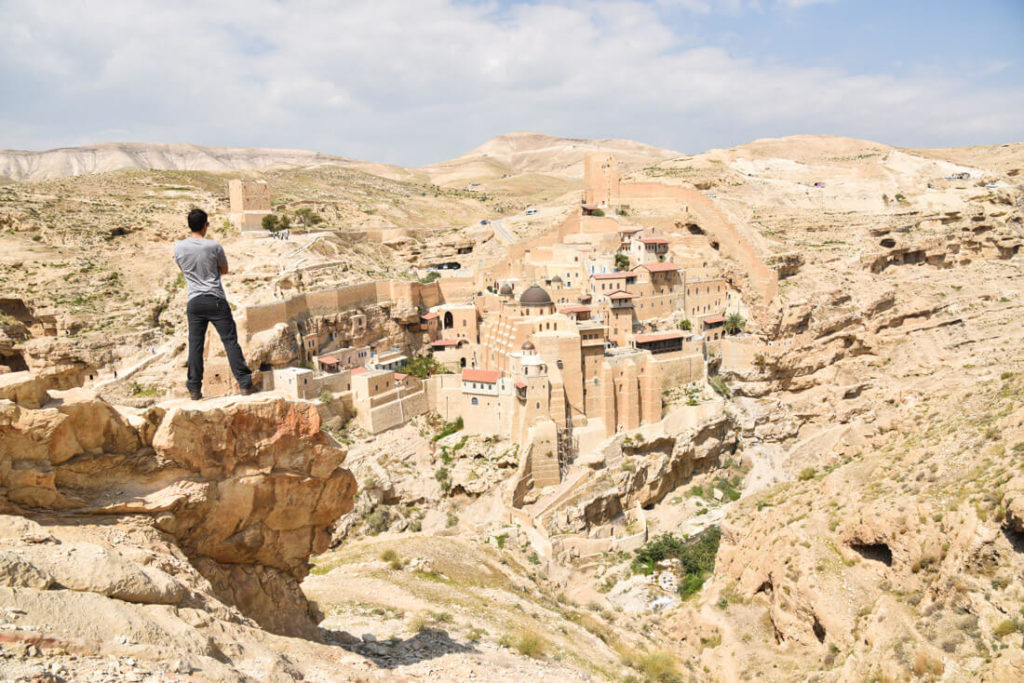
Hebron – Day 5-6
Why go? One of the most interesting places to visit in Palestine but also, the most troubled. Hebron is the only city where Jewish settlements are within the city itself. The tension is extreme, which can be seen at every corner of the city. The Mosque and Synagogue at the Cave of the Patriarchs, one of the holiest sites for both Jews and Muslims, are separated by bulletproof glass. It’s insane.
There is so much to say about this. I’ve written a full article about it: Visiting Hebron, the most troubled city in Palestine
Do you want to visit Hebron with a passionate, professional local guide, who will tell you everything about the political situation? CLICK HERE TO LEARN MORE
Things to do in Hebron – Highlights
Arab side (H1) – What used to be a busy market, full of joy and happiness, is today nothing but a semi-abandoned area, whose inhabitants can’t avoid expressing their hatred of the settlers. The old Arab quarter is full of deserted streets with random walls placed in the middle of them by the Israeli authorities. Most of the windows are protected to prevent the settlers from throwing objects at them.

Mosque and Synagogue of the Cave of the Patriarchs – A very holy place for both Arabs and Jews, this is the place where Abraham, one of the most important figures for both religions, is buried. His tomb is located right in between the synagogue and the mosque, separated by bulletproof glass. Crazy.
Jewish Side (H2) – It’s also important to go and see how the settlers live. I suggest you go there and try to talk with an Israeli. Many of them, will be happy to share their side of the story with you, as they also want to end with their international bad reputation.
Remember to check my article for further info: Visiting Hebron, the most troubled city in Palestine
Herbawi Kuffiya factory – In Palestine, there is the first and only kuffiya factory (Palestinian scarf) that has ever existed in Palestine. For further details, read this post: The Art of the Palestinian scarf – Visiting the kuffiya factory in Hebron .

Where to stay in Hebron
Budget Hostel – Hostel Hebron – The most popular hostel in Hebron. With a set of pretty new facilities and awesome reviews, this hostel is located next to the old city.
Mid-range Hotel – Queen Plaza – If you don’t want to stay in a hostel, Queen Plaza is the most popular mid-range option in town and has very good reviews.
Couchsurfing at Mo’s – Mo is a Palestinian who has hosted over hundreds of people in Hebron. He was more than happy to be included in my guide Meeting Mo was one of the highlights of my trip!
How to get from Bethlehem to Hebron
Buses leave from the station which is closer to Hebron Road. Here: 31.709617, 35.199298 . Price: 9ISL ($2.50).

Ramallah – Day 7-8
Why go? Home to a large expat community, Ramallah is a cosmopolitan city where you can hang out for few days in its numerous pubs and restaurants, besides visiting Yasser’s Arafat’s Tomb and the Historical Museum. Ramallah will definitely surprise you.
Things to do in Ramallah – Highlights
The Mausoleum and Museum – The place where the former President Yasser Arafat is buried and also a Historical Museum that showcases the story of Palestine from the Israeli-Palestinian conflict perspective.

Taybeh brewery (Day Trip) – Yes, a brewery!Located in Taybeh, the town with the largest proportion of Christians, this is the first micro-brewery ever founded in Palestine. In the mornings, they offer free tours and a beer tasting for free. You can also buy additional beers at 7ISL (2USD) per bottle.
How to get to Taybeh: Mini-vans leave from the main station and cost 7ISL (2USD). It’s a very small village, so you’ll find the microbrewery easily.
Nightlife in Ramallah – A visit to Ramallah is not complete without getting drank at any of its many bars and pubs. The locals recommended Garage, Fuego and Sangria’s to me.
Where to stay in Ramallah
Budget Hostel – Hostel In Ramallah – A cool hostel located in the city center with which is run by two brothers. Dorm mattresses are pretty comfy and they also have private rooms for couples. There’s a cool, friendly atmosphere. The breakfast is quite poor though and, at night, for a couple of USD, they cook a special dinner with products from their own farm.
Super Budget Hostel – Area D Hostel – For the most budget backpackers, Area D is a pretty popular hostel. Unlike the other two, this one is located near Ramallah Park Terminus, with great views of the mosque and its minarets.
Mid-range hotel – Lavender Boutique Hotel – For travelers with a mid-range budget, this hotel seems pretty decent and a great choice.
How to get from Hebron to Ramallah
From the main bus station in Hebron (Location: 31.528543, 35.095612), mini-vans leave all day long. Price: 27ISL (7.50USD), for a 53km trip.

Nablus – Day 9-10
Things to do in nablus – highlights.
Why go? Located in a beautiful valley between Mount Ebal and Gerizim, Nablus is a real off the beaten track destination, home to, perhaps, the most beautiful Old City in the Middle East, with plenty of narrow alleys filled with sweet and olive oil shops. Nablus is a vibrant Muslim city and the authentic Palestine where you will find the friendliest locals and the best food.
The Old City – Wandering around the huge Old Town (Qasaba) is definitely the highlight of any trip to Nablus. And guess what. Around the alleys of Qasaba you will also find the most colorful job in the Middle East.

Kunafeh! – Kunafeh , oh… yes! This dangerously delicious cheese-based pastry with orange syrup on top that can be found across the country is originally from Nablus and, Al-Aksa, a shop located in the Old City, serves what is considered the best kunafeh in Palestine and, of course, in the world. A piece of kunafeh typically costs 5ISL (1.40USD). If you don’t eat kunafeh , you haven’t visited Palestine.
Samaritans – According to the Samaritans, Mt Gerizim, one of the mountains that form the valley around Nablus, was the first piece of land that was ever created. The Samaritans are a religious group which is very close to Judaism, even though they don’t like people to say that.
The largest community of Samaritans in the world are in Nablus and they live in peace with their Muslim neighbors. They live at the top of Mt Gerizim, where you can find a museum explaining their history, and the only liquor store in town! Location: 32.200556, 35.273333.
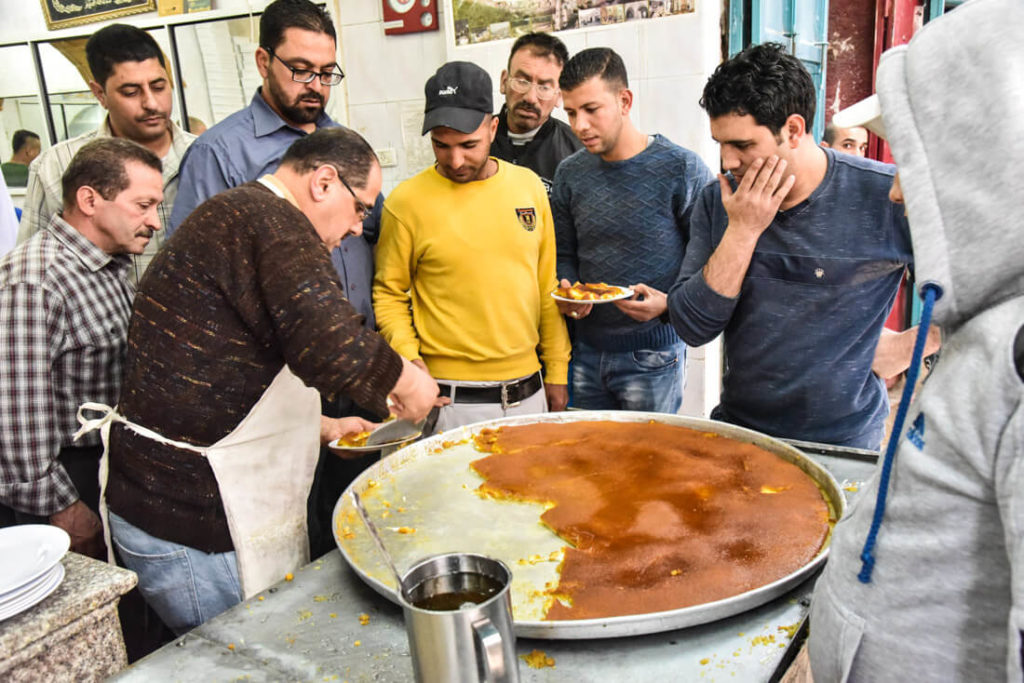
Where to stay in Nablus
Budget – Success Hostel – The most backpacking-friendly hostel in Nablus. Located in the city center, it has relatively fancy rooms, given the fact that it’s a hostel. The best option for budget travelers.
Mid-range – Khan Alwakala Hotel – This may be the most beautiful hotel you have ever stayed in Palestine, as it’s located in such a beautiful building which has been restored by the UNESCO. The rooms and facilities are great and despite being such a nice hotel, it’s not that expensive and perfect for mid-range travelers.
How to get from Nablus to Ramallah
We took a big bus from the main station and paid only 11ISL (3USD) for a 52km ride.
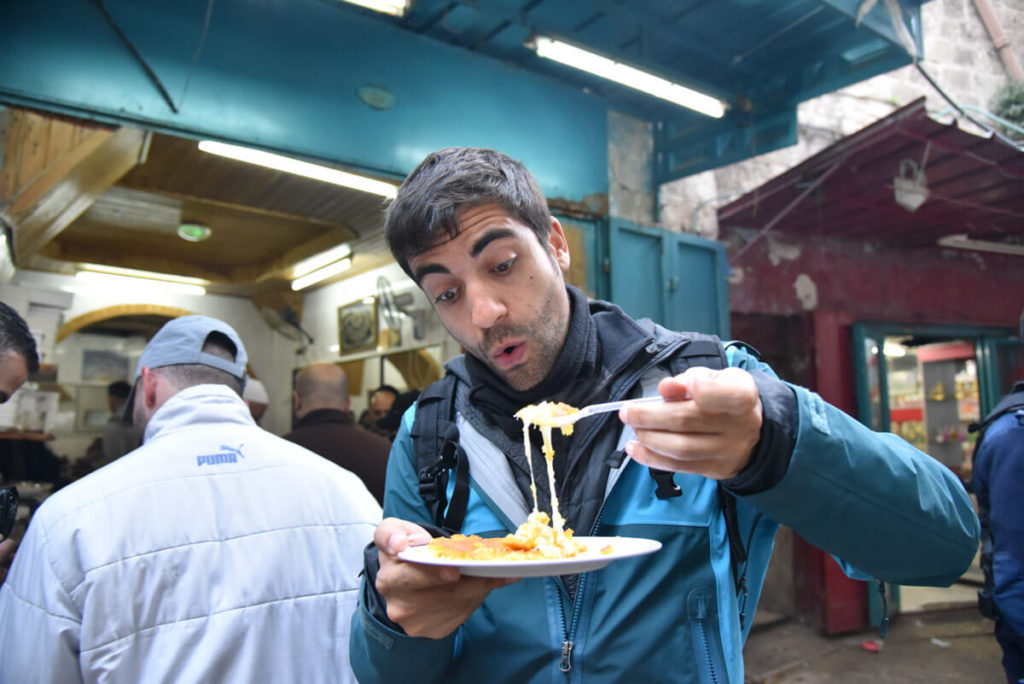
Jericho – Day 11-14
Why go? At 400 meters below sea level, this is considered the lowest city on Earth and, with 10,000 years of history, it is also the oldest inhabited city in the world. Disturbingly hot in summer but pleasant in winter, Jericho is a desert city with the largest number of touristic sites ranging from stunning Christian monasteries to ancient ruins, awesome hikes, a Bedouin culture and the gate to the Dead Sea, although it is not under Palestinian control but Israel’s.
If you are short in time and want to visit Jericho , you can book one of GetYourGuide tours. CLICK HERE TO LEARN MORE
Things to do in Jericho – Highlights
Saint George Koziba monastery – Located in Wadi Quelt, this is another beautiful Greek Orthodox monastery carved into the rocks. The entrance is free but I recommend you go there early, before the place gets filled with endless pilgrims and tourists. Dress modestly, otherwise, you won’t be allowed to get in. Inside the monastery, they offer water, tea and coffee, for free.

Trekking to Wadi Qelt – Wadi Qelt is a valley that connects Jericho with Jerusalem. Around 10km after Jericho, there are some natural springs that make an excellent day trek through rolling arid hills, Bedouin camps and striking views of the valley. Some parts of the springs are deep enough to swim in. On weekends, you might find some groups of Palestinians enjoying a picnic day. Of course, expect invitations to join them.
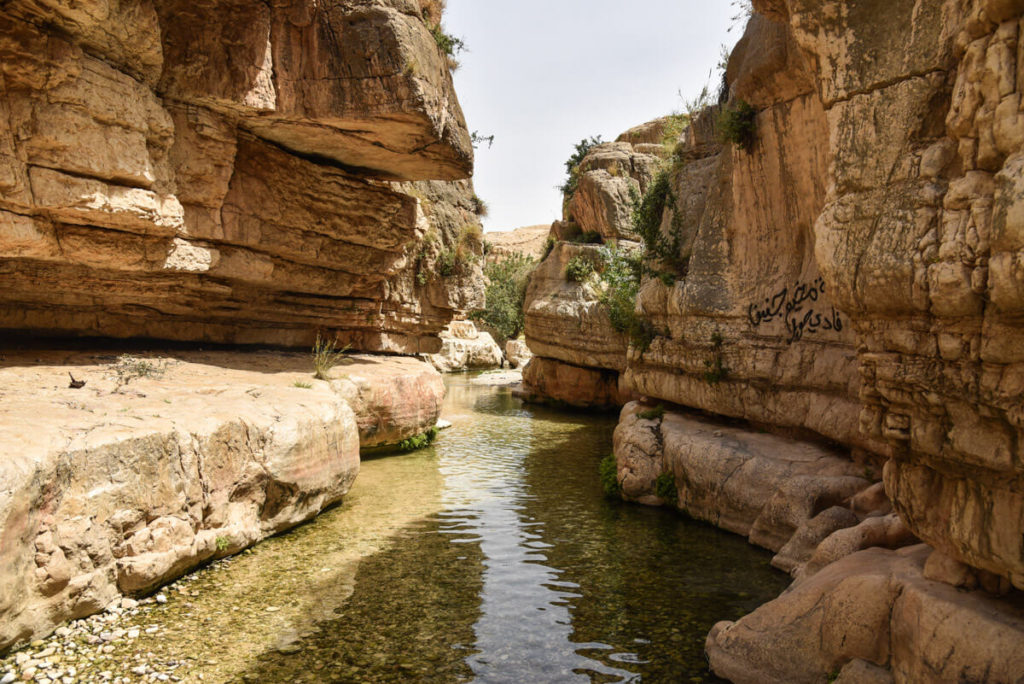
Monastery of Temptation – Apparently, this is the place where Jesus spent 40 days and 40 nights meditating and fasting during the temptation of Satan. Today, instead, you can find another Greek Orthodox monastery which is the third architectural masterpiece built on a cliff. From the monastery, you get awesome views of Jericho, the Dead Sea and the mountains of Jordan. You can easily walk to the top but, for 30ISL (8USD), you can also go up by cable car.
Hisham’s Palace – Constructed in the 8th Century (arguably), these Islamic ruins were just the second residence of some kings but they contain some of the most well-preserved Islamic mosaics that have ever been discovered. The entrance ticket is 10ISL (2.70USD).
Where to stay in Jericho
Budget Hostel – Sami Hostel – Not the best hostel ever but it is definitely the cheapest choice. It is located in Jericho’s refugee camp, a bit out of the way but there is a direct bus that runs every couple of minutes. The owner is OK and there are many backpackers.
Nicer – AubergInn – Pricier but the location is excellent and it is one of the best-punctuated hostels in town. It’s run by a lovely local family and it even has a pool, which gives it quite an edge, given the fact that Jericho is one of the hottest places in the world.
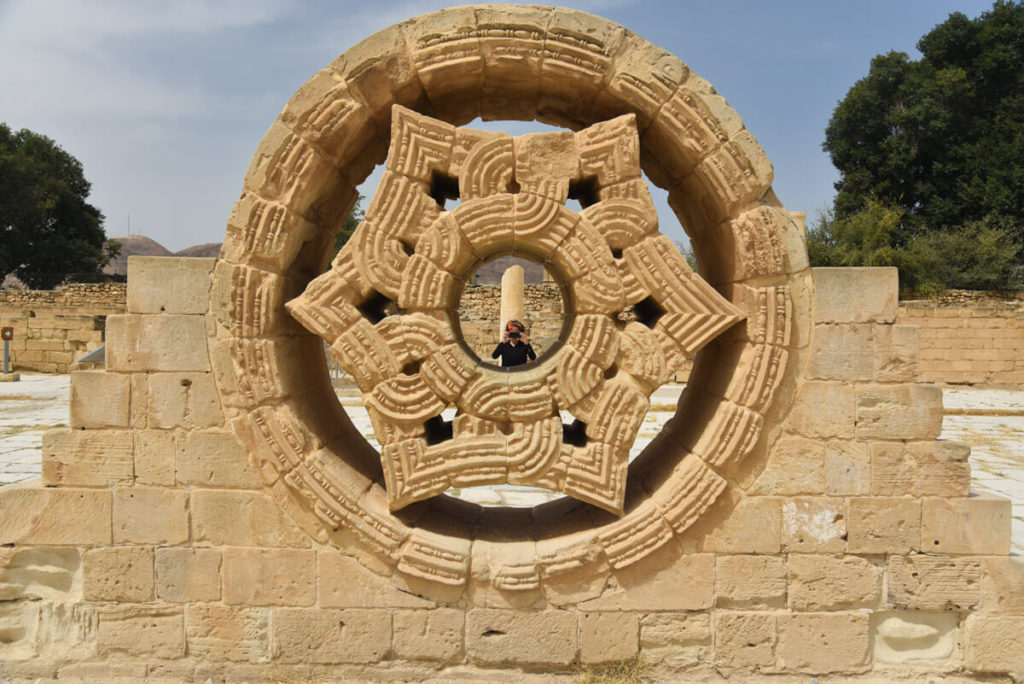
Extending your itinerary
Jenin (2 extra days).
Why go? The least visited part of Palestine, Jenin is a cozy, little city with a beautiful old town, surrounded by beautiful green scenery.
Things to see in Jenin
Besides wandering around the old town, in Jenin, there is also a refugee camp where foreigners are more than welcome. Inside the camp, there is a famous NGO called the Freedom Theater , where you can volunteer, even for a short period of time of 1 or 2 weeks. In the hostel where I stayed, I was the only person who was not volunteering there. You can find more information about the NGO here .
Where to stay in Jenin
NGO Hostel – Cinema Guest House – As far as I know, this is the only guest house in town. Like I said, most guests are volunteers working at the Freedom Theater. It’s OK for a few nights and there’s a nice atmosphere. However, I think it’s quite pricey for what you get.
How to get to Jenin
From Nablus, we took a direct bus for just 10ISL (2.70USD), 50km.

Zababdeh (2 extra days)
Why go? This barely visited part of Palestine is home to the most beautiful scenery in the region, composed of green rolling hills, olive oil trees and where you’ll be likely to see wild turtles. In Zababdeh, we also had an unexpected, peculiar experience. Read more below on ” Where to stay section ”.
Things to see in Zababdeh
Besides visiting the church built on the place where, supposedly, the Virgin Mary spent one night on her way to Bethlehem, Zababdeh is the place from where to go on short day hikes through mountain villages, fields and green rolling hills. I recommend you go hiking around Raba, a village located 6km from Zababdeh.

Where to stay in Zababdeh
When traveling in Palestine I heard of someone called Father Firas, who was a Christian priest from Zababdeh. I was told he liked to host foreigners at his church, so I decided to give him a call. Father Firaz is not only a priest but a man with a lot of influence throughout the region.
For the last few years, he has been trying to build bridges with Israel through meeting people and getting contacts from all over the world.
He is a wise man from whom you will learn a lot about the conflict between Israel and Palestine. We spent 3 nights at his church and he blessed us with tremendous hospitality. I can’t recommend Father Firas’ guest house highly enough.
Note that you don’t need to be a religious person to stay at his house but just someone interested in the conflict and history of the country. Several journalists and writers have stayed here. There is no fixed price and he will tell you to pay as much as you want.
Contact him at [email protected] or [email protected]. Phone number: +972599789282. When you arrive in Zababdeh, just ask for Father Firas. Everybody knows him.
How to get to Zababdeh
Zababdeh is only 10km from Jenin, from where you can take a mini-van for just 5ISL (1.40USD).
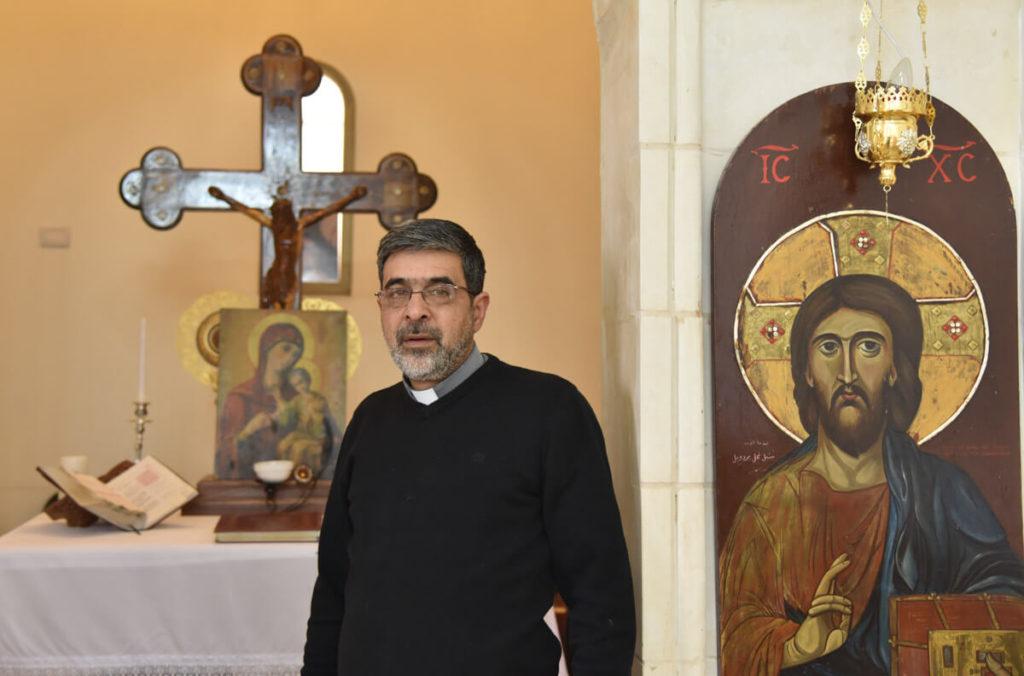
Qalqilya (1 day)
Why go? If you are interested in the Israeli-Palestinian conflict, after Hebron , this is a super interesting place, since this is the village most affected by the construction of the separation wall, as it practically surrounds the whole community, completely drowning its economy.
Many fields owned by Palestinians were left on the other side of the wall, so the Palestinian farmers have to go through insane security checks every single day.
If this was not enough, the different checkpoints are only open during certain, alternate hours a day, so quite often, the Palestinian farmers have to wait for hours at their fields before they can go back home.
The saddest part is that Qalqilya doesn’t receive the international attention that Bethlehem does, so instead of having a wall filled with cool Banksy paintings, there you just find an 8 meters gray, sad, concrete wall, 8-meters high.
How to get to Qalqilya
You can easily go by bus from Nablus on a day trip. That’s what I did.

❗ More information for visiting Palestine
📢 In my Travel Resources Page you can find the list of all the sites and services I use to book hotels, tours, travel insurance and more.
Tours – I always encourage independent travel but, if you are short in time, or just feel safer with a local guide, there are loads of tours available, and I recommend you book them via GetYourguide , as you can book them with just one click, have free cancellation, and always count with professional local guides.
For Palestine: CLICK HERE TO SEE ALL THE AVAILABLE TOURS
For Israel: CLICK HERE TO SEE ALL THE AVAILABLE TOURS
All guides and articles for traveling in Palestine destination
- A City Guide to Gaza
- Travel Guide to Hebron
- A Guide to Kuffiya Factory in Hebron
- Palestinian Refugee Camp in Bethlehem
- Things to know about Palestine
Travel guides to other countries in the Middle East
- Iran Travel Guide
- Iraq Travel Guide
- Travel Guide to Oman
- Travel Guide to Lebanon
- Syria Travel Guide
- Travel Guide to Saudi Arabia
- Yemen Travel Guide
You will also be interested in: Where in the Middle East is safe? and The most beautiful places in the Middle East .

39 comments
Thanks for writing this is a super helpful post. I just wanted to ask some questions:
1. If you’re coming from Israel, I assume you took Qalandia border crossing in? If you did, how was your experience there? 2. Do the officers at the border crossings/ airports ask you a lot of questions for staying in Palestine for so long? 3. I think I read somewhere in your blog that you’ve lived in Dubai for a while, and you may or may not be able to speak Arabic. So did you have any trouble understanding Palestinian Arabic as it was spoken on the street?
Hi, thank you for your comment. My answers: 1 – I entered from Jerusalem but, when I went to Qalandia, I re-entered Israel just to see how was there, as the border in Qalandia is the most fucked up border. In Jerusalem it was super smooth but in Qalandoa, it was very slow 2 – They do ask some questions but you just tell them the truth and it’s all right. 3 – I don’t understand Arabic but a lot of Palestinians speak English
Thanks for the info! Hopefully I can repeat your itinerary soon 🙂
No problem, any time!
Awesome article man, a side of the world rarely seen. Keep them coming 🙂
Thanks, man!
Stumbled on this article while searching for travel agencies in Palestine, and just got way more information about the country than I probably would on wikipedia. Good job, the world needs to know about this beautiful country and their people and it’s good to know that freelance journalist like yourself are taking the trouble to visit there and bring us this formation. We are in the middle of launching a company for everything related to tours and hopefully maybe we’d be able to partner or work with you in some sort way. I’ve subscribed to follow up comments will be coming back to check up.
Hello, I might be interested in working with a tourist agency in Palestine. Please, email me at [email protected]
Hi, this an interesting article. You have described very well. The really descriptive post you have shared with us.
Thanks so much for this information! It was a great resource for me. I just would like to suggest revising your bus/serveece prices because they are not accurate. Bus from Jerusalem (Damascus Gate) to Bethlehem is only 7 shekels. Serveece from Bethlehem to Hebron is 9 shekels. Palestine is an amazing place with incredibly friendly people. I hope to go back sometime soon so I can get through all of the other stuff on your list! Cheers
I am glad you enjoyed Palestine and its people. They are awesome! And thank you so much for your correction, I just updated it accordingly 🙂 Cheers,
Hi! Thank you so much for sharing this comprehensive itinerary and background. Palestine is a region I have been dreaming of visiting all my life and hope to do so this year, but I have been contemplating whether to join an organized tour or plan this out all on my own. The tours are quite pricey, but it definitely saves the hassle of coordinating visas, transportation, and general travel and accommodation. I am a female and will likely travel with my brother and maybe others. With that in mind, think it might work best like you suggest to do some parts with a tour company while spending more time in areas I am interested in on my own. How much would you say your two week itinerary costed you overall?
Hello, I spent around 25-30USD a day. I travel independently, always sleep in the most budget hotels/hostels (15USD a day) and eat at local places. If you want to stay in mid-range places and hire a guide it will be significantly more expensive.
Hi Joam Thank’s for sharing. I will go there soon on a revisit together with my 6 year old son, and we will probably stay only in Palestine. Since you love off-the-beaten-track places you will probably like my site, too: https://www.traveltwins.dk/ Best, Anders
Good luck in the West Bank and thanks for the suggestion!
This was fantastic to read. Thanks so much for sharing! I’m looking to go here and Israel this year, and it’s so nice to see this type of perspective written on the West Bank. This just makes me more excited to go! Thanks for taking the time to write all this up!
Hi Ellie, thanks for your kind comment! I am glad you find it useful. There is so much to exñore beyond Bethlehem and historical sites in Jericho. Have a wonderful trip there!
Loved it!! Very informative.
Love the way you travel 🙂 very nice and beautiful pictures!
Thank you 🙂
awesome! loved this post
cheers, enjoy Palestine!
Hello buddy, this was a great piece to read and very informative. It answered many of my questions.
However, I have few questions which hopefully you would be able to answer. If I land in Israel at Tel Aviv with an Indian passport and then need to go West Bank, then which check points or immigration centres do I have to use and clear. Also when rerurning back from West Bank to Israel, how many check points or immigration centers I have to clear so I can reach back to tel aviv airport easily.
Either way, there is only one checkpoint when entering the west bank and one when you get out. Most of the times, the checkpoint is very quick. It is seriously not a big deal.
Thanks for the quick response. Really interesting what you are doing by visiting these amazing palces which are not covered well by the media and tourism industry. So what is next on your bucket list?
First of all thank you very much for a wonderful 2 weeks tour itinerary for Palestine. I very rarely been to Arab and African countries so far, but I have plans to tour around Africa region in near future. Your complete tour itinerary for Palestine helps me to grab some ideas for my next tour, in between the photos look great. Cheers,
Very informative article ! Could you also please let us know more about the local Vegetarian/Vegan Food availability and recommendations ?
falafels, hummus, fateh… There are always many options
Thanks and very informative. We are group of 4 Chinese ladies and we want to visit Nablus Jacob’s well etc. Do u know if it is fine for us to visit on our own without a guide?
If your question is related to safety in Palestine, yes, you will be totally fine 🙂
Hello! Great post! Just a quick question, if I were to cross the King Hussein/Allenby border from Jordan, would it make sense to go to Jericho first? Is there a way to get to Jericho from the border without having to go to Jerusalem? Thanks!
Hey Maddie, yes of course, Jericho is extremely close to the border, and for very little money, you can get a taxi
I’m so glad to have come across your article!! So I’m originally Palestinian and planning my first trip ever this July. I’ll be traveling with my husband who will have to enter through the boarder and not airport. We only have 5 days what would you recommend we must visit while maximizing short stopovers on the way like stopping by Jericho since it’s close to border. We don’t mind splurging on this trip as I’ve been waiting for over 3 decades to be granted entry to Palestine. Thank you in advance
Dude your work is awesome and so helpful thank you. Do you have an Instagram account?
Hi Nimr, thanks! My IG account is @againstthecompass
Free palestine 🇵🇸🇵🇸 from the river to the sea from israeli colonialism
Leave a Comment Cancel reply
Your email address will not be published. Required fields are marked *
Notify me when new comments are added.
Join our Expeditions
From Syria to Iraq in Pakistan, Against the Compass is finally running expeditions to the most epic and off-the-beaten-track countries.
We have scheduled expeditions for every month of the year.
Latest posts
- Backpacking Venezuela Travel Guide (2024)
- How to travel to Afghanistan during Taliban rule (2024)
- How to visit Los Llanos in Venezuela
- How to visit Angel Falls and Canaima National Park
- Things to do in Haiti in a 1-week itinerary
THE 10 BEST Palestinian Territories Tours & Excursions
Palestinian territories tours.
- Cultural Tours
- Historical & Heritage Tours
- Walking Tours
- Private Tours
- Sightseeing Tours
- Archaeology Tours
- Multi-day Tours
- Ports of Call Tours
- Literary, Art & Music Tours
- Shopping Tours
- Wine Tours & Tastings
- Up to 1 hour
- 1 to 4 hours
- 4 hours to 1 day
- 5.0 of 5 bubbles
- 4.0 of 5 bubbles & up
- 3.0 of 5 bubbles & up
- 2.0 of 5 bubbles & up
- The ranking of tours, activities, and experiences available on Tripadvisor is determined by several factors including the revenue generated by Tripadvisor from these bookings, the frequency of user clicks, and the volume and quality of customer reviews. Occasionally, newly listed offerings may be prioritized and appear higher in the list. The specific placement of these new listings may vary.

1. Masada and the Dead Sea Day Trip from Jerusalem

2. Jerusalem and Bethlehem Day Tour from Jerusalem

3. 7-Night Israel Highlights and Bibleland Tour

4. Travel To Bethlehem, Jericho & Jordan River - Group Guided Tour from Jerusalem

5. Bethlehem Alternative Tour

6. Day Tour to Jerusalem and Bethlehem from Tel Aviv

7. Bethlehem, Jericho, and Qasr El Yahud Day Trip from Tel Aviv

8. Private Jeep Tour in Judean Desert from Jerusalem

9. Masada and the Dead Sea Day Trip from Tel Aviv

10. 4WD Masada Ein Gedi Judea desert Dead Sea adventure 4x4 Tour.

11. Tour to Bethlehem, Jordan River, Dead Sea Mini Group. Up to 6 pax

12. Israel Holy Land Christian Tour Package 7 days - Private Tour Package

13. Palestine Revealed: 2-Day Private Tour from Jerusalem

14. Travel to Bethlehem Half Day Guided Tour from Jerusalem & TelAviv

15. From Jerusalem: Bethlehem & Church of the Nativity Full Day Tour

16. 8-Night Israel Tour from Tel Aviv: Jerusalem, Dead Sea, Bethlehem, Nazareth, Northern Israel and Petra

17. Travel From Jerusalem To Bethlehem and Dead Sea - Daily Group West Bank Tour

18. Hebron Dual Narrative Tour from Jerusalem

19. Judean Desert Jeep Adventure from Jerusalem

20. West Bank Tour from Jerusalem

21. GoKedem 5-Day Private All-Inclusive Cross-Israel Adventure

22. Full-Day Bethlehem, Jericho, and Jordan River Tour

23. Ashdod Shore Excursion: Jerusalem and Bethlehem - for cruise ship guests only

24. kosher Israel wine tour

25. Private Day Tour: St. George's Monastery, Wadi Qelt, Mar Saba, and Bethlehem

26. Bethlehem Half Day Private Tour - Pick up from Jerusalem/Tel Aviv/Ashdod

27. Discover about Bethlehem & Jericho. Private tour/ Licensed Guide

28. Bethlehem & Dead Sea Day Tour from Jerusalem & Tel Aviv

29. Desert Safari and Dead Sea Day Trip from Tel Aviv

30. Full-day Tour to Jericho and the Dead Sea
What travelers are saying.
PALESTINE - ISRAEL - JORDAN - SINAI
Off the beaten track tours • Visit sites • Meet locals • Discuss Human Rights & Politics
- Contributions

Our Destinations
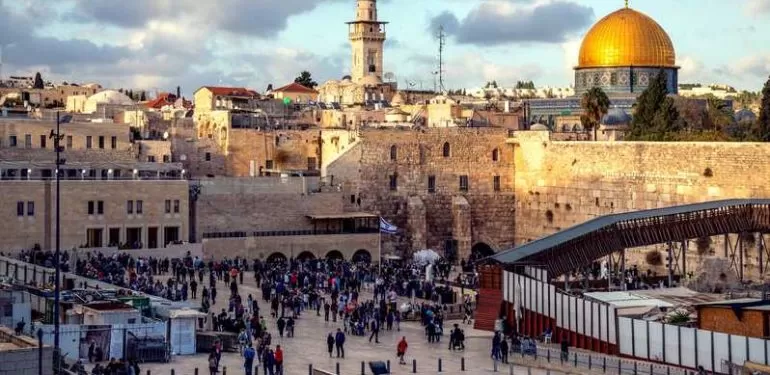
Popular Packages
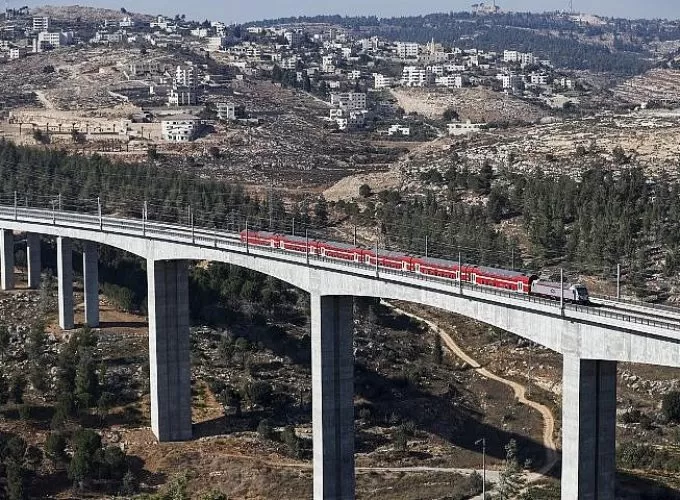
Israel-Palestine railway tour
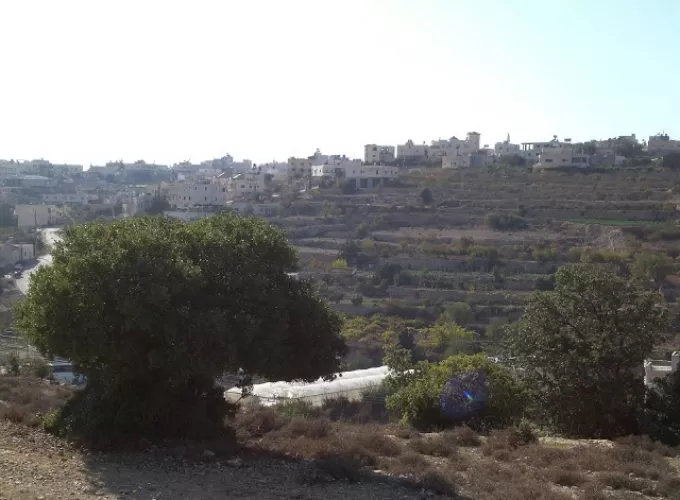
7-Day Palestine Experience
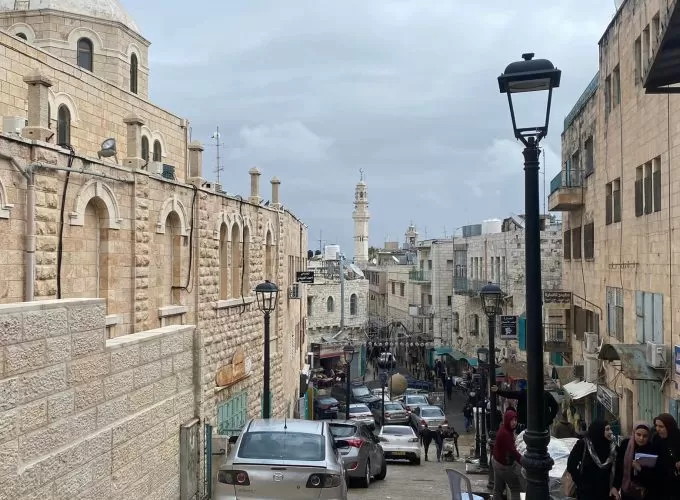
Introduction to Palestine – A Four-Day Adventure
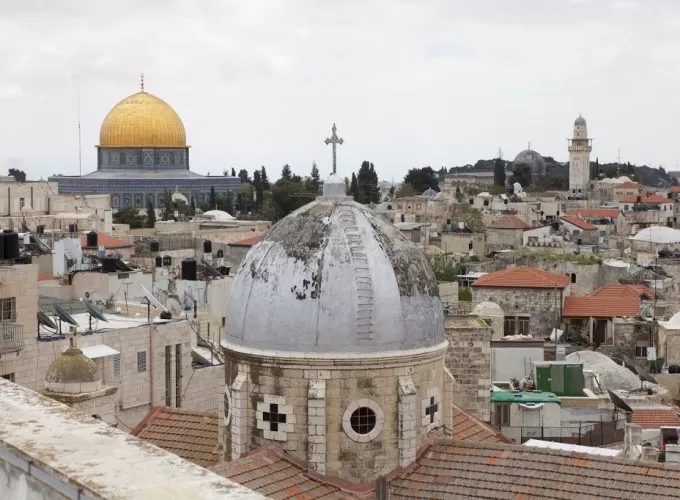
Introduction To Israel and Palestine
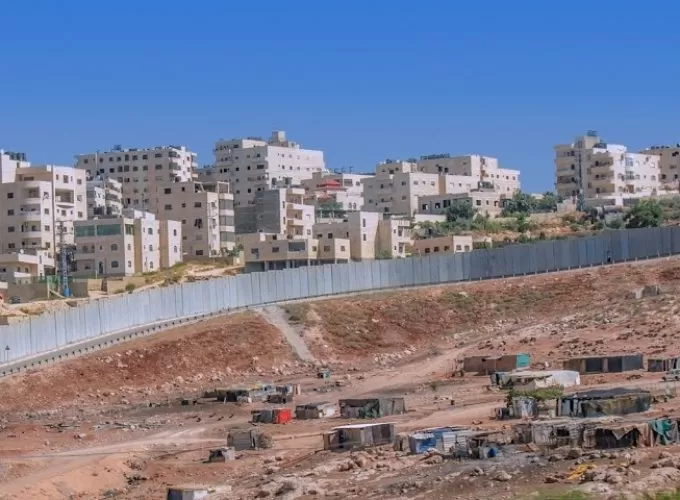
Private/Custom Tour
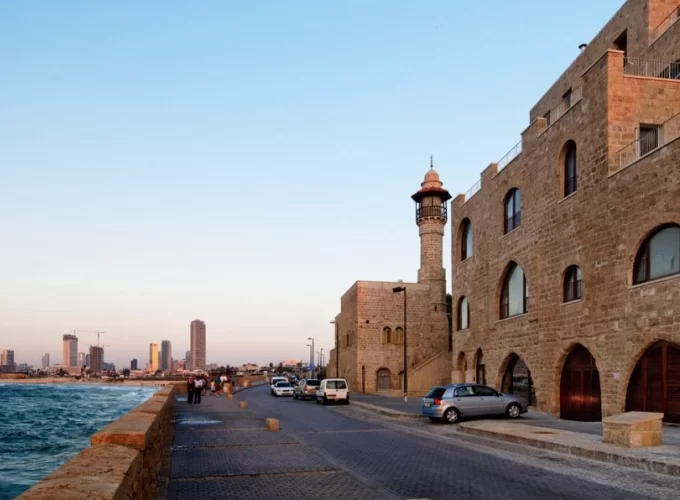
Introduction to Israel Tour – A 5 Day Adventure
Popular day tours.
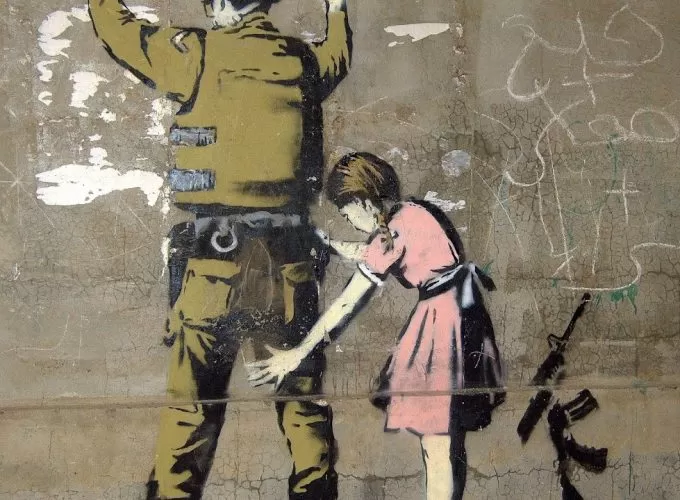
Banksy Tour
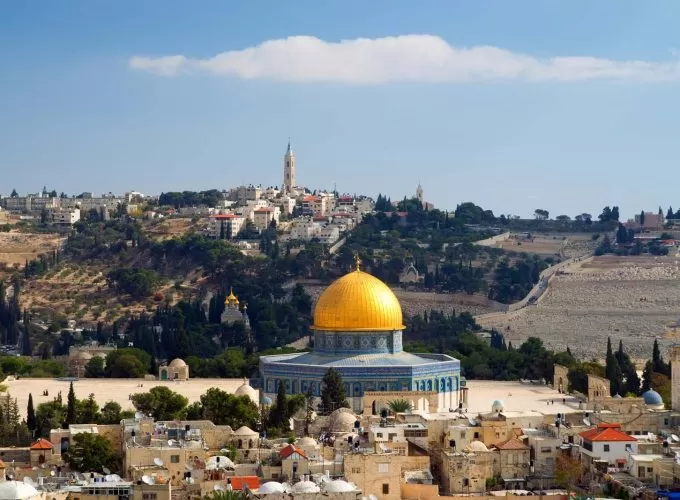
Jerusalem full-day tour from Jerusalem

Nablus and Central West Bank
Jerusalem old city tour.

Greater Jerusalem tour
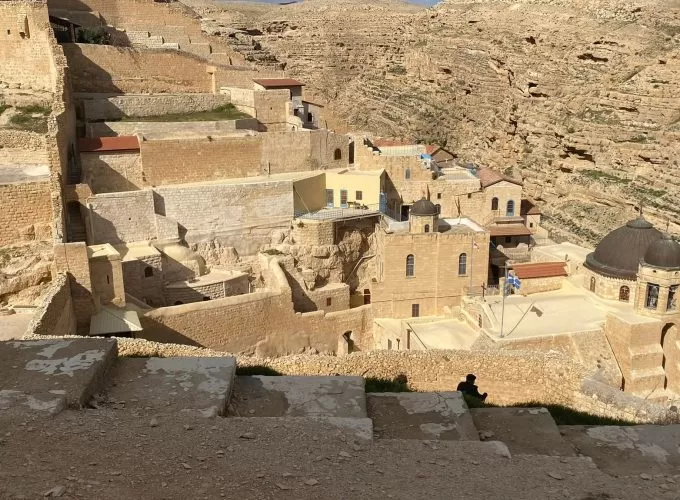
Bethlehem tour
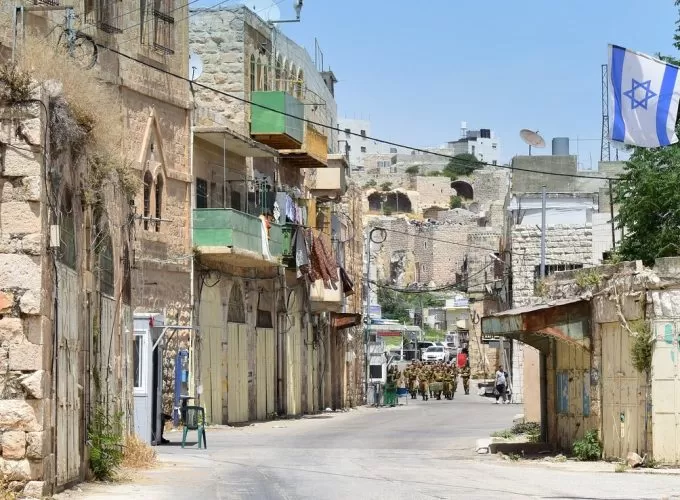
Hebron and Ramallah tour from Jerusalem

Gaza border tour
Recent blog articles.
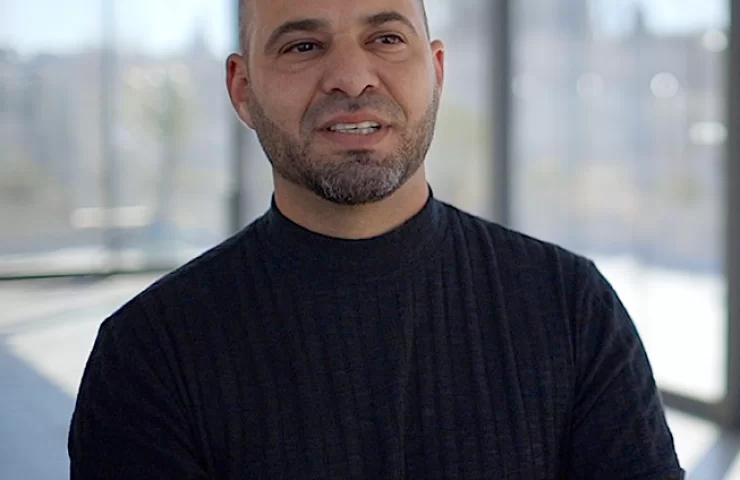
Conscientious objector, Itamar Shapira, states: “I’m a pawn in a game that not only does not end, with each revenge, it just intensifies.”
21 Apr 2024
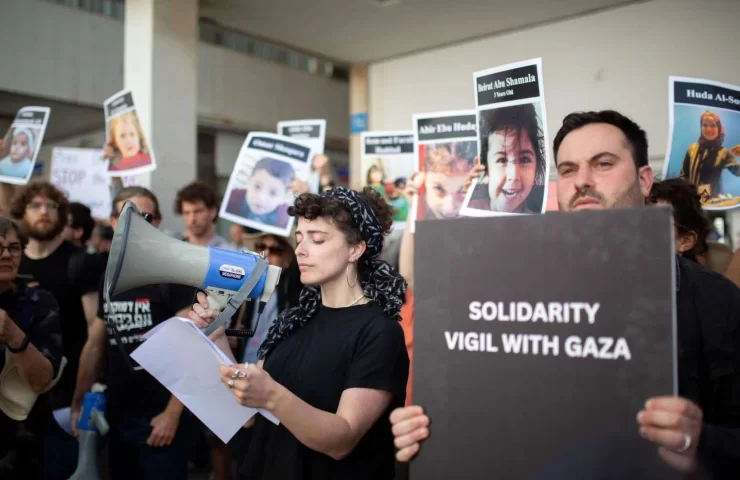
Protesters Mark 6 Months of Gaza Genocide With Vigils in Tel Aviv and Jerusalem
07 Apr 2024
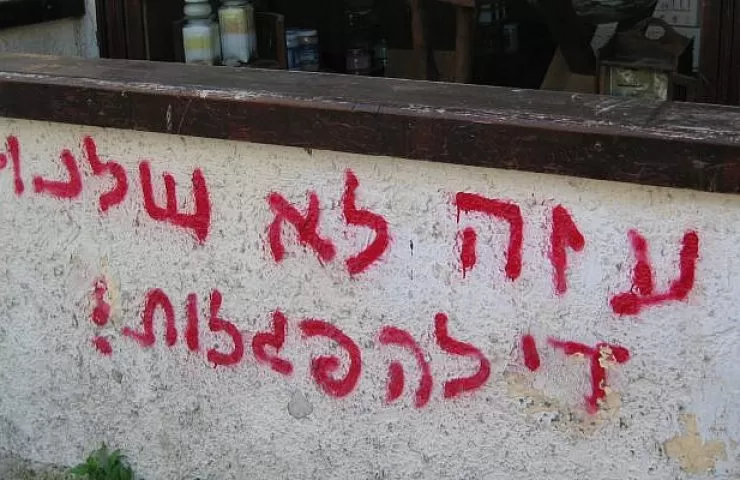
Gaza-Israel Deaths: Why are we deluding ourselves?
28 Mar 2024
Privacy Overview

Palestinian Territories
Split between the West Bank, with its sun-baked hills, chaotic cities and ancient biblical sites, and Gaza, a war-ravaged strip of coastal land sealed on three sides by Israel and Egypt, the Palestinian Territories has long been an unorthodox stop on a Middle East itinerary.
Your next trip starts here
Go from dreaming to planning with trip planning options made to help you craft your ideal itinerary.
Attractions
Must-see attractions.
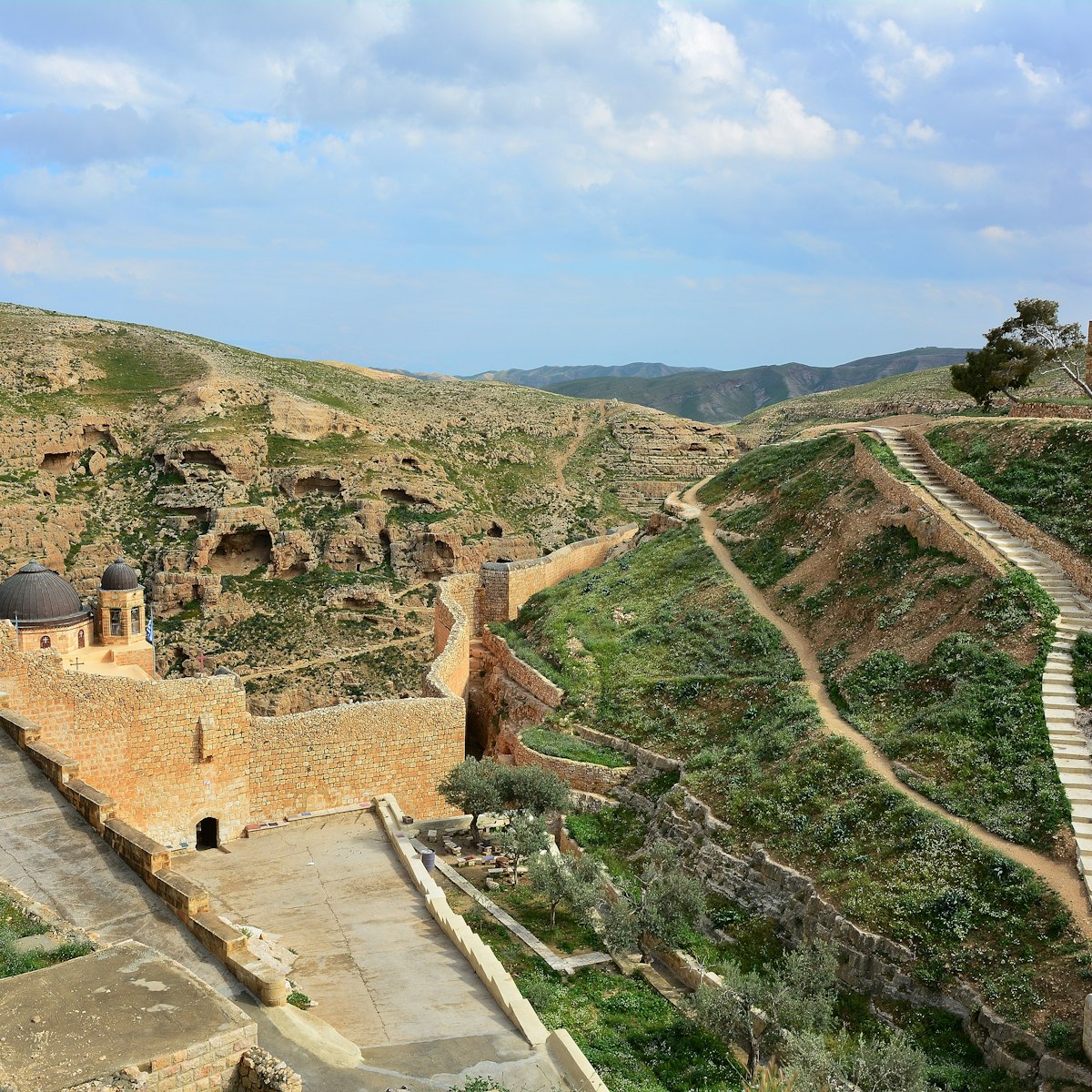
Mar Saba Monastery
A must-see on any journey through the Holy Land is Mar Saba Monastery, a bleak and beautiful 20km drive east of Bethlehem (beyond Beit Sahour).
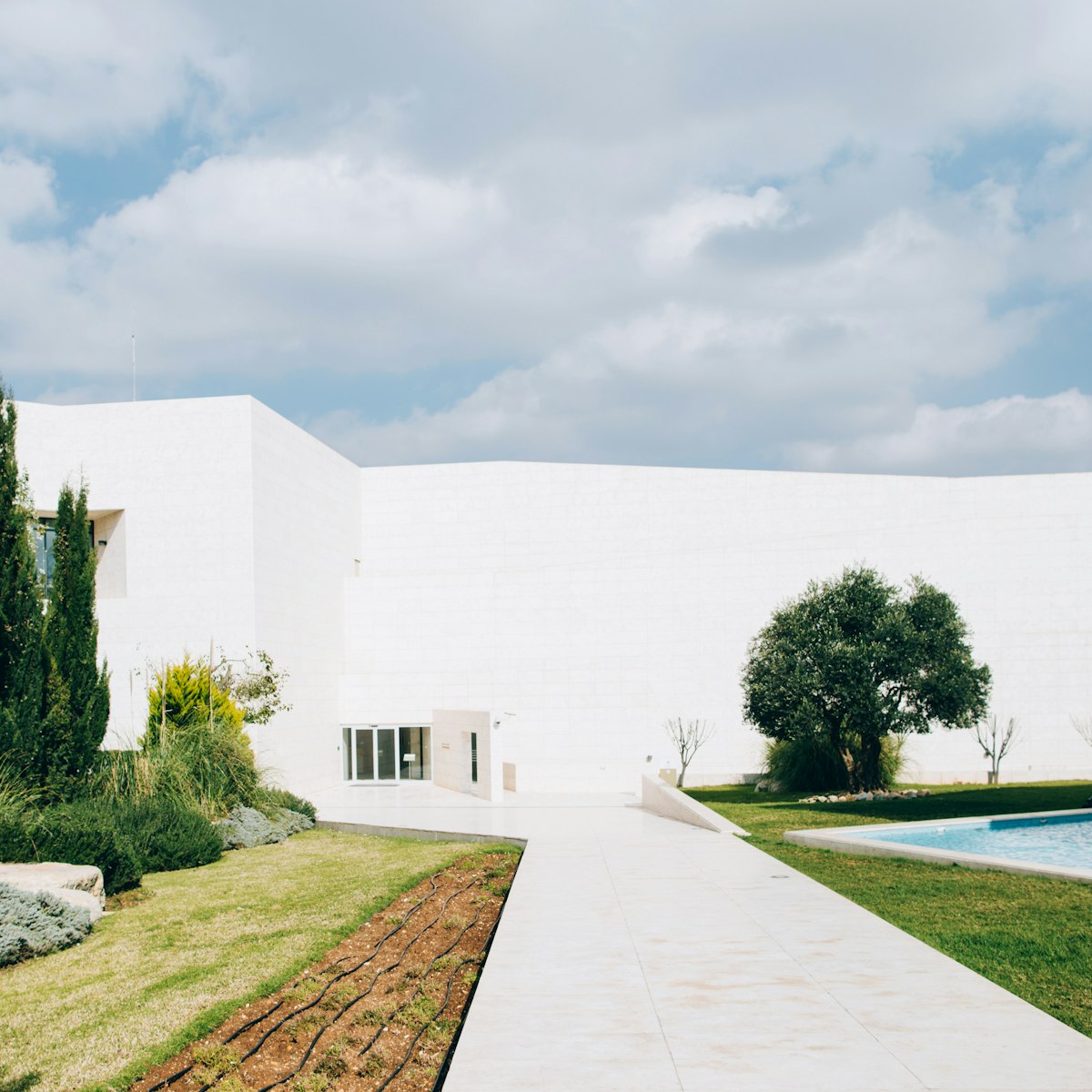
Yasser Arafat Museum
Next to the ornate tomb of the late Palestinian leader Yasser Arafat is a new museum that bears his name. Divided into two parts, the first half traces…
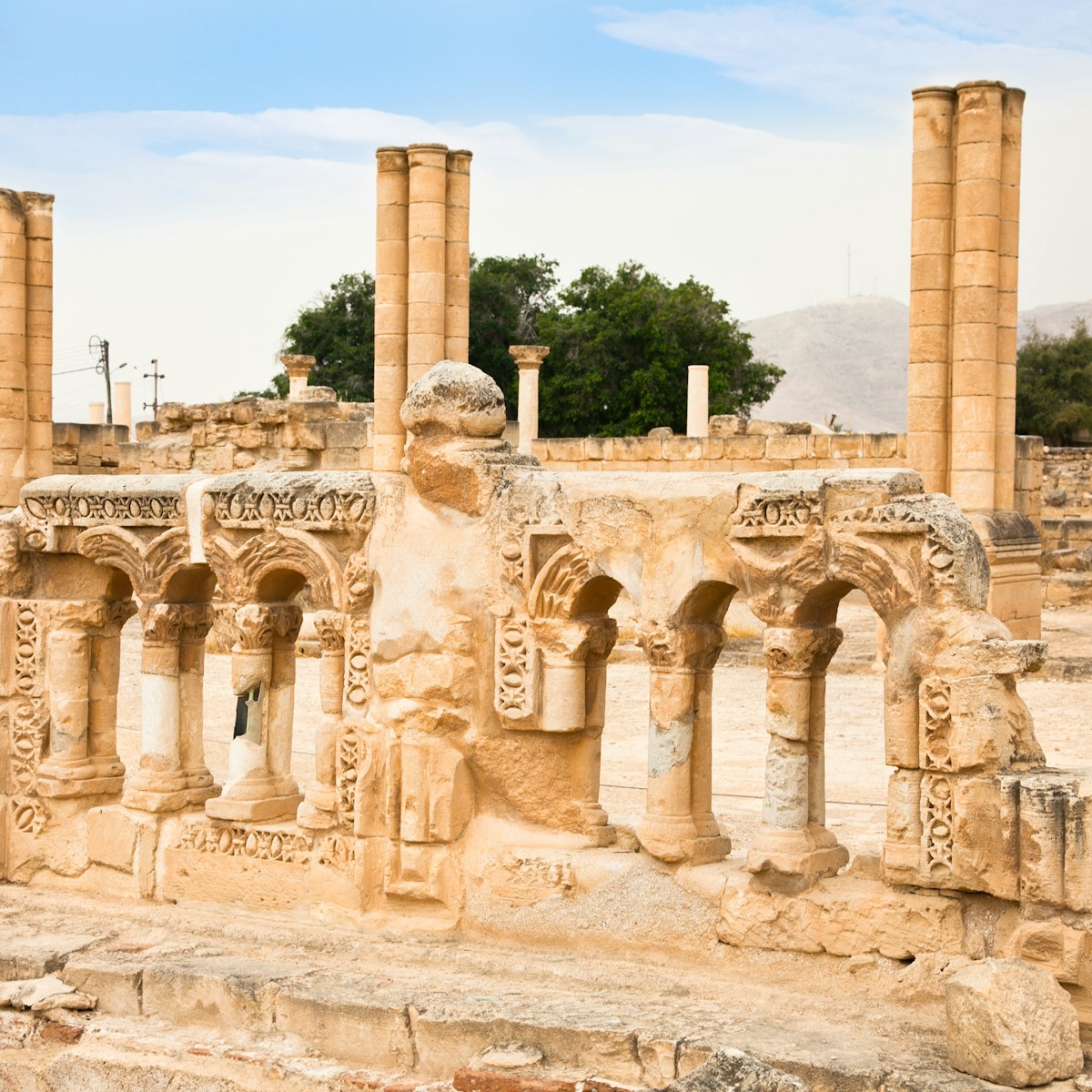
Hisham’s Palace
A short drive north of Tel Al Sultan, this is a spot not to be missed. The sprawling winter hunting retreat of Caliph Hisham Ibn Abd al Malik must have…

Freedom Theatre
Set in Jenin's refugee camp, the Freedom Theatre has persevered in the face of unimaginable odds, including the assassination of its founder, Juliano Mar…
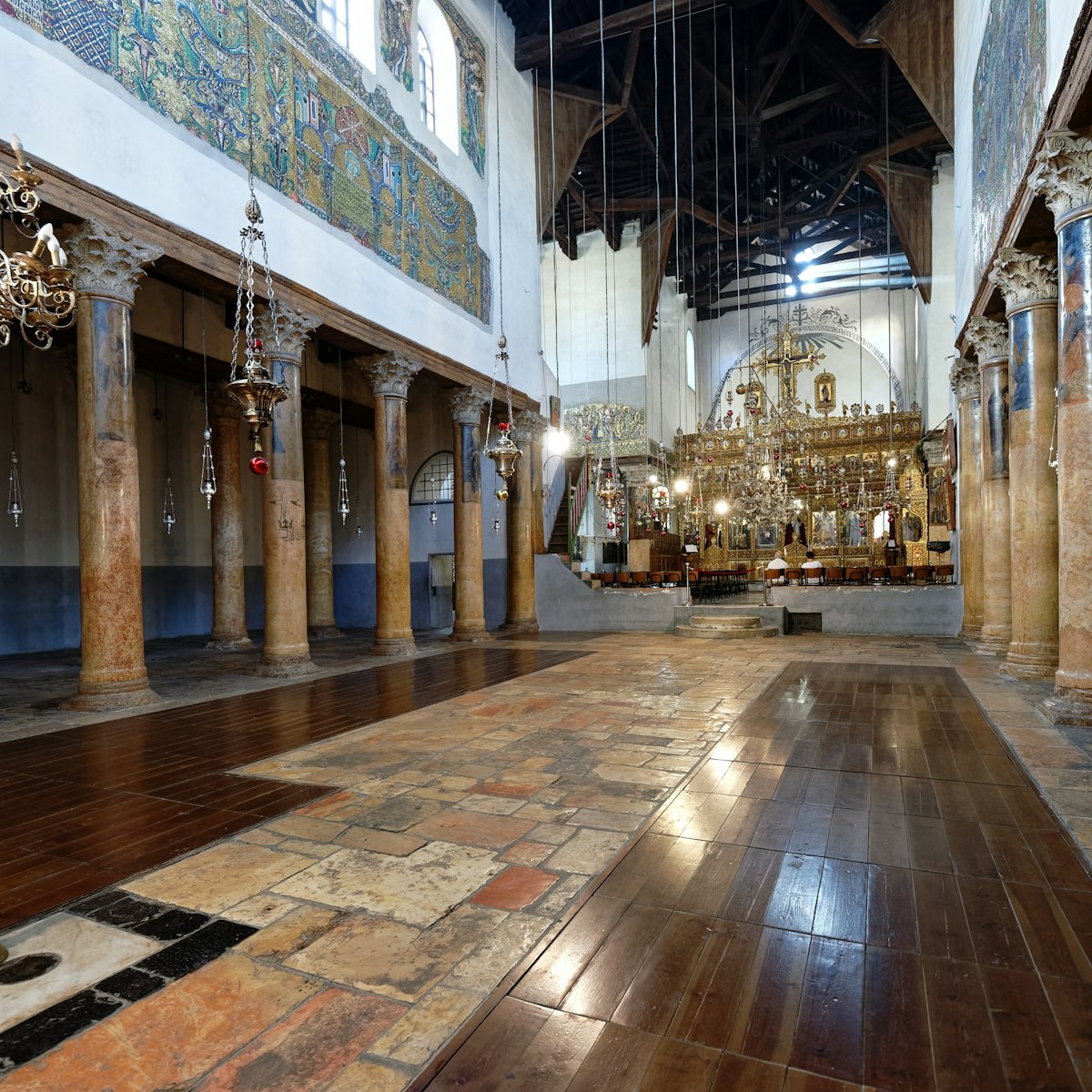
Church of the Nativity
For the millions of pilgrims who descend on the Holy Land every year, the Church of the Nativity is the main reason for visiting Bethlehem. The church,…
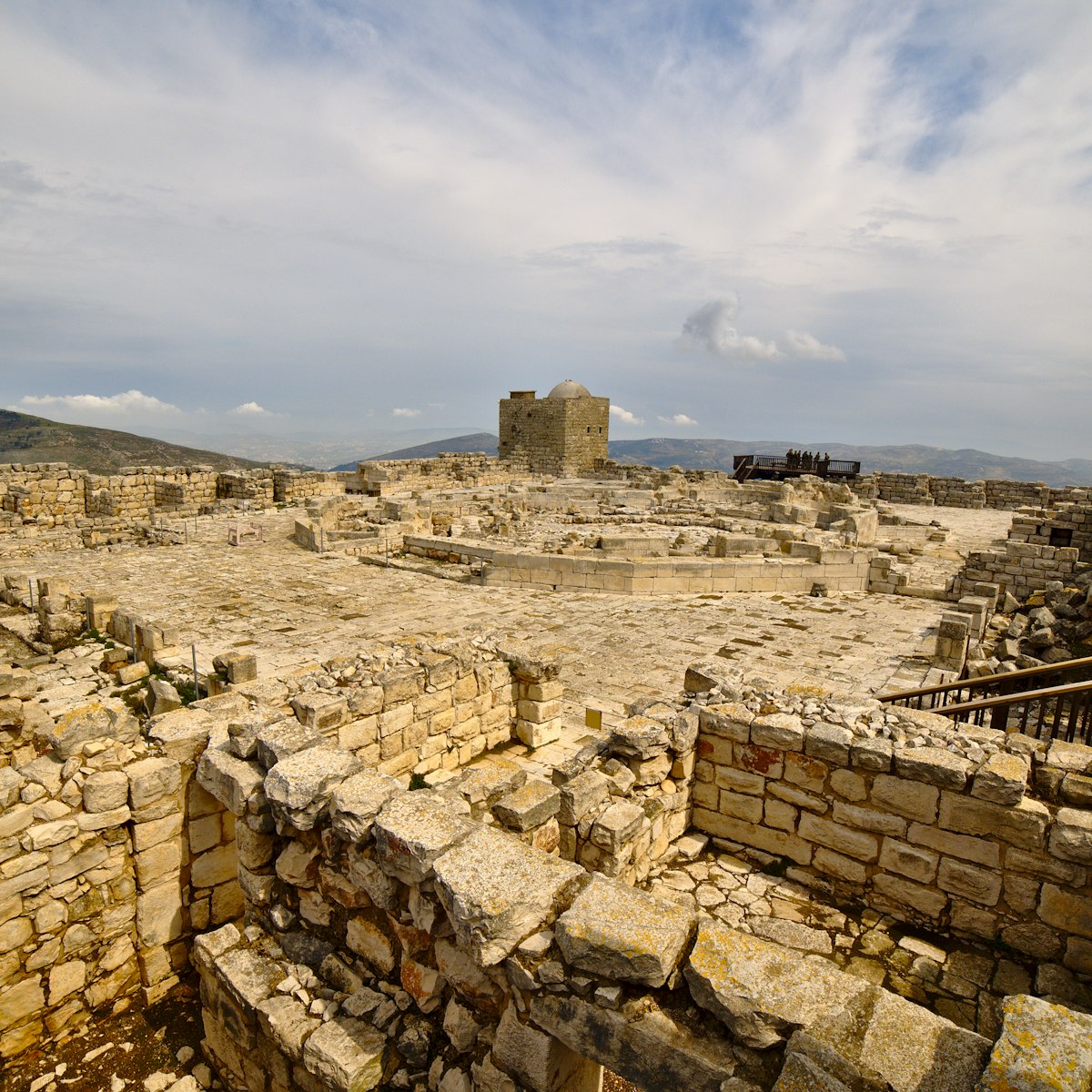
Samaritan Ruins
The ancient site of the Samaritan Temple is a 10-minute walk uphill from the village, via a locked gate: ring the intercom and a guard will let you…

Ibrahimi Mosque/Tomb of the Patriarchs
The focal point of Hebron for most visitors is the Tomb of the Patriarchs (Cave of Machpelah), known to Muslims as Ibrahimi Mosque (Ibrahim is the Muslim…

Sebastia is a collection of ruins above a village of the same name that is believed to be one of the oldest continuously inhabited places in the West Bank.
Latest stories from Palestinian Territories
Filter by interest:
- All Interests
- Adventure Travel
- Art & Culture
- Beaches, Coasts & Islands
- Food & Drink

Dec 8, 2018 • 7 min read
Some travellers prefer to avoid thinking about the previous occupants of their hotel rooms, but a new crop of Israeli and Palestinian boutique hotels have…
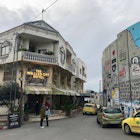
Jul 31, 2018 • 6 min read
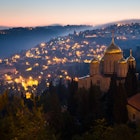
Mar 8, 2018 • 6 min read
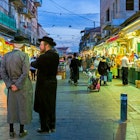
Nov 14, 2017 • 6 min read
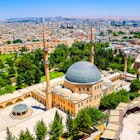
Mar 22, 2013 • 5 min read
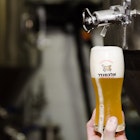
Jun 15, 2012 • 5 min read

Feb 27, 2012 • 4 min read

Sep 20, 2010 • 3 min read
in partnership with getyourguide
Book popular activities in Palestinian Territories
Purchase our award-winning guidebooks.
Get to the heart of Palestinian Territories with one of our in-depth, award-winning guidebooks, covering maps, itineraries, and expert guidance.
Palestinian Territories and beyond
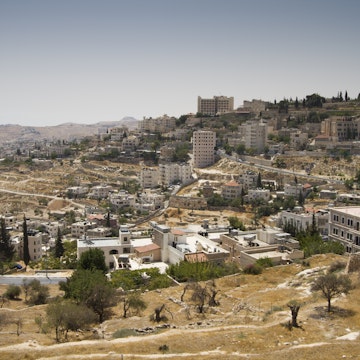
Israel and the Palestinian Territories Tours & Vacations

Intrepid does not currently operate any tours in Israel and the Palestinian Territories.
Our Israel and the Palestinian Territories trips
Let's create an exclusive trip for your group.
Israel and the Palestinian Territories tour reviews
Filter by rating
Discover Israel & the Palestinian Territories
10 ways to get closer to nature with Intrepid
“After every challenge, I get stronger.” Meet the Middle East’s first female brewer
Find out where we’re travelling on our brand new Women’s Expeditions
Three places you can go to (really) see the stars
‘X’ marks the spot: What it’s like to be an agnostic in Jerusalem
27 surprising facts about Israel and the Palestinian Territories
What it’s like to travel in Israel and the Palestinian Territories as a solo female traveller
9 unique experiences in Israel and the Palestinian Territories
Israel and the Palestinian Territories at a glance
Capital city.
Jerusalem (population approximately 875,000)
Approximately 8.7 million
Hebrew, Arabic
(GMT+02:00) Jerusalem
CALLING CODE
Electricity.
Type C (European 2-pin) Type H (Israeli 3-pin)
Learn more about Israel and the Palestinian Territories
Culture and customs.
There are many annual events marking important dates in religious and cultural calendars across Israel and the Palestinian territories. Jerusalem, also known as the Holy Land, is touted as the historical and religious center of the Western world, with followers of Christianity, Judaism and Islam all holding the city sacred.
As you would expect from such a destination, there are daily displays of devotion and pilgrimage that happen on the streets and in public arenas, as well as a wide range of things to see. Take note of any traditions or events that occur which might affect your travel plans.
Shabbat , or the Sabbath, is a weekly day of rest recognized by the religious and non-religious Jewish populations, as well as some others across the region. The resting period lasts from 20-30 minutes before sundown on Friday to an hour after sundown on Saturday night, and depending on which part of the country you are in, you will notice different levels of impact on public transport and businesses.
In Tel Aviv, for example, Friday night is one of the city’s busiest nights, so you shouldn’t be too affected. In Jerusalem, however, many restaurants close until Saturday night, and your hotel front desk may close for Friday evening and the next day as workers may be observing Shabbat. If you find yourself in Jerusalem and parts of Galilee during Shabbat, ensure that you have researched places to eat and things to see that will be open and available over this time. In other parts of the country, like the North Coast, Negev Desert, Dead Sea and Tel Aviv, your stay should be mainly unaffected; however, it’s best to have a back-up plan just in case your preferences aren’t open.
It is important to understand how Shabbat could affect your visit, as you may find yourself without many restaurant or cafe options, or having to walk or take an expensive taxi (if you can find one) to get around.
During the ninth and holiest month in the Islamic calendar (the Gregorian, or ‘Western’, calendar equivalent dates of which change each year) Ramadan is observed by Muslims across the world as a time of spiritual rejuvenation. For this month, Muslims fast from sunrise to sunset – refraining from eating and drinking during daylight hours. The period of Eid marks the end of fasting with three days of feasting and celebration. For the duration of Ramadan, expect almost all restaurants and some other establishments in Muslim areas to be closed during daylight hours, with the exception of hotels.
History and government
Ancient history.
The roots of Israel extend back thousands of years, and many stories of origin stem from the Hebrew Bible and trace back to Abraham, who is considered both the father of Judaism (through his son Isaac) and Islam (through his son Ishmael). Descendants of Abraham are said to have been held captive in Egypt for centuries before settling in Canaan, located where some of Israel and the Palestinian Territories’ contested regions are today. These sites, and especially Jerusalem, have been besieged and ruled by many empires over the centuries of their history – Babylonian, Persian, Greek Hellenistic, Roman, Byzantine and Ottoman, among others.
20th century
Fast-forward to the 20th century, when Great Britain supported an establishment of a permanent Jewish state in the region then recognized as Palestine. British Foreign Secretary Arthur Balfour stated intentions to set up a ‘national home’ in Palestine for Jewish populations under the Balfour Declaration. In late 1947, the United Nations approved a plan for the partition of Palestine. On 14 May 1948, Israel proclaimed its independence under the rule of the head of the Jewish Agency, David Ben-Gurion. For Palestinian Arabs, this meant a mass exodus from what was to become Israel.
Since then, as over many points during the region’s history, there has been a series of conflicts regarding control in the territories. Currently, parts of Israel and the Palestinian Territories are still contested, and complex political relationships exist in the country to navigate administration over certain regions, whether the responsibility of Israel, Palestine, or a combination of both. Israel has peace agreements with Jordan and Egypt , but not some other Middle Eastern neighbors, so border crossing can be complicated.
Eating and drinking
These regions are full of delightful things to taste. Whether you’re fine-dining in Tel Aviv or having a street-side snack at Machane Yehuda market in Jerusalem, there's no shortage of Middle Eastern cuisine to keep your mouth watering.
Found in food stands on street corners and in markets all around the country, falafel is touted as Israel’s national dish and, despite competing stories of where they were invented, these snacks are now a staple in Israeli cuisine. Made from fava beans, chickpeas or a combination of both, enjoy them as either part of a Middle Eastern mezze, or stuffed into a pita with hummus, tahini, pickles and salad.
Shakshuka accurately translates as ‘a mixture’, describing a dish of eggs baked in a spiced tomato, chili, pepper and garlic sauce and served in a traditional pan. Every street food vendor or shakshuka master believes they’ve got the best recipe, so it’s a good idea to taste a broad sample in order to decide for yourself!
Can anything be more perfect? This silky chickpea dip is a pita’s best friend, and can be lathered on nearly anything and everything, for breakfast, lunch and dinner. To take things up a notch, order a hummus masabacha (topped with chickpeas, paprika, lemon and tahini) or hummus kawarma (topped with lamb mince, onions and parsley).
The Greeks have got souvlaki, the Turkish have got doner, but in these parts, it’s called shawarma. This type of local kebab is all about the traditional spices used and the ingredients that get stuffed inside – think hummus, salad, pickled turnips and tahini. An easy on-the-go lunch.
Obviously, many Middle Eastern classic dishes are hard to trace back their origin; however, sabich is one that definitely finds its roots as Jewish Israeli. Brought here in the 1950s by Jewish immigrants from Iraq, this pita stuffed with fried eggplant, hard boiled eggs, salad, hummus and tahini is now one of the country’s most popular street food dishes. Sabich is often topped off with a drizzle of amba – a spicy sweet mango chutney.
Lechem bread
If you haven’t realized already, Israeli cuisine is big on bread. In particular, lechem bread plays not only an important role in the country’s diet, but is also of religious significance in Jewish cultures – often breaking two loaves of this bread signifies the start of a meal during Shabbat.
A sweet dessert found all around the Middle East, knafeh is a cheese pastry soaked in sugar syrup, often flavored with rosewater or orange blossom. Perfect for an after-dinner snack, or an afternoon pick-me-up.
This part of the world is also known for growing wine grapes. The biggest wine-growing region, the Sharon Plain near the Mount Carmel range, boasts perfect conditions – a temperate climate and sediment-rich soils on slopes that face the Mediterranean Sea. Visit Zichron Yaakov, a town in this region, on an Intrepid Real Food Adventure for a day of wine tasting.
Geography and environment
With beaches and chalk cliffs on the Mediterranean coastline, parched desert in the north, mountains (and more desert!) in the south and fertile valleys in the center, Israel and the Palestinian Territories boast an astounding amount of diverse landscapes to travel through in a small area, meaning you can bounce from one geographic wonder to another with minimal travel time. Sharing borders and cultures with Egypt , Jordan , Lebanon, Syria, the West Bank and Gaza Strip, you can find modern cities, like Tel Aviv and remote villages in the mountains.
From the ultra-modern shopping malls of Tel Aviv to the laneway markets of Jerusalem’s Old City, there’s no shortage of shopping spots in Israel and the Palestinian Territories. In Tel Aviv and some parts of Jerusalem, expect to see some big global brands, as well as local favorites, such as Hamashbir and Castro.
During your time here, you’ll have opportunities to walk around and shop at local markets. For purchases under roughly USD 8 (ISL 30), it's best to carry small denominations of currency, as stallholders or retailers likely won’t accept credit cards as payment.
Outside of markets and Jerusalem’s Old City, bartering is usually not accepted, and most stores have fixed prices for their products. If you do have any questions about shopping at markets or stores during your time in Israel and the Palestinian Territories, ask your group leader who’ll be able to let you in on the dos and don’ts.
Israel and the Palestinian Territories travel FAQs
Do i need a covid-19 vaccine to join an intrepid trip.
Trips from 1 January 2023 onwards
From 1 January 2023, Intrepid will no longer require travelers to provide proof of vaccination against COVID-19 (excluding all Polar trips and select adventure cruises).
However, we continue to strongly recommend that all Intrepid travelers and leaders get vaccinated to protect themselves and others.
Specific proof of testing or vaccination may still be required by your destination or airline. Please ensure you check travel and entry requirements carefully.
Do I need a visa to travel to Israel and the Palestinian Territories?
Israel and the Palestinian Territories grant on-arrival visas to tourists of most nationalities. If you have evidence in your passport of visits to certain Islamic countries, Israeli border officials will scrutinize you regarding the purpose of your visit to Israel. The delay can be difficult and lengthy; however, patience and a friendly demeanor are advised when dealing with officials. Instead of an entry stamp, you will receive a loose entry card on arrival. Keep this in your passport until you leave, as this is evidence of your legal entry into Israel and the Palestinian Territories.
It is important to be aware that many Arab and Islamic countries deny entry to any person that has evidence of a visit to Israel. Syria, Iran, Libya and several other countries are included in this list. If you wish to travel to other countries in the region after Israel, please note that you may be refused entry if your passport, luggage or possessions indicate you have been to Israel.
Visas are the responsibility of the individual traveler. Entry requirements can change at any time, so it's important that you check for the latest information. Please visit the relevant consular website of the country or countries you’re visiting for detailed and up-to-date visa information specific to your nationality. Check the Essential Trip Information section of your tour itinerary for more information.
Is tipping customary in Israel and the Palestinian Territories?
Tipping 10-15% for good service is standard practice in restaurants, bars and cafes, as well as on tours. Taxi drivers and other service workers like hotel staff generally don't expect tips. Tipping is not compulsory in Israel and the Palestinian Territories, but if you are satisfied with the services provided, a tip is appropriate.
What is the internet access like in Israel and the Palestinian Territories?
Internet access is widespread in Israel and the Palestinian Territories, so accessing the internet via wi-fi hot spots is easy in Israel's cities. Rural areas will have less internet connectivity, so beware of this when traveling through remote regions of the country.
Most accommodation and some eateries offer wi-fi networks, which are usually free to use with an access code. If you wish to stay connected for the majority of your trip, it may be wise to purchase a prepaid SIM card with a data package or a wi-fi hotspot.
Can I use my mobile/cellphone while in Israel and the Palestinian Territories?
Cell phone coverage is excellent in Israel and the Palestinian Territories’ major cities and built-up areas. Expect limited to no phone coverage in more isolated areas like the Negev Desert.
Global roaming can also be activated when traveling through Israel and the Palestinian Territories; however, be sure to check with your service provider to find out about any fees you may incur when using this option, as sometimes this can be expensive.
What are the toilets like in Israel and the Palestinian Territories?
Most toilets in Israel and the Palestinian Territories are of the modern, flushable variety, but if you’re traveling in remote areas, you may still find squat toilets in use.
What will it cost for a…?
Israel and the Palestinian Territories' unit of currency is the shekel. Prices here are approximate and shown in US dollars for ease of comparison.
- Can of soft drink = USD 1.70–2.30
- One hour in an internet cafe = USD 4.50
- Takeaway snack or light lunch = USD 7–8.50
- Simple dinner at a cafe or restaurant = USD 17–29
Can I drink the water in Israel and the Palestinian Territories?
Tap water is considered safe to drink in Israel and the Palestinian Territories, unless marked otherwise. For environmental reasons, try to avoid buying bottled water. Fill a reusable water bottle or canteen with filtered water instead.
Are credit cards accepted widely in Israel and the Palestinian Territories?
The vast majority of large hotels, restaurants and shops will accept credit cards. For smaller purchases, such as bus and taxi fares, markets and paying for something less than roughly USD 8 (ISL 30), it is advised to have cash on you to cover these costs.
What is ATM access like in Israel and the Palestinian Territories?
ATMs are easily found in Israel and the Palestinian Territories' cities and major towns. They’re less common in rural areas, so prepare accordingly before traveling out of urban centers. In general, ATMs in Israel offer a more competitive exchange rate for local currency than buying Israeli shekels outside of the country.
Do I need to purchase travel insurance before traveling?
Absolutely. All passengers traveling with Intrepid are required to purchase travel insurance before the start of their trip. Your travel insurance details will be recorded by your leader on the first day of the trip. Due to the varying nature, availability and cost of health care around the world, travel insurance is very much an essential and necessary part of every journey.
For more information on insurance, please go to: Travel Insurance
What public holidays are celebrated in Israel and the Palestinian Territories?
- Passover (8 days, usually in April)
- Easter (March or April)
- Israel Independence Day/Yom Haatzmaut (April)
- Palestine Independence Day (15 November)
- Ramadan (ninth month of the Islamic calendar, usually May)
- Eid Al Fitr (end of Ramadan, May or June)
- Shavuot (Pentecost, sixth day of Shivan – May or June)
- Rosh Hashanah (Jewish New Year – usually September)
- Islamic New Year (usually August, September or October)
- Yom Kippur (Day of Atonement – September or October)
- Sukkot (Tabernacles – usually October)
- Simchat Torah (September to October)
- Hanukkah (December)
- Christmas Day (25 September)
For a current list of public holidays in Israel and the Palestinian Territories, including the movable dates noted above, go to worldtravelguide.net Israel and Palestine .
When is the best time to travel to Israel and the Palestinian Territories?
Israel and the Palestinian territories offer diverse experiences throughout the year, so there’s really no one ‘best’ time to visit. The shoulder seasons of April–May and September–October are ideal in terms of weather – pleasantly mild temperatures and little to no rainfall. However, many people choose to travel to the area over Christmas to experience winter festivities in Bethlehem, or in summer when coastal hubs like Tel Aviv and Haifa come alive at beach resorts and with outdoor nightlife. There’s a range of things to do in any weather, from skiing in the highlands to enjoying the sun near the Red Sea, so no matter what time you choose to go, it's a great place to take a vacation year-round.
Above all, it's important to note that travel will be affected during religious holidays, with the majority of shops, businesses and public transport shutting down for major public holidays and events. Be sure to consider how Jewish or other religious holidays, like Ramadan, may affect your stay.
What is the weather like in Israel and the Palestinian Territories?
Israel and the Palestinian Territories generally share a Mediterranean climate, with the summer months providing loads of sunshine and scorching temperatures that can reach upwards of 100°F. June to August usually sees the highest temperatures, with milder weather prevailing during autumn (September–October) and spring (April–May). Winter (around November–March) means cooler temperatures and light rain. Snowfall can sometimes occur in the highlands and even in Jerusalem
Are Israel and the Palestinian Territories safe for LGBTQIA+ travellers?
Compared to many of its Middle East neighbors, Israel is quite progressive when it comes to a stance on LGBTQIA+ rights. Homosexuality is legal and some protections are in place regarding gender identity discrimination. Although same-sex marriages are not performed here, they recognize same-sex marriages performed elsewhere. Since 2015, the Israeli Health Ministry has allowed transgender people to change their registered gender legally without sex reassignment surgery.
Tel Aviv has a thriving gay scene, with many of the bars and nightlife geared towards this. Tel Aviv also hosts a Gay Pride Parade each year in the second week of June, which attracts over 250,000 attendees from across the world.
In the Occupied Palestinian Territories the law does not provide any explicit protections for LGBTQIA+ persons, but there are no formal laws against same-sex sexual activities. Officially, same-sex relations are not illegal but social and cultural attitudes towards homosexuality can be conservative and laws against ‘indecency’ are sometimes used, on an irregular and unpredictable basis, to criminalize same-sex acts.
There are still many conservative regions around Israel and the Palestinian Territories, so be aware of the situation you find yourself in when you are traveling. In these areas, public displays of affection are not encouraged.
For more detailed and up-to-date advice, we recommend visiting Equaldex – Israel and Palestine – or ILGA before you travel.
If you are traveling solo on an Intrepid group tour, you will share accommodation with a passenger of the same gender as per your passport information. If you don’t identify with the gender assigned on your passport, please let us know at time of booking and we’ll arrange the rooming configuration accordingly. A single supplement is available on some tours for travelers who do not wish to share a room.
Are Israel and the Palestinian Territories accessible for travellers with disabilities?
Intrepid is committed to making travel widely accessible, regardless of ability or disability. That’s why we do our best to help as many people see the world as possible, regardless of any physical or mental limitations they might have. We’re always happy to talk to travellers with disabilities and see if we can help guide them towards the most suitable itinerary for their needs and, where possible, make reasonable adjustments to our itineraries.
Visitors to Israel and the Palestinian Territories with mobility issues will find most areas accessible and easy to get around, with modern infrastructure, despite the old architecture and ancient sites.
Many of Tel Aviv’s beaches can be accessed by ramps, and some hotel beaches have beach wheelchairs available for use. In Jerusalem, the Old City has an accessible trail for those requiring a wheelchair, and many of the sites are wheelchair-friendly.
If you do live with a visual, hearing or other impairment, let your booking agent or group leader know early on so they’re aware and suitable arrangements can be made. As a general rule, knowing some common words in the local language, carrying a written itinerary with you and taking to the streets in a group, rather than solo, can help make your travel experience the best it can be.
How do I stay safe and healthy while traveling?
From Australia?
Go to: Smart Traveller
From Canada?
Go to: Canada Travel Information
From the UK?
Go to: UK Foreign Travel Advice
From New Zealand?
Go to: Safe Travel
From the US?
Go to: US Department of State
The World Health Organisation also provides useful health information.
Does my trip support The Intrepid Foundation?
Yes, all Intrepid trips support the Intrepid Foundation. Trips to this country directly support our global Intrepid Foundation partners, Eden Reforestation Projects and World Bicycle Relief. Intrepid will double the impact by dollar-matching all post-trip donations made to The Intrepid Foundation.
Eden Reforestation Projects
Eden Reforestation Projects are helping to mitigate climate change by restoring forests worldwide; they also hire locally and create job opportunities within vulnerable communities. Donations from our trips support restoration across planting sites in 10 countries around the globe. Find out more or make a donation World Bicycle Relief
World Bicycle Relief provides people in low-income communities with bicycles to mobilize school kids, health workers, and farmers in far-out areas – giving them access to vital education, healthcare, and income. Donations help provide Buffalo Bicycles – specifically designed to withstand the rugged terrain and harsh environment of rural regions – to those who need them most. Find out more or make a donation
Dual Narrative Multi-Day Tour of Israel and Palestine
Global Leader in Socially Conscious Travel.
Embark on an unprecedented mission with MEJDI Tours to confront the complex realities of the current moment in Israel and Palestine.
This initiative aims to transcend the headlines, bringing visitors together with guides, experts, local communities, families and organizations to better grasp the situation on the ground, and to support those who continue to pursue a more just, peaceful future.
For more information, mission dates, and to book – click the link below:
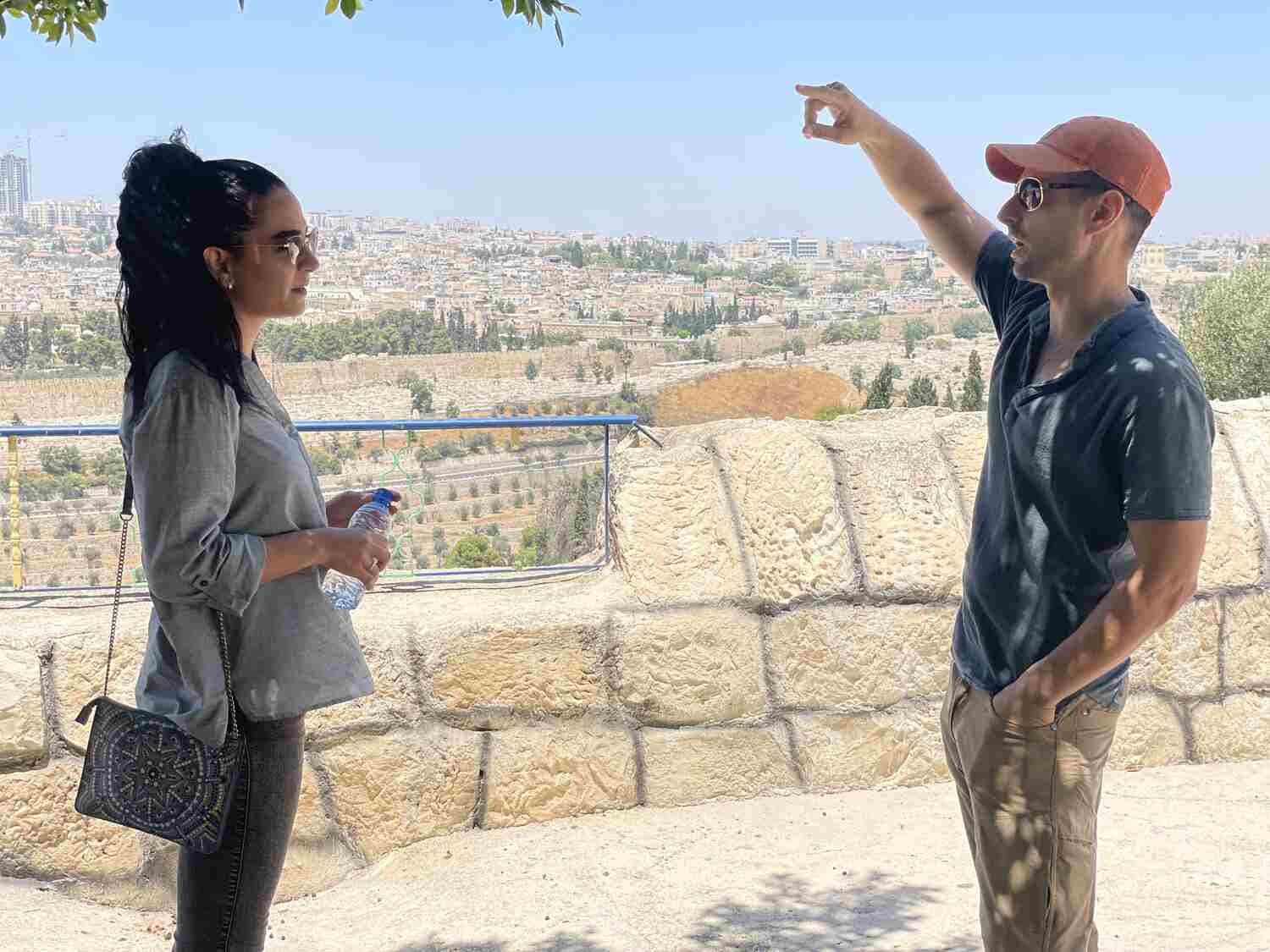
- Trip Includes
- Before you Register
- testimonials
MEJDI’s Dual Narrative Tour™, a patented, socially conscious, award-winning approach to travel.
Explore Israel and Palestine through MEJDI’s industry-first Dual Narrative Tour and see the Holy Land with the help of two local tour guides: one Israeli and one Palestinian.
Visit: Tel Aviv and East Jerusalem; optional pre-trip extension in Northern Israel and post-trip extension in Jordan.
We recently redesigned our trip with higher-level accommodations at 4* boutique hotels and with extra inclusions.
For available tour dates click below or download the itinerary:
*Prices are per person and based on double occupancy. Single room supplements are available
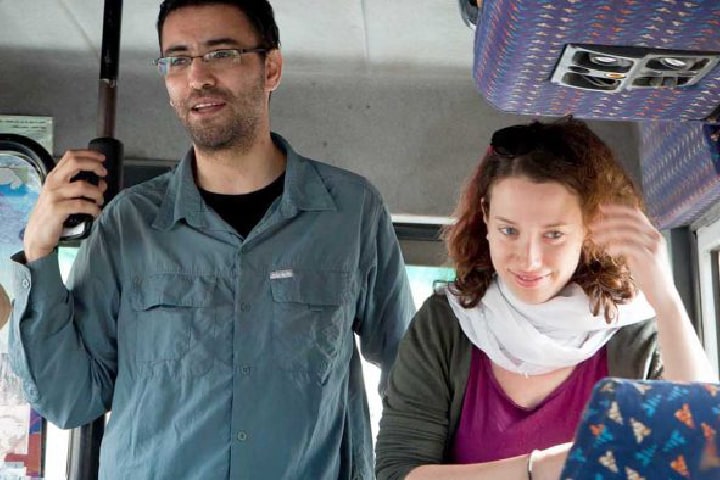
As you travel through Tel Aviv, Ramallah, Bethlehem, and Jerusalem—with optional pre-trip and post-trip add-ons in Northern Israel and Jordan—your Israeli and Palestinian guides help you experience the Holy Land’s history, culture, and complex reality from multiple perspectives in a supportive and constructive atmosphere. Through our co-founder’s personal upbringing in Jerusalem and MEJDI’s established relationships, your experience is deepened by intimate discussions with local leaders, peacebuilders, and organizations, and enriched by deeply personal stories from residents, shared meals with a Palestinian family, and private music performances. Join us to see why TED, National Geographic, Smithsonian Magazine , the United Nations, and the New York Times have featured our Israel & Palestine trip.
Enjoy MEJDI’s Dual Narrative Tour™, a patented, socially conscious, award-winning approach to travel.
Guiding in tandem, israeli and palestinian guides debate and highlight different political, religious, and historical opinions at each site in an immersive travel experience that takes you behind the doors of mosques, churches, and synagogues, through the halls of palestinian and israeli government, into active dig sites, and into the homes of arab, jewish, and druze locals., mejdi’s trained guide-facilitators help open a conversation, answer challenging questions, model friendship through respectful dialogue and disagreement, and allow travelers to encounter new voices and perspectives., take a full-day alternative tour of the old city’s jewish, christian, and muslim holy sites and neighborhoods with your two guides, one arab and one jewish., hear stories from members of a grassroots organization of palestinians and israelis who are working towards peace in the conflict., meet a local activist and chef for a food tour in old ramallah and hear about local food, restaurants, and her personal story., hear from a representative of the jewish settlement movement., discuss political and economic challenges in palestine with a palestinian business person., enjoy a traditional home-cooked meal with a local palestinian family and traditional songs from local musicians., 7 nights’ accommodation (double occupancy), 2 mejdi-trained, english-speaking guides for 6 days: 1 israeli and 1 palestinian, 5 days of private bus transportation, meals listed in the itinerary, entrance fees, site visits, and honorariums for speakers, customary tips for drivers, guides, and hotel staff, dedicated pre-trip customer service and on-ground support, interested but not ready to deposit click the “request info” we can keep you updated on the tour status., international airfare, travel insurance-required, single room supplement fee (see itinerary for price), individual/group airport transfers (arrival and departure), meals not mentioned in the itinerary, covid testing, anything not explicitly mentioned in the included section.

All the trips we take are educational and geared towards cultural immersion, and that’s true of MEJDI. But none are so first hand and intentionally personal as the MEJDI tour guides are.
You come away hopeful because the tour guides can have such different backgrounds and experiences and opinions and still respect each other, And, they introduce you to groups that are working to spread that throughout the world.
MEJDI Traveler
Read through the Terms and Conditions
Do not book your flight until you receive the tour confirmation email from us. This tour requires a minimum number of travelers to run and we will send out the tour confirmation (and update this note on the webpage) as soon as we have met that number.
Check out your travel insurance options. Some plans and policies [Cancel For Any Reason (CFAR) or coverage for pre-existing conditions] may only available for a limited time (approximately 2 weeks) following your date of deposit.
At the moment, health insurance is required for medical and COVID related coverage during your time in Israel.
Tour Registration
Click to see all available tour dates. Select your preferred tour date to complete the registration process and pay the deposit.
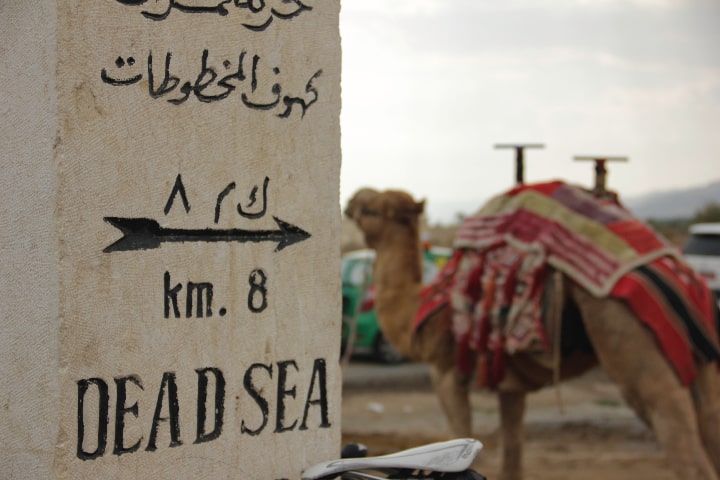

Palestine: Comprehensive Travel Guide 2024 & 11-day Itinerary
- On Oct 8, 2023
This ultimate travel guide to Palestine (West Bank) is everything you need to know for an independent trip to the most interesting places in Palestine. Read our 11 days Palestine itinerary with detailed descriptions of transportation, including the exact shared taxi locations, prices, where to stay, including refugee camps, how to cross the checkpoints, safety in Palestine and many other valuable tips.
I wrote this post to include everything you need to know before you travel to Palestine with confidence and knowledge of what to expect. Consider this as your best travel guide to Palestine.
We always wanted to visit Palestine but were hesitant to go through Israel with a passport full of stamps from other Middle Eastern countries. However, after travelling through Egypt and wondering where to go next, we decided to cross the Taba border from Egypt to Israel and continue to Palestine.
Since, at that time, we were travelling more than a year in a row, we couldn’t swap our passports. We had to use the ones with stamps from Lebanon, Syria, Iraq and other interesting countries, and that’s why we ended up being detained and questioned at the Taba border by Israeli officers for 5 hours. However, since you’re reading this Palestine travel guide, it is clear we successfully made it, so now it’s time to show you that Palestine is a land worth visiting.
WARNING! October 2023: The ongoing war between Israel and the Gaza Strip is currently taking place, and before you travel to the West Bank, it is necessary to seek the most updated information. The conflict does not hit West Bank, but high tension is expected.
WHY VISIT PALESTINE
Where there is a conflict, there might be hope and soon a solution. However, this is not the case in the long-lasting Israeli-Palestine conflict. To understand better the situation in Palestine, you need to get off the trail. You need to stay with people in refugee camps. Listen to their stories. Have coffee with strangers and talk. Listen. Only after that we realised how hopeless the situation in the occupied land of Palestine is. It is an emotionally draining, eye-opening journey that we recommend you embark on.
We rate visiting Palestine high on our list of favourite countries, as it left a big impact on our hearts. And apart from the bad things happening there, Palestine deserves attention because of its rich history, delicious cousin, breathtaking monasteries and because of the people who are amongst the most hospitable people on earth.
We recommend you check our stories on our Instagram Brokennavigation_ where we documented our journey through Palestine in detail.
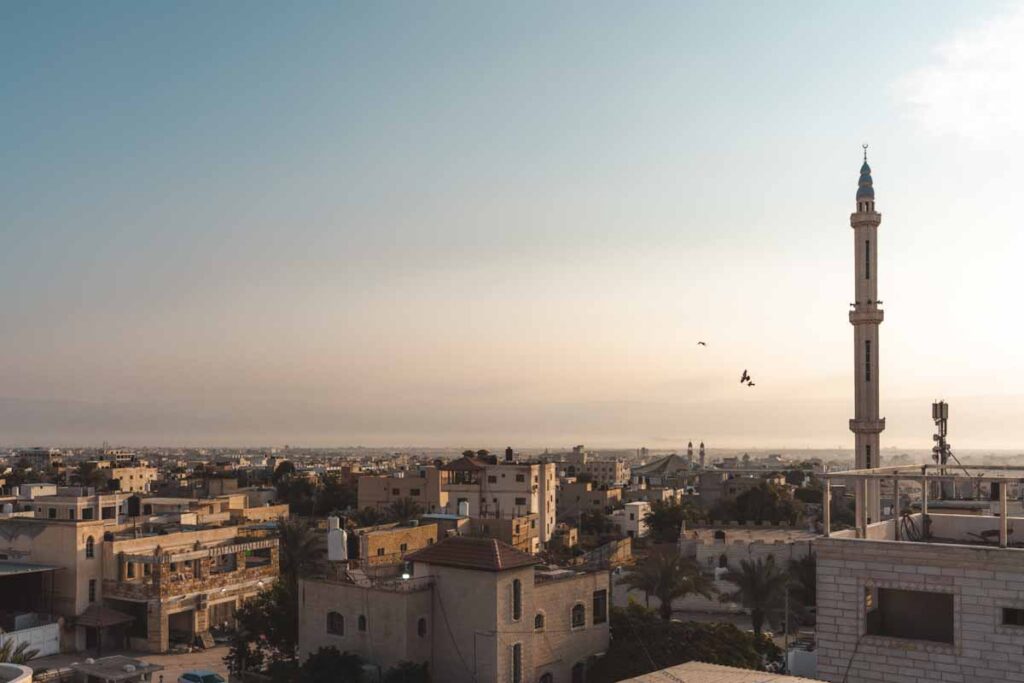
PRACTICAL INFORMATION
- Religion: Palestine is a Muslim country with a majority of Sunni Muslims. As in other countries of the Middle East, people are very welcoming and hospitable. They really want to talk about life in Palestine and are very happy to meet foreigners and invite you for tea. Even though I just said that the majority of people in Palestine are Sunni Muslims, Christianity here plays a significant role. Especially in Bethlehem and also in Ramallah and Jericho. Would you expect to find a local brewery here?
- Language: official language in Palestine is Arabic. We found it very pleasant to travel around Palestine as most people we met spoke at least basic English; therefore, it was very easy to communicate.
- Currency : The currency in Palestine is the Israeli Shekel. 1$ = 3.58 ILS.
- Visa: You don’t need a visa to visit Palestine; however, you must show your passport and the Israeli immigration slip you got once you entered Israel.
Interested in the Middle East? Read our guides from Syria, Iraq, Lebanon and more.

SAFETY AND SITUATION IN PALESTINE
Israel has occupied Palestine since 1967, and the situation is only getting worse with Israel building more and more Jewish settlements in Palestinian territory. Basically, Palestinians have no way to fight back because as soon as they try, the Israeli army attacks back with much more power. Does this fact affect your travel? Yes and no. Yes, because the land is very sensitive, and riots are happening on a daily basis, especially if you decide to stay in a refugee camp with local families. All the army attacks on Palestinian people occur at night and early in the morning. Therefore, try to avoid being outside at that time.
During our time in Palestine, we were informed by local people that there is daily shooting in refugee camps and dangerous situations for Palestinians happening. We personally did not see anything dangerous, and we did not go out at night & very early morning. We felt very safe and welcomed.
Palestine territory is divided into the West Bank and Gaza Strip. Gaza Strip is absolutely off-limits to tourists; therefore, all travel guides we wrote about Palestine refer solely to the West Bank territory.
Essential reading: Is it safe to visit Palestine? Our experience. (Coming soon)

Israel also limits the water supply for Palestine since the reservoir is on Israeli territory. They open the water for Palestinians only two days per month. That’s why you will see many water tanks on the rooftops of houses. Because they have to collect rainwater and in those two days when they have the water they collect as much as possible.
Electricity & Internet works well everywhere we have been in Palestine. Use VPN for accessibility to certain sites.
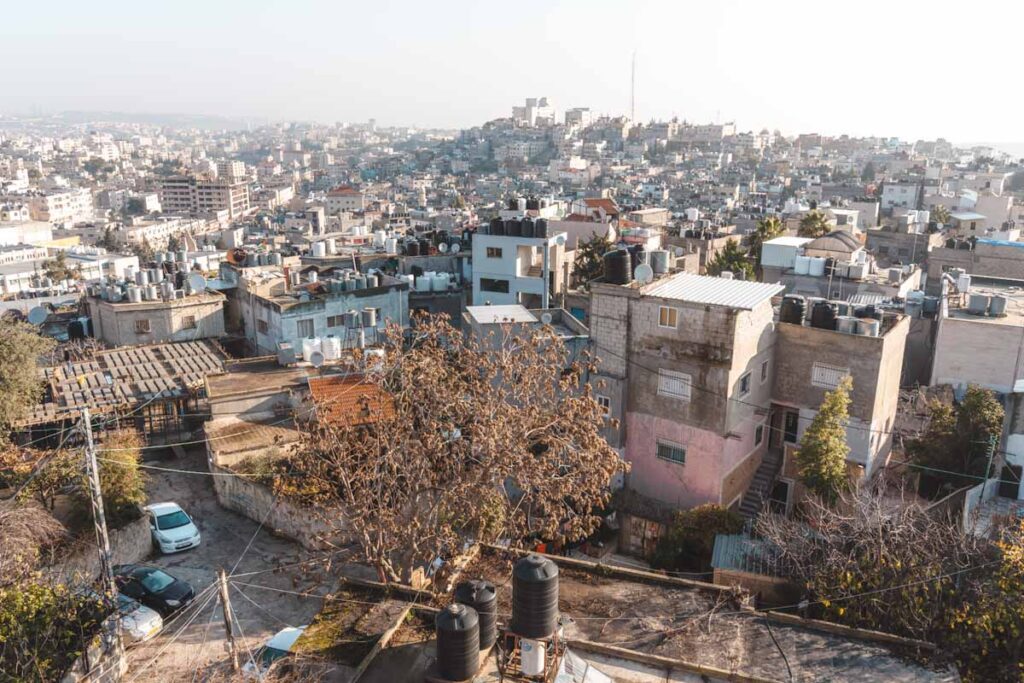
SNIPERS AT BUS STOPS
When travelling in Palestine, get used to seeing snipers behind the barriers, either made of sandbags or bulletproof glass. They are usually located close to where the Israeli settlers live, next to the bus stations. They point their huge gun directly at incoming cars. Sitting in a car and seeing the soldier pointing a gun at you is a super weird feeling. They are protecting the settlers from potential attacks from Palestinians. Notice the huge red signs close to the Jewish settlements that state: ,,This road leads to Area A Under the Palestinian Authority. The entrance for Israeli citizens is forbidden, dangerous to your lives and against Israeli law” . So even if Israelis would like to go and see Palestine themselves. They can not, as they are told it is dangerous for their lives.

Travel Insurance for palestine
Have proper travel insurance for Palestine covering various activities such as IATI Insurance does. They have fantastic customer service and provide different kinds of insurance packages. As a reader of Broken Navigation, you get an exclusive 5% discount.

Get your exclusive 5% discount for your travel insurance with IATI here.
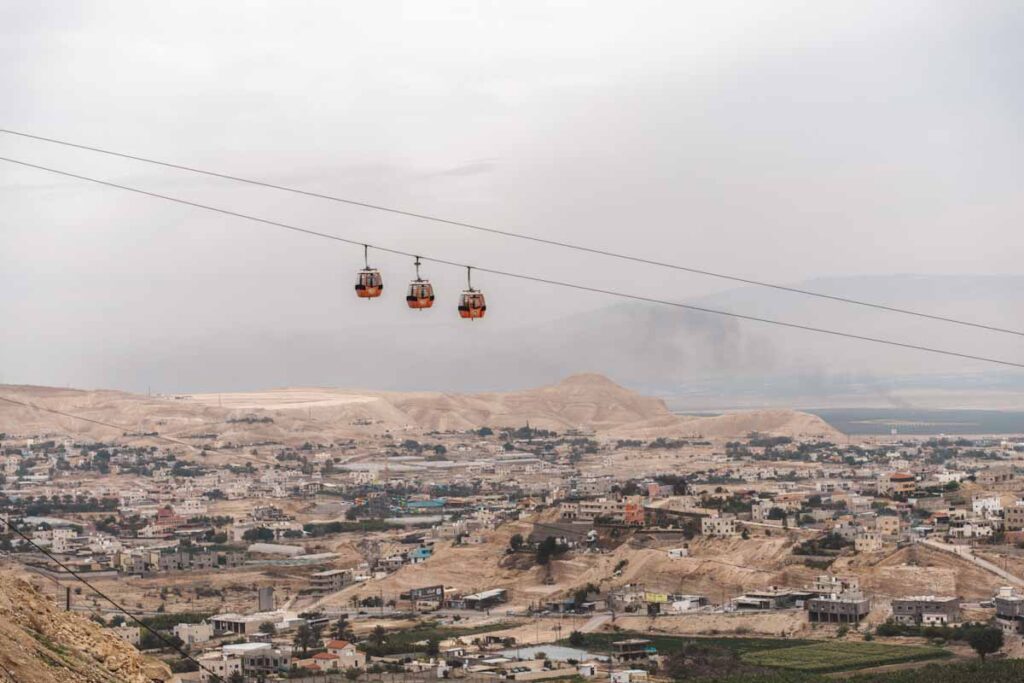
CHECKPOINTS
Going through checkpoints is very easy for foreigners. Basically, in most checkpoints between Israel and Palestine, when going in the direction of Palestine, you just freely walk through without any special check. If you want to go from Palestine to Israel, that’s a different story, though.
Overall, there are more than 100 checkpoints across Palestine and roadblocks to separate new roads, which only Israeli cars can use, from the old and not repaired roads only for Palestinian cars. You will also see the separation wall in Bethlehem, that most likely will leave you emotional with all the powerful graffiti on it. Palestinians say it is to segregate them from the rest of Israel and limit their free movement. Israel claims it is for the safety and preventing the terrorist attack. Come and see yourself. We travelled around Palestine independently to see with our own eyes what was happening. We talked with people to learn their points of view.
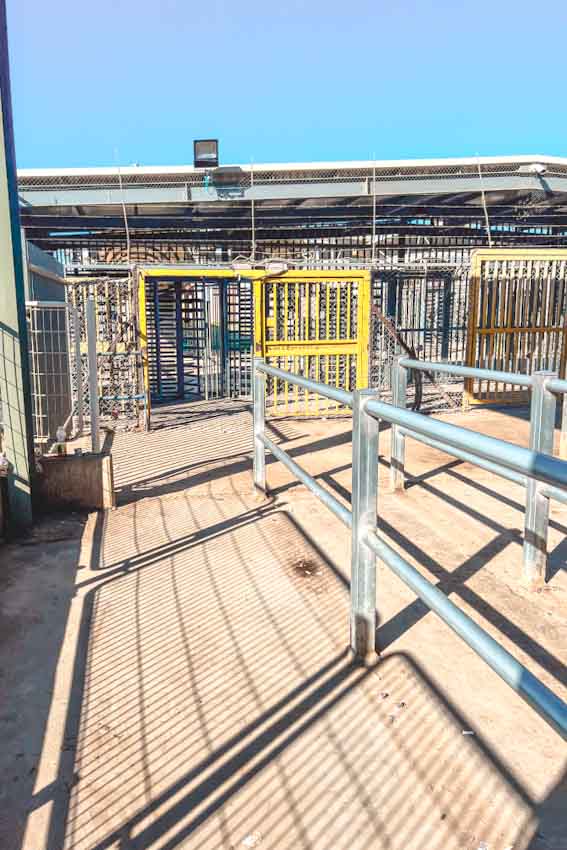
CHECKPOINT 300 – JERUSALEM TO BETHLEHEM
The first checkpoint we crossed was between Jerusalem into Bethlehem. Checkpoint 300. Located South of Jerusalem by the entrance to Rachel’s tomb. This checkpoint is used for Palestinians who are permitted to cross into Jerusalem. If going in the direction from Jerusalem to Bethlehem, it is very easy. You go through the concrete tunnel with multiple one-way gates. There are no officers to check anything as you are going into Palestine, and no one care. If you go in the opposite direction, then officers will check your documents. And for Palestinians, they check their permit. From what we heard, frequent harassment towards Palestinians is happening on these borders. They let them wait for hours.
After we got out into Palestine, there were many taxi drivers. Some of them immediately started chatting with us. Even though they are not used to many tourists coming independently through this checkpoint, they tried to rip us off by asking for crazy amounts of money. That surprised us a bit. Don’t get me wrong. Palestinians are lovely and hospitable people; however, but as elsewhere, be careful about the taxi drivers as they will try to rip you off in many places in Palestine. You don’t need a taxi if you want to explore the separation wall and reach The Walled Off Hotel. You can easily walk as it is an easy 800 m walk from Checkpoint 300. This checkpoint is open 24/7.

JALAMEK/ EMEK HAROD CHECKPOINT – JENIN TO NAZARETH
Another checkpoint in Palestine we crossed was Jalamek Checkpoint from Jenin to Nazareth. We used this checkpoint on our last day in Palestine to cross into Israel (Nazareth). I have to say; the Jalamek checkpoint was the worst border crossing / Checkpoint we have ever experienced. The way Israeli officers act here is unthinkable. They are rude, humiliate people and make you feel like nothing. Here, the checkpoint is open only at certain times. We arrived here at 2pm, and it was closed. We and other Palestinians waited an hour, and at 3pm, they finally opened the gate. Be careful; it is open only for some time and then closed again. The best way to find out is to ask locals. We were told the checkpoint is open from 2pm, but as you see, they did not open till 3pm. Then the queue was already quite long; we were between the first ones who got through the gate. We recommend you have your bag carefully packed and prepared and have documents handy. As soon as the gate opens, people start rushing and pushing you from behind. Everything goes very fast and hectic. First, you have to send your luggage through the x-ray check, your jacket as well, belt etc. It is a similar procedure to the security check at the airport. We did not expect that. And there was very little space, people were rushing, and we had to pick up our bags quickly & forgot our bag with food there as it was super hectic. Then we continued through the designated path until we reached the officer in a stall behind bulletproof glass. From the second floor, there was an officer with a gun pointing at people. Super weird situation. They checked our passports and took them.
We were asked to go aside, and after a few minutes, the officer & armed guard came to question us. What we did in Jenin was their biggest concern. We said we did not go to Jenin but to Nablus. This was partially true as we slept in Nablus and Jenin we visited when we went through on the way to the border. Why do you go to Israel? What you’re going to do? We showed our itinerary for Israel, explained we were travellers, and they let us go through after a few minutes. Overall, this checkpoint with waiting for opening took 2 hours. Even though the experience here was awful, I recommend anyone to cross this border to see with their own eyes how the officers act towards others.
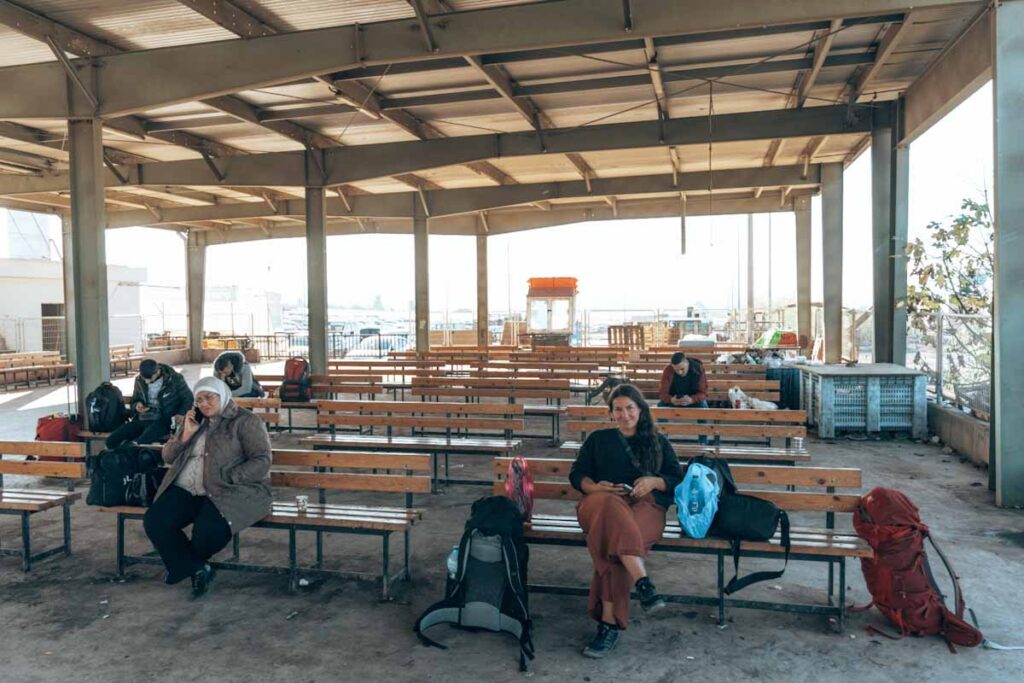
CHECKPOINTS IN HEBRON
When visiting Hebron, you will go through multiple checkpoints. Hebron is divided into two areas known as Area H1, which is under the control of Palestinians and Area H2, which is Israeli controlled area. Both crossings are in the Middle of the city. The tension between those two areas is huge as the checkpoints separate the Al-Ibrahimi Mosque (Holy site for Muslims) from the Cave of Patriarchs (holy site for Jews). One building. Two checkpoints.
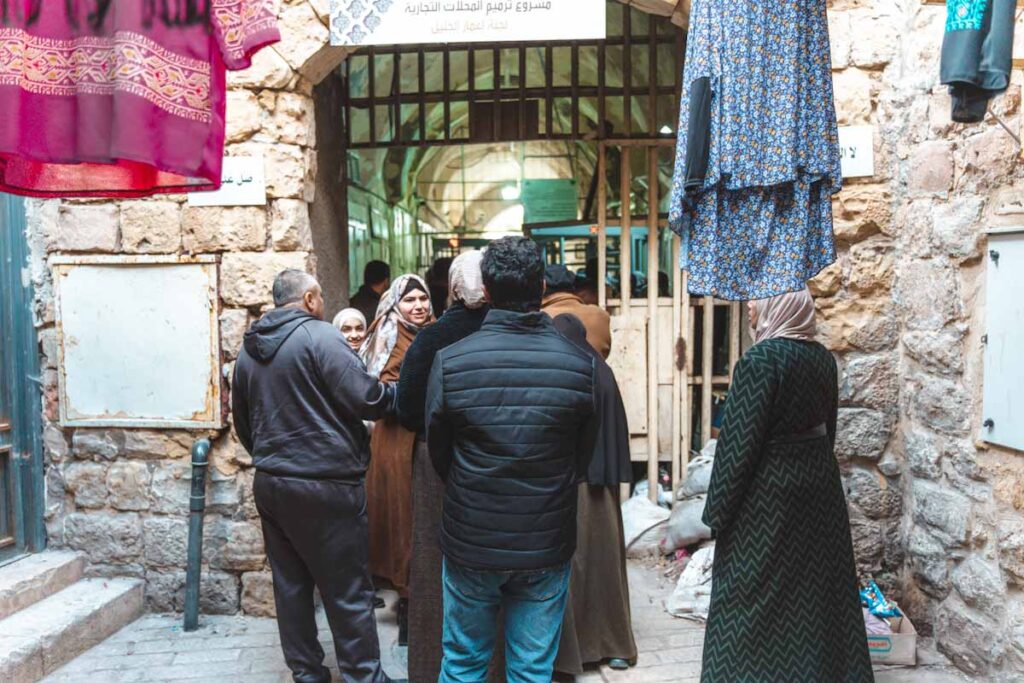
CHECKPOINT TO AL IBRAHIMI MOSQUE
Basically, to enter the Al Ibrahimi Mosque, you go through 2 checkpoints. In both of them, they ask where you are from, why you are here and if you have any weapon. The officers let people go through a one-way gate only one by one. So when the light is green, you can go. Otherwise, you wait in a queue.
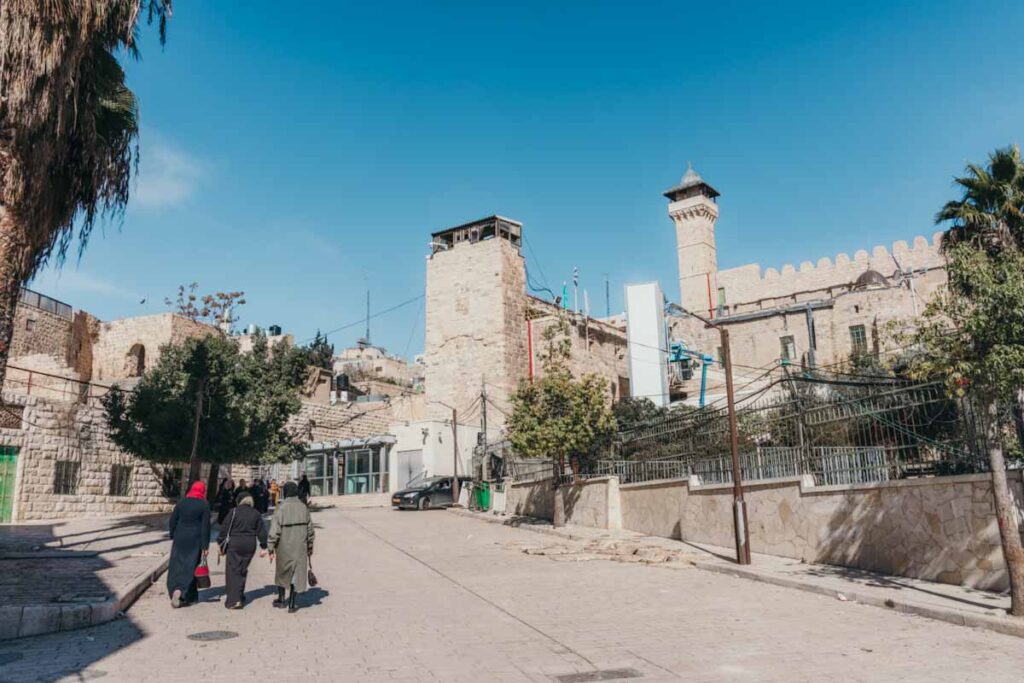
CHECKPOINT TO CAVE OF PATRIARCH
To enter the Cave of Patriarch, you return to the main street (in front of the first checkpoint you crossed) and make your way toward the checkpoint that leads into the Cave of Patriarchs. Here you have to answer the same questions, and you also will be asked about your religion. We said we are Christians. Entry for Muslims is forbidden here.
CHECKPOINTS IN H2 AREA – ISRAELI TERRITORY
After visiting the synagogue, we walked around the area H2, which is under Israeli control. It is basically a dead city with a huge military presence. No Palestinians can set foot on those streets. There were multiple barriers with soldiers who always stopped us, asking what we were doing there, where we were from and where we were going. They checked our passports, made a few phone calls – I guess to the soldiers on the other barrier and let us go. When we wanted to go and visit the archeological site up the hill, the Israeli soldiers told us that area was not safe for us to go alone and would not let us go through without an armed escort. We accepted. Otherwise, we would have to return to area H1, where we had a hotel. After visiting the site, we crossed another checkpoint that brought us back to the H1 area.
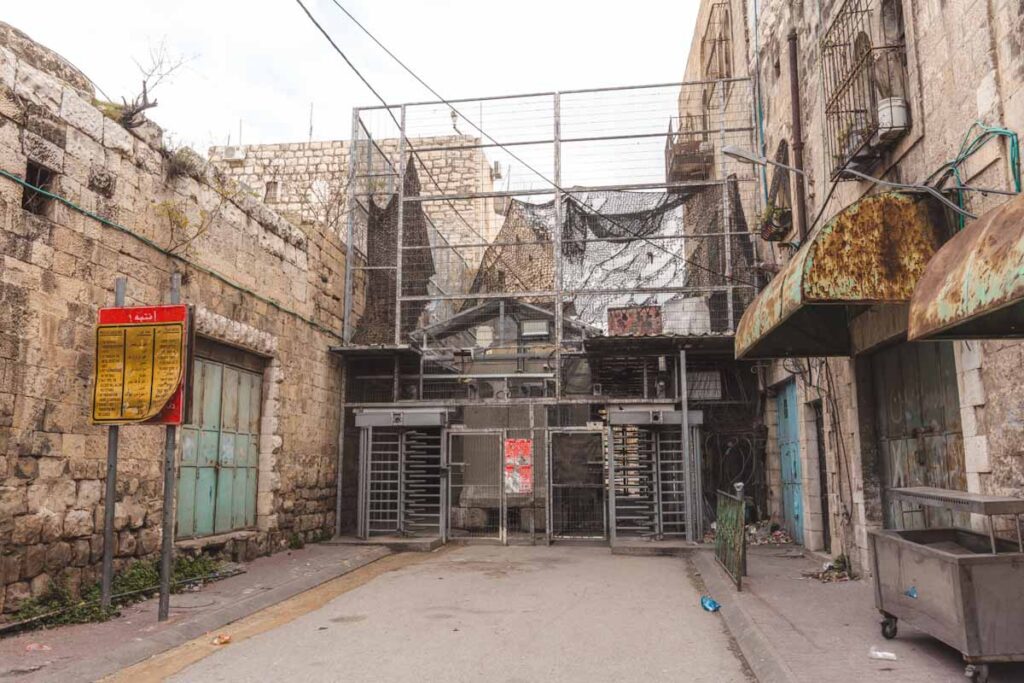

WHEN TO VISIT PALESTINE
When is the best time to visit Palestine? Avoid the summer in Palestine if possible, as the temperatures get way too hot. We visited Palestine in January, and it was a perfect time as we still managed to see a lot of Christmas decorations, and it was not too cold. In Jericho was the warmest weather from the whole trip.

THE BEST TOURS TO PALESTINE
Independent travelling in Palestine is not a big thing. To be more precise, we barely met any travellers during our travels, and the first hint that Palestine’s destination is not among the most typical is the fact there only exist a few up-to-date travel guides.
In our eyes, it is very easy to get around independently, and obviously, that way, you experience a whole different point of view than if you take a tour. On the other hand, I understand that many people maybe don’t want to travel alone or want a guide to listen to their opinions on the situation. There are many tours you can take comfortably from Jerusalem. If that’s what interests you, base yourself in Abraham hostel in Jerusalem and check our top tour picks:
HOW TO GET TO PALESTINE
There is no international airport in Palestine; no matter what direction you’re coming from, you must go through Israel.
To get to Israel, you can cross overland borders from Jordan, or like we did from Egypt. However, the most common way to reach Israel is by flight and airports in Tel Aviv or Eilat have frequent flights from Europe with the low-cost airline Wizzair, and you can find flights for as little as $25.
Find cheap flights to Israel here.
Border Crossing Report: How to cross the Taba Border between Egypt and Israel.
HOW TO GET AROUND PALESTINE
Getting around Palestine is very easy as the shared taxi system works very well. Don’t bother using Google Maps, as it always shows you a non-sense, much longer way. Instead, use Maps.me app that shows the correct way. Travelling around Palestine by shared taxis or buses is easy, convenient and safe.
SHARED TAXIS & PRICES OF TRANSPORT
Here you can see the summary of buses & shared taxis we used in Palestine and how much they cost. Bear in mind, when travelling around Palestine, to start your day early as there is much more traffic going to places and also coming back from sights is much easier in the early afternoon rather than in the evening as there are lower chances of catching the shared taxi or you will wait a long time for them to fill up. Usually, the shared taxis run till 6pm, but make sure you ask drivers or locals before. In our experience, we woke up every day early and started exploring no later than 8-9am. We never had any problems with waiting for shared taxis to fill up. It usually took up to 10 minutes only.
- Jerusalem – Bethlehem: bus #234 to Checkpoint 300 5.5 ILS ($1.5)
- Bethlehem – Mar Saba: Shared taxi to Ubediya 5 ILS ($1.4)
- Shared taxi in Bethlehem: From the centre to Dheisha refugee camp 3 ILS ($0.8)
- Bethlehem – Hebron: Shared taxi from Dheisha refugee camp 10 ILS ($2.8)
- Hebron – Jericho: Direct shared taxi 30 ILS ($8.3) or Shared taxi to Al Azariyah 20 ILS ($5.6) and change to shared taxi to Jericho 10 ILS ($2.8)
- Shared taxis in Jericho: From the centre to Hisham Palace 10 ILS ($2.8) to Mount Temptation 20 ILS ($5.6), to St. George Monastery 15 ILS ($4.2)
- Jericho – Ramallah: Shared taxi 18 ILS ($5)
- Ramallah – Nablus: Shared taxi 17 ILS ($4.8)
- Nablus – Jenin: Shared taxi 16 ILS ($4.5)
- Jenin – Emek Harod Checkpoint / Jamaleh: Shared taxi 4 ILS ($1.1)
You can expect to spend a total of around 180 ILS ($50) for transportation in Palestine.
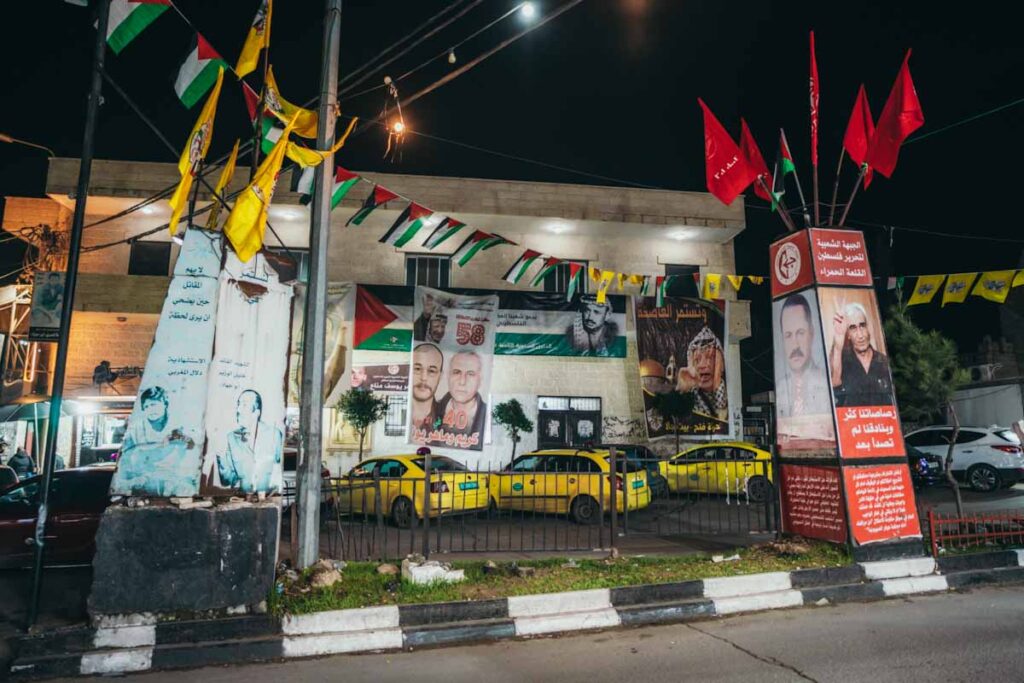
DO YOU HAVE A TROUBLE STAMP ON YOUR PASSPORT?
When we travelled to Palestine, we had two passports with us, and the one we used had stamps from Syria and Iraq and multiple stamps from Lebanon and other Muslim countries. We decided to cross the overland Taba border between Egypt and Israel with that passport as we thought it might be even more suspicious if we used the clean ,,backup” passport, and they found the other one with stamps from those countries. We have been detained and questioned for 5 hours, including a body search and a very detailed bag search. After 5 hours, we successfully made it to Israel. You can read a full report on crossing the Taba border into Israel here.
After we made it to Israel, we no longer had any issues, even though multiple officers in both Israel and Palestine checked our passports.
The currency in Palestine is the Israeli Shekel. $1 = 3.58 ILS. Regarding ATMs money withdrawal, you don’t have to worry about anything as ATMs are widely spread and easy to find. We withdraw money in Palestine many times and never faced any issues. However, there is always a transaction fee of around 11 ILS ($3). In the Bank of Palestine, the withdrawal fee was even 40 ILS, so don’t even bother. We usually used the ATM of the Arab Bank . We used cash everywhere in Palestine; they are not used to card payments. But it is possible in some places.

INTERNET & SIM CARD
The Internet in Palestine is very good. In every accommodation we stayed wifi was very fast and reliable. Regarding Sim cards, you have two options. Either buy it in Palestine or Israel. SIM cards in Palestine are cheaper. However, their coverage is not great, and it’s only 2G, sometimes 3G. We recommend getting a SIM card in Israel. We bought ours in Jerusalem. It is not the cheapest, but it worked well in most places. However, we had some outages in Bethlehem and Hebron. Anyway, from what we heard from others, Pelephone is still the best option for Palestine. To access some sites, you will need a VPN. We paid 100 ILS ($28) for a Pelephone SIM card with 100 GB, unlimited use of apps such as Instagram and Facebook, and they provide 5G. Even Palestinians use Israeli sim cards. Don’t buy a sim card at the airport; they are overpriced.
VPN FOR PALESTINE
To access many sites in Palestine, it is necessary to use a reliable VPN app . Don’t use the free VPN apps, as they are unreliable, and there is always a safety risk as they can steal your data. We always use NordVPN everywhere we travel. They have excellent services and very fast support, which is important when you need to access the internet quickly. In some countries we visited, VPN can be blocked, but after we contacted the helpdesk of NordVPN, they quickly navigated us how to connect. Check the link below for the discount option – sometimes you can get up to 65% discount for a 2-year plan.
Check the best prices for NordVPN here.
PRICES IN PALESTINE
- Entrance fees: usually around 5-10 ILS ($1.4 – 2.8)
- Accommodation: $17-$35 for both of us per night
- Transportation: For 11 days in Palestine and using Shared taxis, we spent around $50 per person; you can see more details in How to get around Palestine section.
- Falafel sandwich: 5 ILS ($1.4)
- Ice cream: 5 ILS ($1.4)
- Palestinian Pizza: 7-10 ILS ($2-2.8)
In 11 days in Palestine, we spend around $750 for both of us ($375 per person) , so I’d say Palestine is a very affordable destination. In that budget, I don’t count the flight ticket from Tel Aviv to Europe, which costs an additional $50 per person.
WHERE TO STAY IN PALESTINE
You can find accommodation on Booking.com and also Airbnb. However, during our visit, the hotels started to disappear from Booking.com due to some new laws and hotel owners told us that the issue is they can not receive money through booking into their bank account due to them being from Palestine. Just another example of unfair play Palestinians have to go through. Anyway, you can also try to contact the hotels directly by searching their number through Google. The majority of people use WhatsApp, and Couchsurfing is also popular. We got in touch with a few incredible people who have been willing to show us around. The sleepover never worked, though, but at least for meeting local friends, it is incredible. See below all the accommodations we used in Palestine. We describe each accommodation in greater detail in our 11 days itinerary below.
The following prices are per night for two people:
- Jerusalem I Abraham hostel ($52, dorms)
- Bethlehem I Staying with Ibrahim’s family in Dheisha Refugee Camp ($33)
- Hebron I Friends Hostel Area B ($32)
- Ramallah I Eco Hostel Ramallah ($40, dorms)
- Jericho I Aqabat Jabr Refugee Camp Sami hostel ($33)
- Nablus I Turquoise Guest House ($36, dorms)
- Jenin I Jenin Creative Cultural Center ($55)
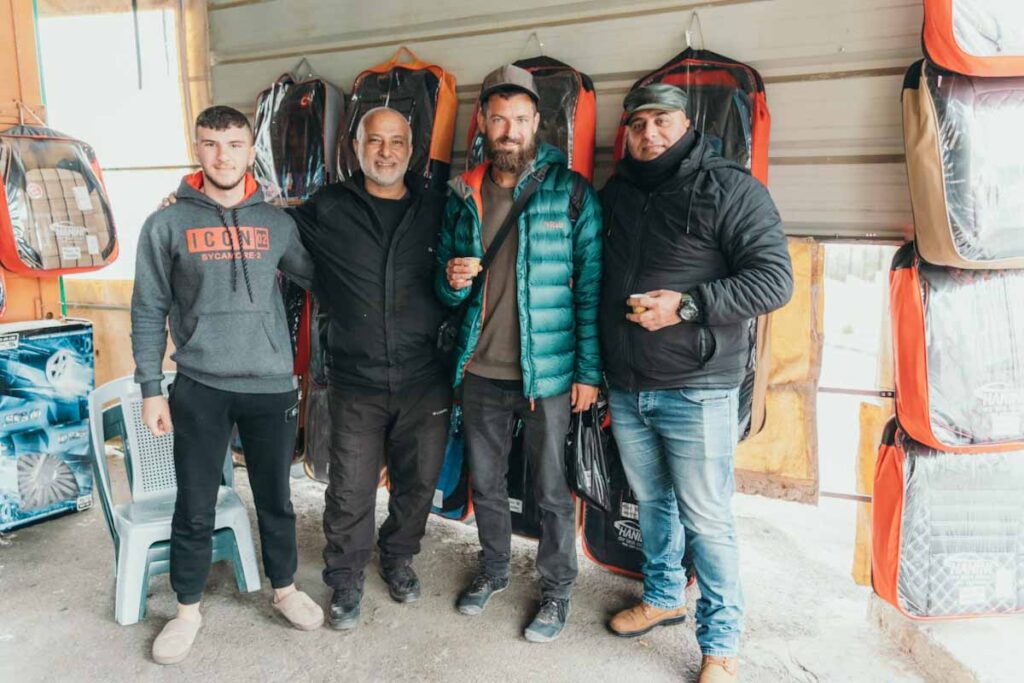
STAYING IN REFUGEE CAMPS
If you truly want to understand Palestine, there is no better way than staying overnight in one of many refugee camps in Palestine. We absolutely loved staying with locals in camps, listening to their stories, and seeing the reality with our own eyes. Read our detailed travel guide on how and where you can stay in refugee camps in Palestine and how to book it, including contacts and exact locations in Bethlehem, Hebron and Jericho.
Read more: How to stay in Refugee Camps in Palestine & Things to know.
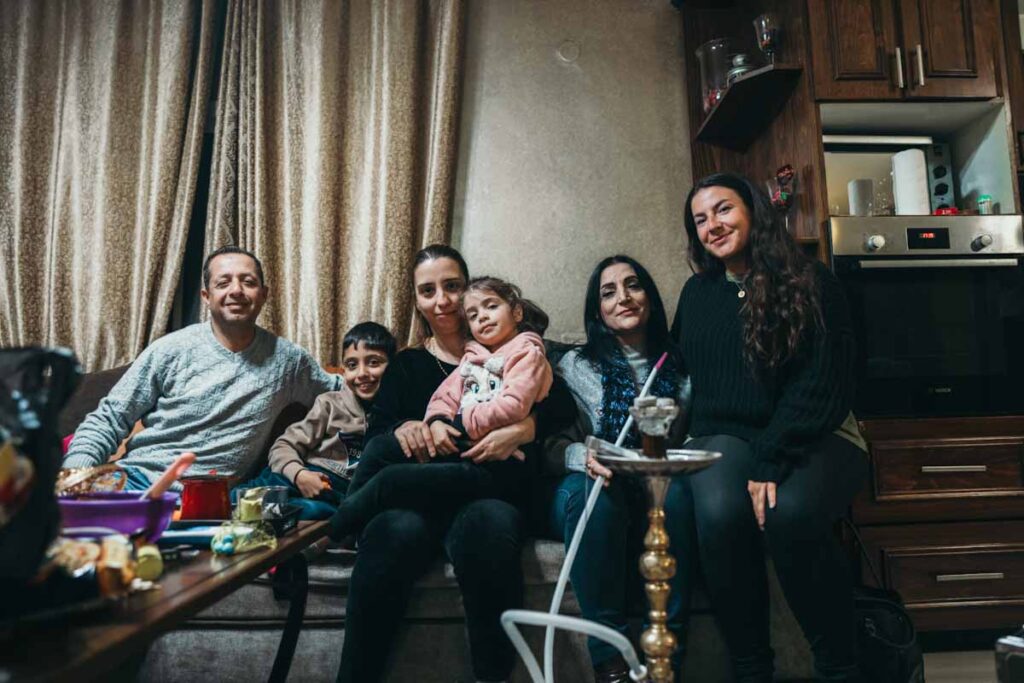
QUICK SUMMARY OF OUR 11 DAYS ITINERARY:
- DAY 1 JERUSALEM (1 NIGHT)
- DAY 2 – 3 BETHLEHEM (2 NIGHTS) – Checkpoint 300 to get in West Bank
- DAY 4 – 5 HEBRON (2 NIGHTS)
- DAY 6 RAMALLAH (1 NIGHT)
- DAY 7 – 8 JERICHO (2 NIGHTS)
- DAY 9 – 10 NABLUS (2 NIGHTS)
- DAY 11 JENIN – Emek Harod Checkpoint to get out West Bank
Map of the 11-day itinerary for Palestine
11 DAYS ITINERARY FOR PALESTINE
Day 1: jerusalem.
The first minute we stepped out from a bus in Jerusalem, we found ourselves immersed in a culture we haven’t seen before. We felt like we showed up in an old movie with all the fashion people in Jerusalem wear. Jerusalem is today part of Israel. However, East Jerusalem is inhabited by Palestinians.
Not every day you see a city that welcomes more religions, and Jerusalem is the holy place, sacred for Jews, Muslims and Christians.
Essential reading: How to visit top places in Jerusalem in one day.
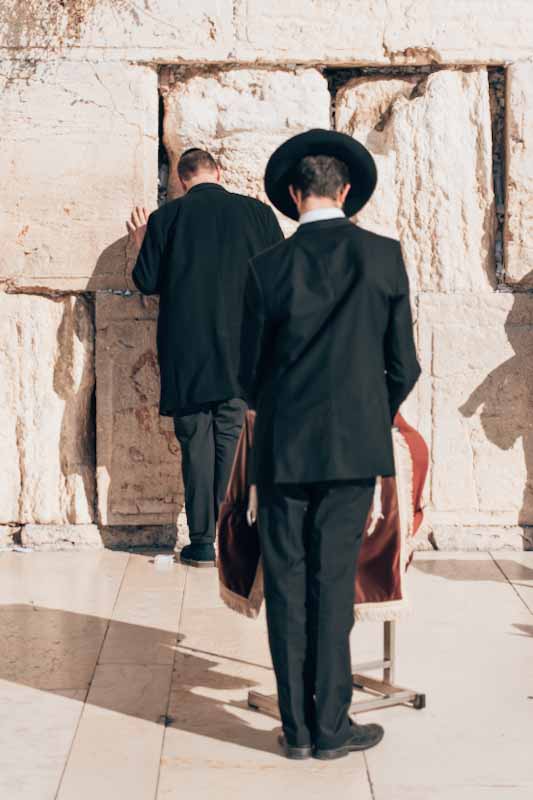
BEST THINGS TO SEE IN JERUSALEM
Temple mount/ al haram ash sharif.
The biggest landmark in Jerusalem, especially the Dome of the Rock , is the most holy and famous site. There are nine gates for Muslims to enter; however, as a non-muslim, you can only enter through the Gate of Moors (Bab Al Maghrib). It is recommended to line up early, as many tours are coming and you should expect huge queues. When we visited in January, there was a small queue, and it took just 10 minutes to get inside. You will go through the security check and then follow the wooden bridge that gives you a perfect view of the Western Wall.
The Dome of the Rock is where you find the foundation stone Jews believe is the centre of the earth. For Muslims, it is a place where Mohammed made his ascent. Non-muslims can’t enter the Dome of the Rock or Al Aqsa Mosque. But even from outside, we had a great time wandering around its plaza and admiring the architecture, which is simply stunning.
- Sites inside Temple Mount Areal: Dome of the Rock, Al Aqsa Mosque, Dome of the Chain, Sabil of Qaitbay, Scales of Souls, Bab Al Qattanin
- Opening hours for Temple Mount for non-muslims: 7 – 10:30am and 12:30 – 1:30 pm in winter and 7 – 11am and 1:30 – 2:30 pm in summer. Fridays and Saturdays are closed.
- Entrance fee: Free
- Security: They take security seriously in Temple Mount, and they will thoroughly search your bag while entering by the Gate of Moors. The military presence here is huge.
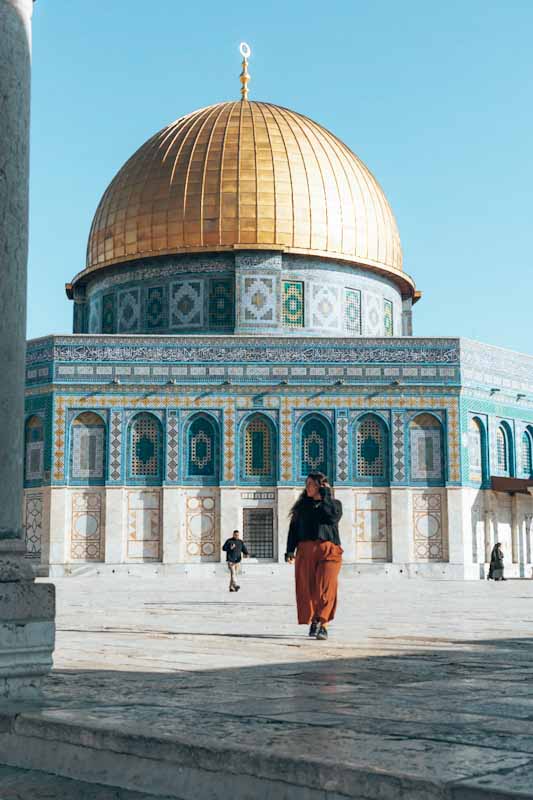
Western Wall
Western Wall is the holiest site in the world where Jews pray by the wall. We already mentioned above you get a perfect view of the Western Wall from above when walking on the wooden bridge when visiting Mount Temple. Stop there for a few minutes and just watch how Jews pray here. Western Wall is open 24 hours a day, but it makes the most sense if you come here after visiting Mount Temple as it is very close.

Church of the Holy Sepulchre
After seeing the holiest site for Jews, it’s time to move to the Christian Quarter, where the main pilgrimage site for Christians, the Church of the Holy Sepulchre, is to be found. Christians come and pray here by the empty tomb of Jesus. It is the place where Jesus was crucified. You find here the Stone of Unction, which is apparently where Jesus’ body was laid and prepared for burial.
- Opening hours of Church of the Holy Sepulchre: 5am – 8pm from April to September and 5am – 7pm from October to March.
- Entrance fee: Free
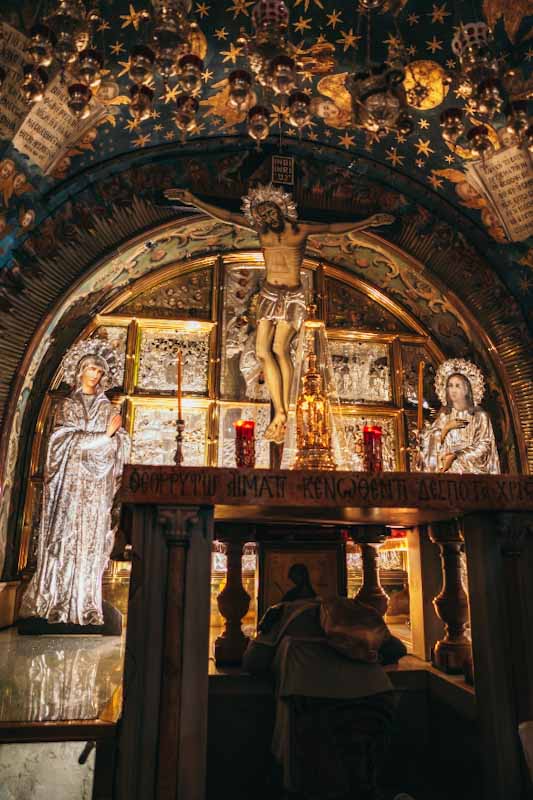
Via Dolorosa
Via Dolorosa is the holy walk through the Jerusalems’ holiest sites. It takes roughly one hour to walk this 600m paths; that is the one believed that Jesus took carrying the cross. We took a whole walk and did not expect such a spiritual experience. Having a map from Lonely Planet and reading the description of places as you go is worth it. The walk starts by St. Stephen (Lion’s) Gate, and it ends at the Church of the Holy Sepulchre.

Mount of Olives
To end the day and watch the sunset with an unbeatable view over Jerusalem, head to the top of the Mount of Olives. We decided to walk from the old city, but you can also take bus number #83, which runs between Jaffa Gate and the top of the Mount of Olives. The viewpoint lies over the slopes of the cemetery where more than 150 000 Jews are buried. It is worth it to come here for epic views of Jerusalem with the shining golden Dome of the Rock.

Mahane Yehuda Market
We enjoyed strolling through this vibrant market after sunset. You can expect many halva, bakeries, cool food stalls and eateries. If you want to buy some locally grown products such as dates, oils and much more, this is the place to be. This market stood here since the Ottoman period and is located on Yehuda St., which is an open market, especially for veggies and butchers, and Etz Chayim St., where all the eateries, bakeries and halva makers are. We ended our day in Jerusalem here.
- Opening hours for Mahane Yehuda Market: 8am – 7pm and 9am – 3pm on Fridays.
We managed to visit all these top sites in Jerusalem during a 1-day visit. We started exploring early in the morning, and we had plenty of time to see most places. However, you can easily spend more days here as there are many historical and religious sites to visit.

HOT TO GET AROUND JERUSALEM
Use Rav Kav Card and travel with trams and buses all around Jerusalem. You find the correct timetables in Moovit App. However, if you base yourself in the old town or close, you can basically visit all places by just walking around.
HOW TO GET TO JERUSALEM FROM EILAT
In Eilat, we took bus #444, which goes from Eilat Central Station. We got our tickets for 63 ILS and waited for an hour for the next bus as it was Shabbat, and the bus went every hour from 3pm. The bus wasn’t full, so I believe it was enough to get the bus ticket on the spot. We also bought here the Rav Kav card for public transport in Israel.
WHERE TO STAY IN JERUSALEM
The budget I Abraham Hostel – we highly recommend you stay here, as Jerusalem is pretty expensive, but staying in Abraham Hostel gives you a lot of advantages. They serve a huge, healthy local breakfast buffet that will make you full for most of the day. And if you pay for your stay in advance, you also get a free ticket for a beer in their bar. It is also located close to the centre, with a tram station right in front of them. It is one of the best hostels we have ever stayed in.
DAY 2-3: BETHLEHEM
Bethlehem is a synonym for religious travel in West Bank. Many pilgrims come to see the main sight, which is the Church of the Nativity. Many tours are coming here, but is there more to see from Bethlehem? Oh, yes, but you have to go behind the tourist trail. Many tourists come with a guide as they’re worried about crossing the checkpoints independently into Palestine. What a shame because the true understanding of what is happening in Palestine does not lie in the Church of the Nativity. But far behind the line when you experience staying with a local family in the Dheisha refugee camp in Bethlehem. Read our recommendation of places that you can visit in two days in Bethlehem.
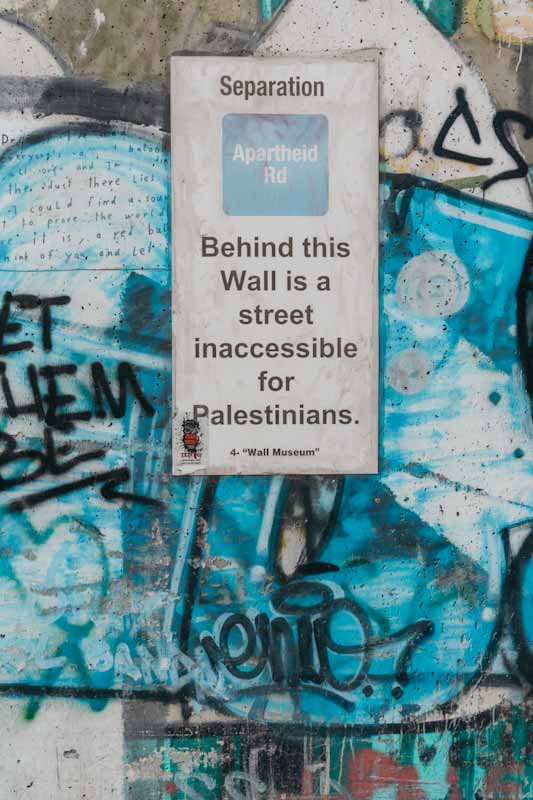
BEST THINGS TO SEE IN BETHLEHEM
Israeli separation wall.
As soon as you cross Checkpoint 300 to Palestine, you will see the huge separation wall that is known as Israeli Separation Wall. It is a concrete wall up to 8m high that separates Israel from West Bank. The first feeling of this wall is pretty depressing. Follow the path along the wall and walk towards Walled Off Hotel. It is where you will see the most powerful graffiti. Basically, the whole wall is covered with graffiti, and each of them has a powerful message. Take your time to read it, to carefully watch all the art that helps Palestinians express how they feel. Truly powerful. Before we turned to the street that led to the Walled Off Hotel, there was a petrol station where we left our backpacks. The friend of Ibrahim, our host in Bethlehem, arranged it for us so we didn’t have to carry it the whole day before he picked us up later in the evening. Take your time and make a loop from Checkpoint 300. Go straight until the turn left that takes you to the Walled Off Hotel. Then turn left again, follow the wall until you can turn left, and follow the path down the hill, check the graffitis along the way. This loop is the most common to walk, as you will see most graffiti on the wall.
From the point of Israel, they built this wall for the safety of Israelis as frequent bomb attacks were taking place in the past, killing many Israelis. From the Palestinian point of view, this wall is to separate Palestinians, humiliate them, control their movement and show who has the power.
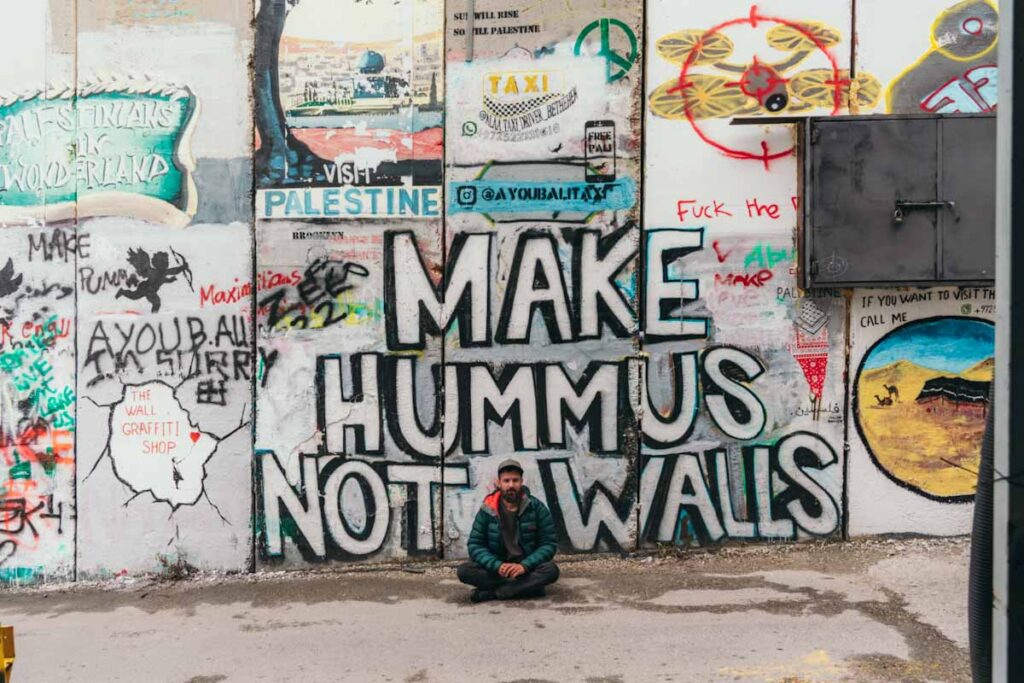
Walled-off Hotel + museum
If there is only one place you should see in Bethlehem, you need to visit the museum inside the Walled Off Hotel. Hands down, this museum was the best we have ever seen, as it’s a good start to understanding the problem between Israel and Palestine.
You can’t take photos inside the museum. But there was (not only) one powerful moment when you walk through the museum and suddenly the phone rings. I came closer and saw the sign: ,,Please, answer the phone” . When I answered the phone, I heard: ,,This is Israeli Defence Forces; you have 5 minutes to leave your house until we blow it away” . I felt sick in my stomach. Is this the life people face here?
Besides the museum, the hotel is stylish inside, with a piano bar, interesting decorations, and occasional live music on Saturdays. If you don’t want to spend the night in a refugee camp, you can stay here. Who would not like to stay in a hotel that claims to have the worst view in the world?
- Opening times of the museum: 11am – 7:30pm
- Entry fee: 20 ILS ($5.5)
Want to stay in the Walled-Off Hotel? Book it here .
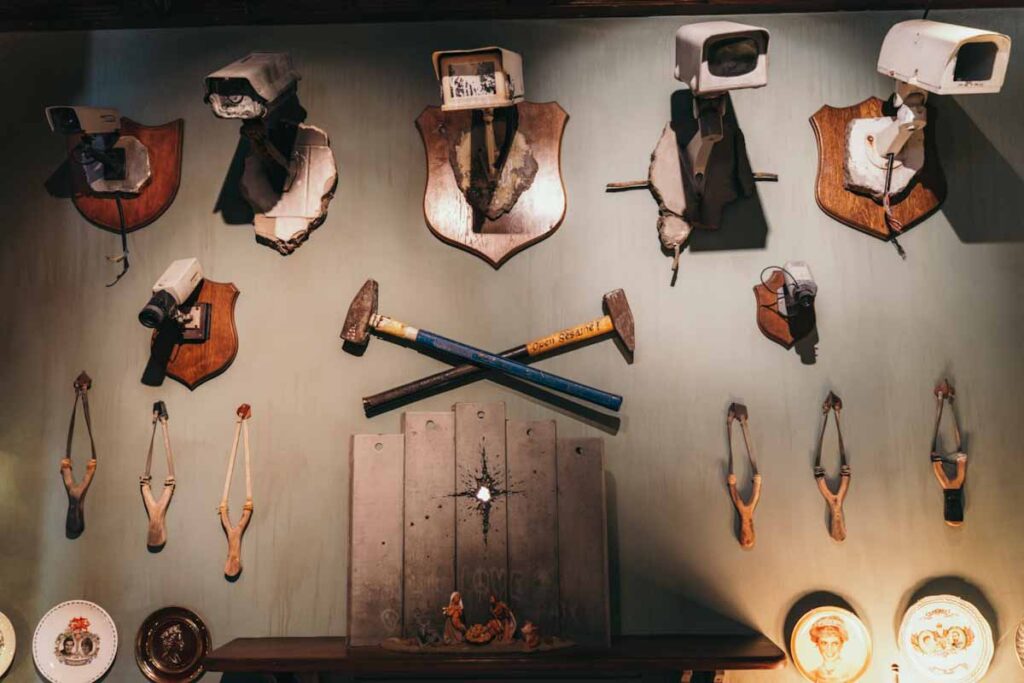
Church of the Nativity
The most important religious site in Bethlehem. This Church is believed to be built on the spot where Jesus was born. To enter the Church, you must bow your head through the tiny Door of Humility built in the Ottoman Era. Once you admire the detailed decoration in the main hall, descend the stairs into the Grotto of the Nativity. It is the place where Jesus was born. When we visited, we even saw a priest walking around the Church. However, expect lots of people to visit this site.
- Opening Hours: 6:30am to 7:30 pm and 6:30am to 6pm in winter.
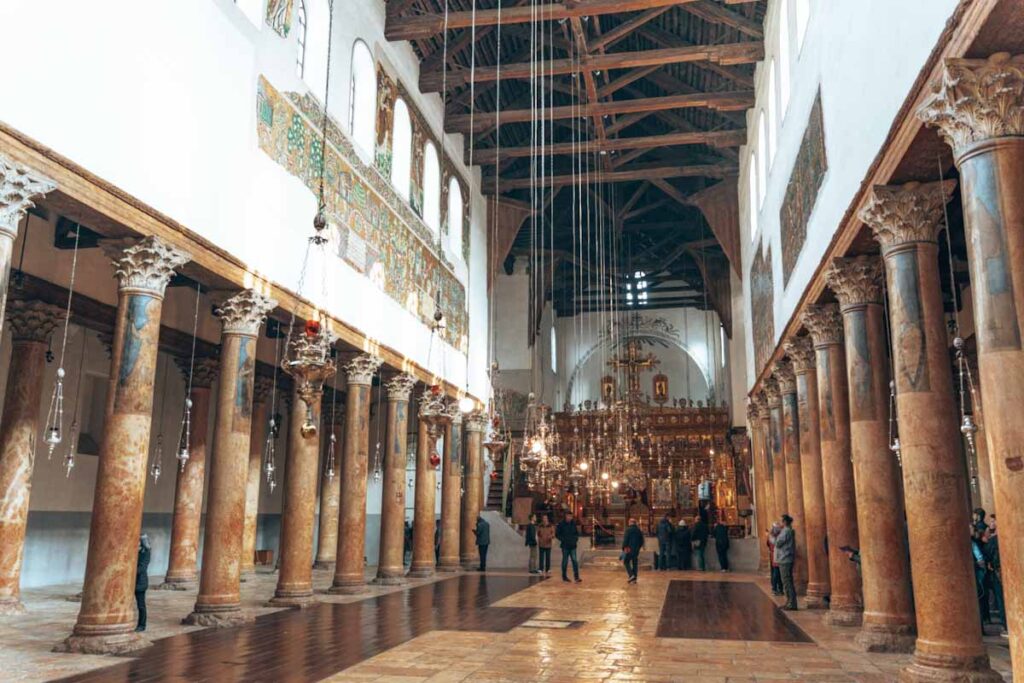
St. Catherine Church
Right next to the Church of the Nativity, there is St. Catherine Church. Visit the underground praying hall and the outside little garden. We liked this Church; very peaceful and atmospheric.

Milk Grotto Chapel
Visitors often overlook this Chapel, but once in the centre, it is just a short walk to visit this beautiful place. It is believed that it is where Mary and Joseph fed their baby, and after the milk dropped on the floor, it turned the red rock into white.
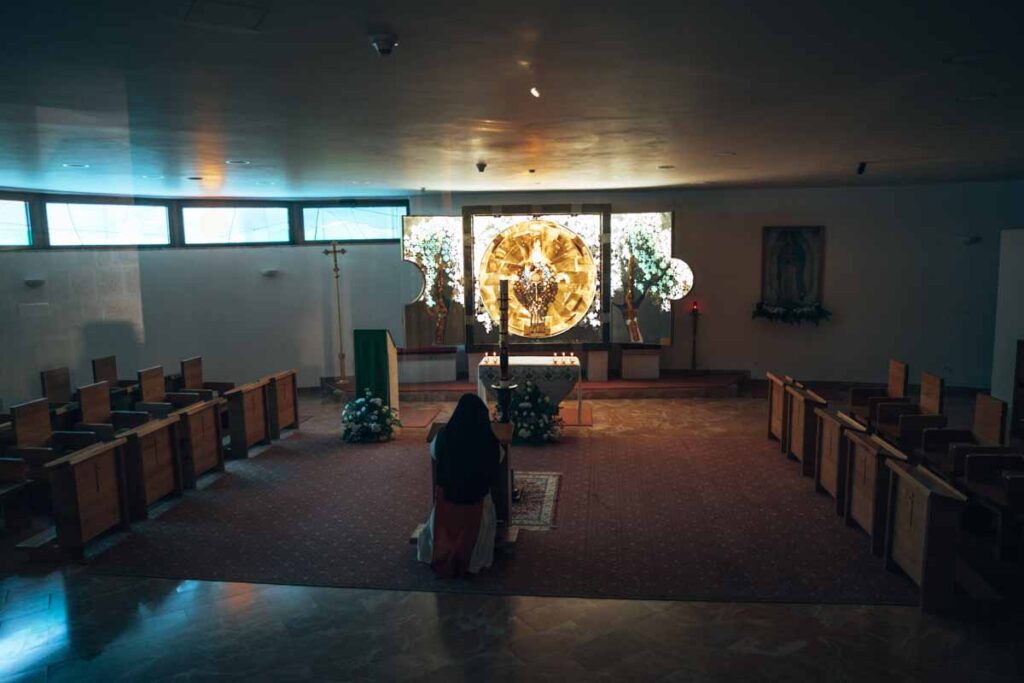
Green Market
The main souq in Bethlehem, you can visit after the Church as it is right in the centre. Here, you will meet very friendly people, have a chat with them, buy some fresh fruit or a small snack and absorb the atmosphere.

Refugee camps in Bethlehem
Another must and very important thing to experience not only in Bethlehem but the whole of Palestine is to visit refugee camps. There are two camps in Bethlehem. Dheisha and Aida. We visited both independently and spent a night in Dheisha with Ibrahim’s family. It was an unforgettable experience; you got to learn so much and hear the stories that you would never hear in media.
We visited the Aida refugee camp on our second day after we returned from Mar Saba Monastery. We walked through the camp, took some photos and did not experience any issues. People there are very friendly and welcoming, happy to see foreigners coming on their own. Right by the entrance, we were invited into the Car Mechanic shop because as soon as they saw us, they almost yelled with excitement. It was such a warm welcome; we had a nice conversation with a cup of coffee.
Essential reading: How to spend a night in a refugee camp in Palestine.
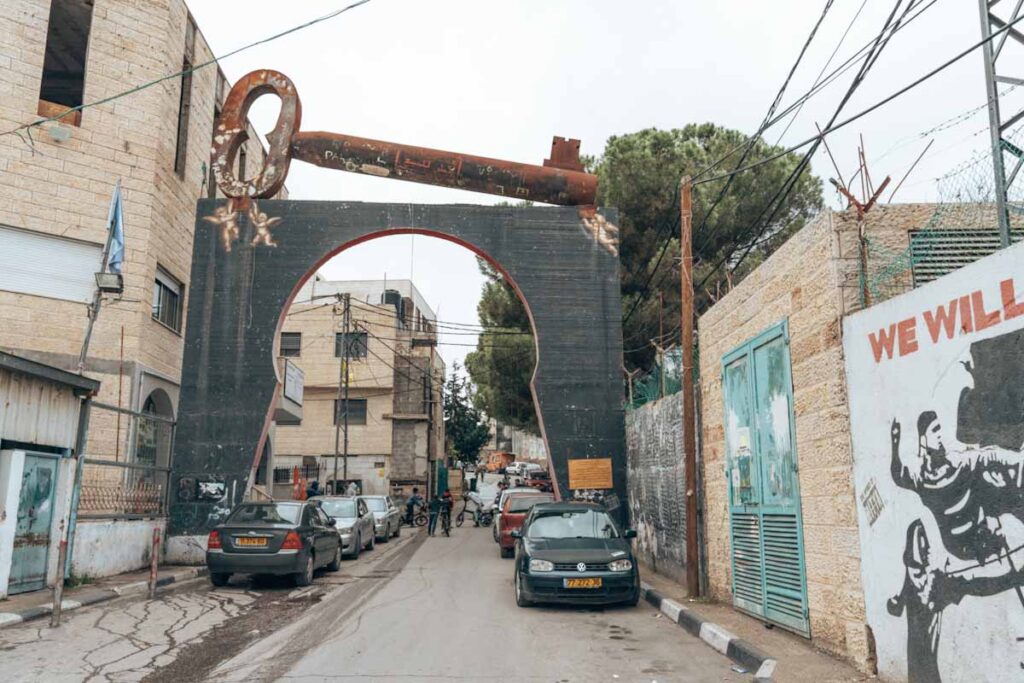
Mar Saba Monastery (Half-day trip)
Mar Saba is a dramatic cliff-clinging monastery half an hour from Bethlehem. It is our favourite place we visited as the monastery, and the surroundings are breathtaking. Women are not permitted inside, but let’s make it clear. It is the outside look over the monastery from the opposite slope that is the main goal of this trip. Men can enter inside and take a tour with one of the monks. When we visited in January, it was open between 9am to 2pm. Once you arrive at the monastery, follow the stairs and trail that leads down the valley. Once there, cross the small bridge over the river and follow the trail that takes you all the way up the slope opposite the monastery. From there, find a spot and the best viewpoints to view the Mar Saba Monastery. When we visited, we were the only ones who hiked on the opposite slope, but surely it is worth it; otherwise, you miss out on the main beauty. It takes only half an hour to get to the other side of the slope. Ensure you have water with you; it is quite warm when the sun shines. On both sides, there is a stall where two brothers sell some small snacks, tea, coffee and water.
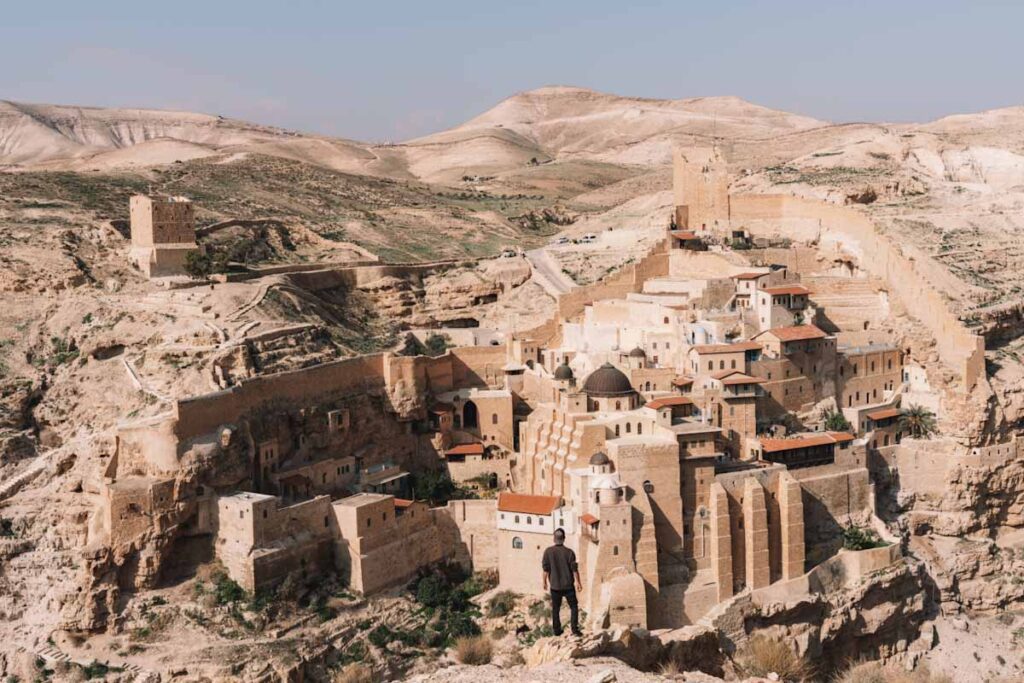
How to get to Mar Saba from Betlehem
Take a shared taxi (yellow minivan) from the central bus station located in the basement of the Bethlehem city mall, where KFC is. You’ll see a lot of yellow minivans waiting there. Search for one that goes to Ubediya. Be aware that some taxi drivers might want to cheat you; they told us that it is dangerous to go alone and that we should go with them, a private taxi for 150 – 200 ILS. We did our research and talked with locals, and we found it very safe and cheap to go independently. Shared taxi costs 5 ILS ($1.4), and the ride takes around 30 minutes, it is 12 km. The shared taxi stop is at the end of the village, by the brown sign pointing the way to Mar Saba.

From there, hike down the hill on the road, 4.5 km, until you reach the monastery. In the middle of the way, there is a nice viewpoint. Many taxis and buses with tourists or locals go there every day. You can also hitchhike. We were hiking, and after just a few metres from the shared taxi stop, a taxi with a French tourist stopped and offered us a lift to the monastery for free and we gladly accepted. We stopped at the viewpoint on the way down.

To go back, it’s the same process. Ask someone to take you up the hill, where the shared taxi dropped you. Or hike, but note this part is only uphill four and a half km. It will take around one and a half hours to hike, and it is a safe area. There is a local guy selling tea & snacks, and he offered to take us uphill for 19 ILS ($5.3). Since there were no more cars at the monastery when we finished exploring, we accepted his offer, as simply it was a faster and easier solution than hiking 4.5 km uphill. After 10 minutes ride, we arrived exactly when the shared taxi arrived, and we made our way back to Bethlehem from the same spot where they had dropped us off earlier (5 ILS).
Is it safe to go alone? Yes. We felt perfectly safe and comfortable. You basically just walk down the hill from Ubediya town; you have almost all the way the monastery in sight. There is traffic daily, either tour buses, many taxis and local people coming. Chances are that someone will offer you a lift, or if you feel like you can ask them & hitchhike.
- Opening times: 9am – 2pm
- Entry fee: Free
- Total time from leaving Bethlehem and being back to Bethlehem: 3 hours (9-noon)

HOW TO GET TO BETHLEHEM
From Jerusalem, we took bus #234 (5.5 ILS, 30 minutes) from HaNevi’im Terminal from Damascus Gate, which takes you to Checkpoint 300, which we crossed on foot. There is no control if you’re crossing in the direction from Jerusalem to Bethlehem, so it is very fast and easy to get into Palestine.
Another option is to take bus #231, which actually crosses into Bethlehem, but it takes 1 hour, and we felt like it is better to experience and cross Checkpoint 300 ourselves.
TIP: As soon as you get to Israel, get a Rav-Kav card for public transport. You can top it up in kiosks or online through the Rav-Kav Online app and then use it for buses in Jerusalem.
HOW TO GET AROUND BETHLEHEM
Taxi or shared taxi is the common way of transportation, and it is quite cheap. Yellow taxi with black sides is a shared taxi , and you can expect to pay 3 ILS for the ride in the city or to Dheisha and Aida refugee camps. If the taxi is only yellow, it means it is private, and the charge will be higher. You can expect to pay around 15 – 20 ILS for a private ride.
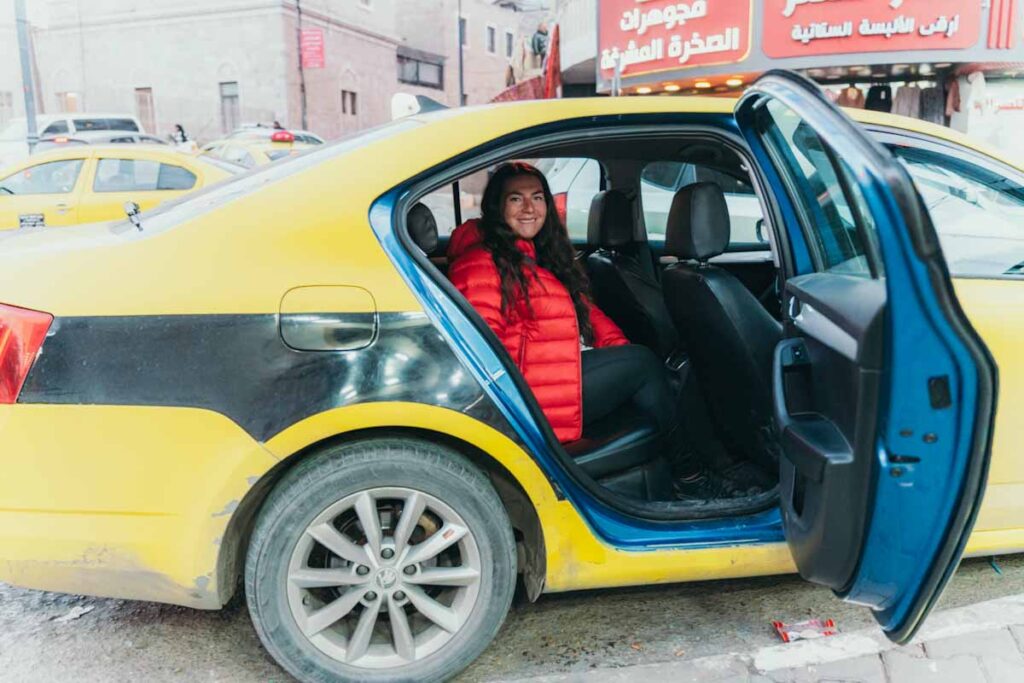
WHERE TO EAT IN BETHLEHEM
Afteem restaurant .
This restaurant is located on the corner opposite the Church of the Nativity. They serve delicious Masabacha, which is a warm hummus with whole chickpeas. It was also our go-to restaurant for falafel sandwiches. Very tasty.
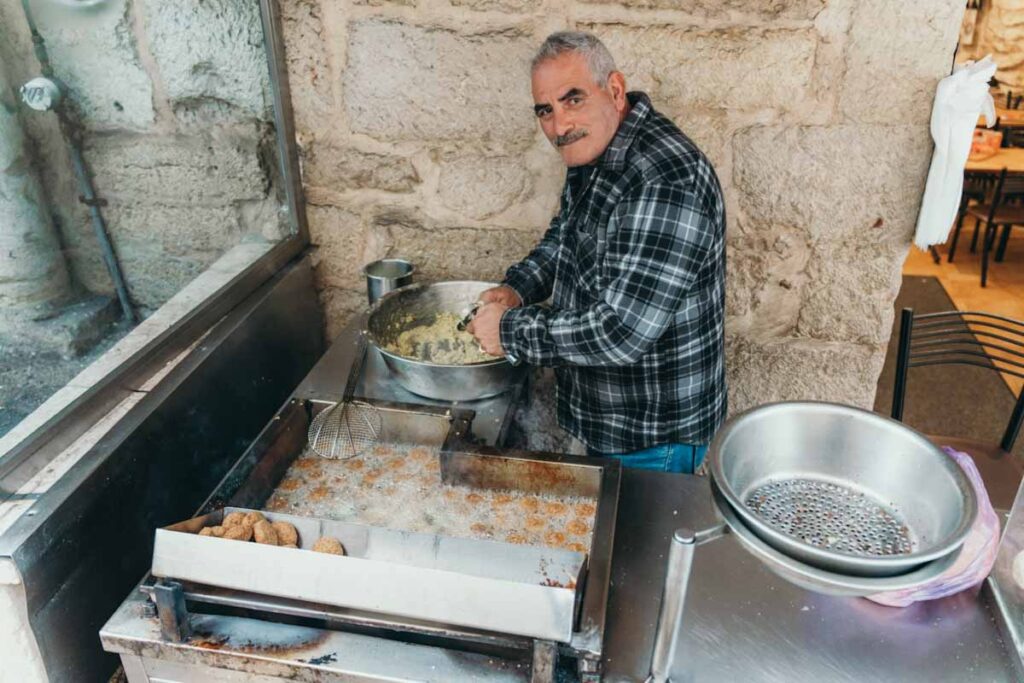
Stars Bucks
Located across Manger Sq, this cafe serves delicious coffee and snacks. Not talking about its name.
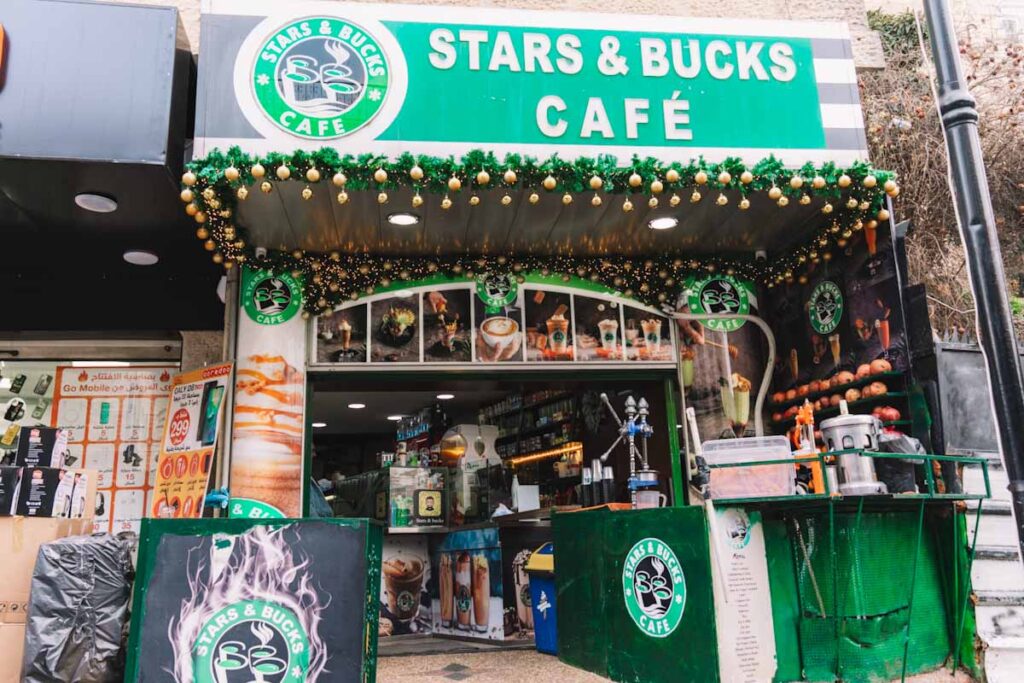
Coffee stalls on the square
You will see some coffee stalls on the square in front of the Church of the Nativity. Getting coffee, sitting on the bench and enjoying the atmosphere is worth it. Coffee costs only 1 ILS ($ 0.3) you won’t find cheaper.
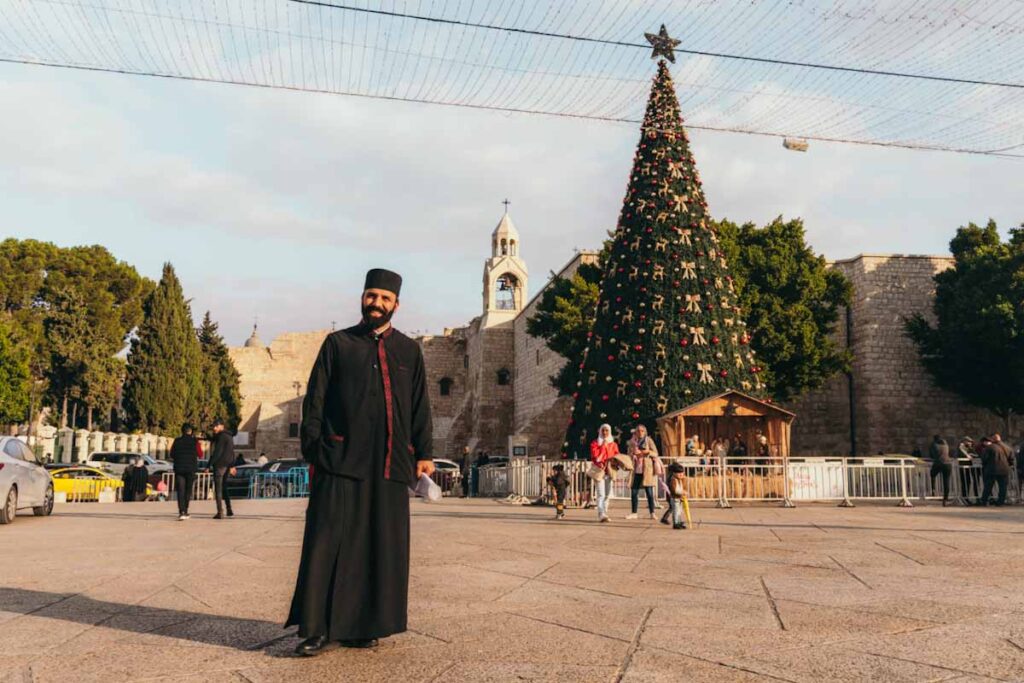
WHERE TO STAY IN BETHLEHEM
Dheisha Refugee Camp I Stay with a family in Dheisha refugee camp.
Walled Off Hotel I Stay here for the worst view in the world. This hotel is located right next to the Israeli’s separation wall.
DAY 4-5: HEBRON
Despite the fact that Hebron is the most problematic city in Palestine, it is a rich cultural and handicraft centre, and it is one of the most interesting places to visit in Palestine. What is the problem in Hebron? The city is divided into two areas H1: the area under Palestinian control, and H2: the area under Israeli control. And as if this is not enough, Jewish settlements are built within the old city. The city is divided by many checkpoints, and Palestinians can not walk on certain streets. The tension in this city is high, to say at least. You won’t meet many independent travellers here; we met only two other independent travellers; others came with a tour. The best thing to see in Hebron is visiting the Mosque and Cave of the Patriarchs, a holy place for Muslims and Jews and inside, it is separated by bulletproof glass.
Expect going through many checkpoints in Hebron, have your ID ready and be prepared for questions such as your nationality, why you are coming, and your religion. I already described it in the Checkpoints section.
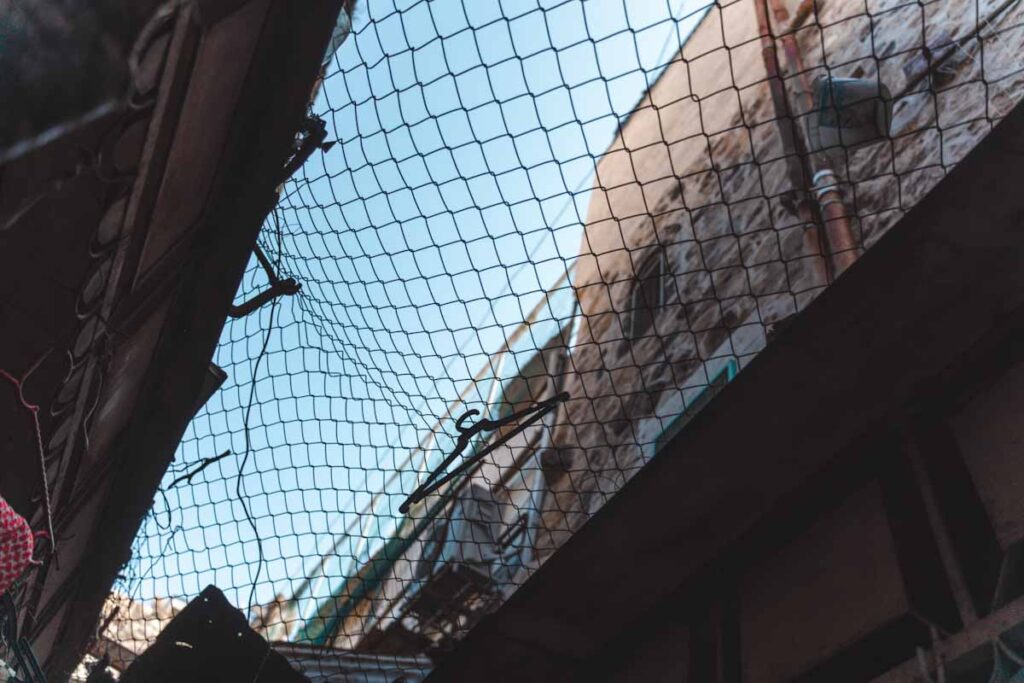
BEST THINGS TO SEE IN HEBRON
Area h1: palestine territory: market.
The main place to visit is the market that used to be bustling with life once upon a time. Today, some shops are open, but it is just a short part. The market has a fence from above to protect people from Jewish settlers who throw trash and worse at Palestinians. You can still see lots of garbage, church and different items thrown at people and stuck in the fence.
Actually, the Friends hostel, where we stayed, is located inside this market and to get inside you go through one of the shops. You can buy clothes, fruit and vegetables in the market, especially lots of colourful pickled veggies and olives. Some art shops are open, and it was a pleasure to talk with some shop owners about the situation and their opinion about the future of Palestinians. You will see many barriers on sidewalks that Israelis have placed.
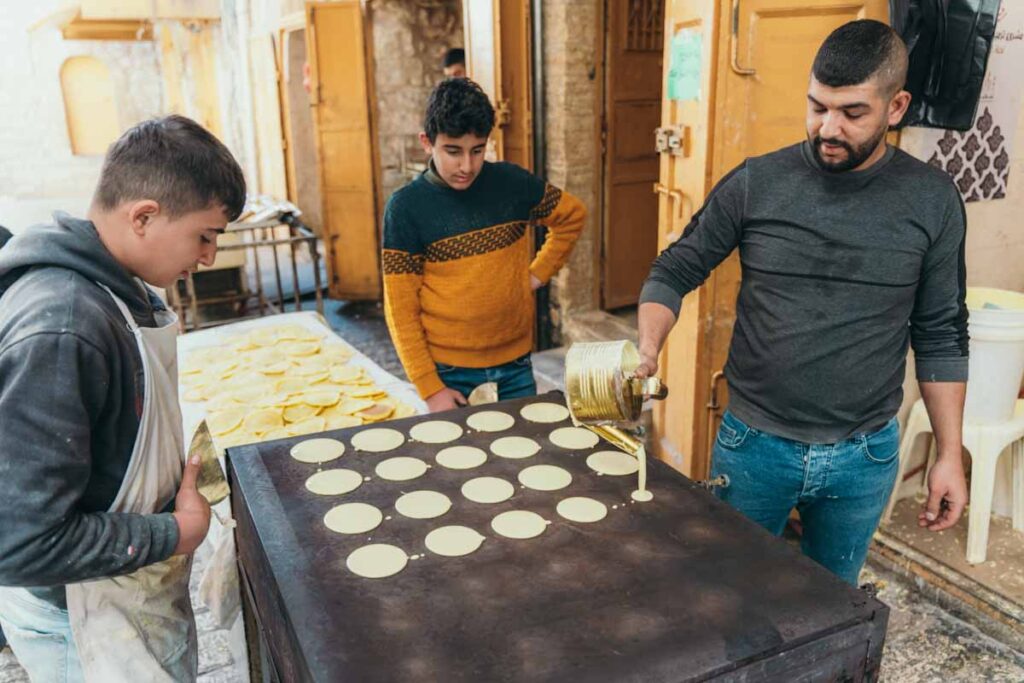
Tomb of the Patriarchs and Ibrahimi Mosque
An important holy place for both Muslims and Jews who believe here is the final resting place of Ibrahim. One building. Two separate entrances. Two checkpoints from each side to enter. The security and amount of military is insane. This must be one of the most controlled places in Palestine. We entered both sides and seeing two completely opposite worlds was interesting. In the middle of the building is placed the tomb, which is protected with bulletproof glass, as you literally see from the mosque to the synagogue.

Area H2: Israeli Territory
From the Ibrahimi mosque, you can continue your way to Area H2, which is hugely protected by the Israeli military. We walked through the deserted city, and in a 1 km walk, we were stopped at least six times. They checked our ID and then let us go. You can see lots of military presence here, and deserted streets with tens of shops closed down.

Herbawi Kuffiya factory
Everybody knows the Palestinian scarf; this factory is the first Kuffiya factory in Palestine. The entry is free; you can see how the scarf is made. There is also a little shop where you can buy a scarf. We bought ours there.

Glass Factory
Another souvenir we brought from Palestine is a Christmas decoration made in the Glass Factory. You can watch here how the glass is made, and there is a shop with hundreds of different glass products.
Sidr family
You can visit the Sidr family, one of many families living in the old town who was offered millions of $ to leave their house to make space for Jewish settlers. They refused. They welcome people from outside to come and talk about the situation. Read more in our separate post about Hebron.
Essential reading: The ultimate guide to visiting Hebron. The troubled city in Palestine. (Coming soon)

HOW TO GET TO HEBRON FROM BETHLEHEM
If you stayed with Ibrahim in the Dheisha Refugee camp in Bethlehem, just walk back to the main street and wait for the shared taxi van that goes directly to Hebron. It cost 10 ILS ($2.7); this is what we did. Otherwise, take a shared yellow and black taxi for 3 ILS, which takes you close to the Shepherd Hotel, which is the station for shared taxis. There, find the one that goes to Hebron.
HOW TO GET AROUND HEBRON
You can easily walk everywhere. Or catch a taxi.
WHERE TO EAT IN HEBRON
Who would guess that Hebron is the ultimate foodie destination? Everywhere you go, there is delicious food. A falafel sandwich typically costs around 4 ILS. Try also Palestinian chocolate; many stores in Hebron sell many kinds of small chocolate.

WHERE TO STAY IN HEBRON
Friends Hostel Area B I The best and most welcoming place to stay in Palestine. Akram really makes sure you feel well; his place is full of useful maps and recommendations on what to visit. He made sure he sat down for tea with us, let us ask as many questions about the situation in Hebron and Palestine as we wanted, and explained everything passionately. This hostel is located right in the centre so you can walk from here everywhere.
You can also stay in the refugee camp at Hebron Hope Guesthouse.
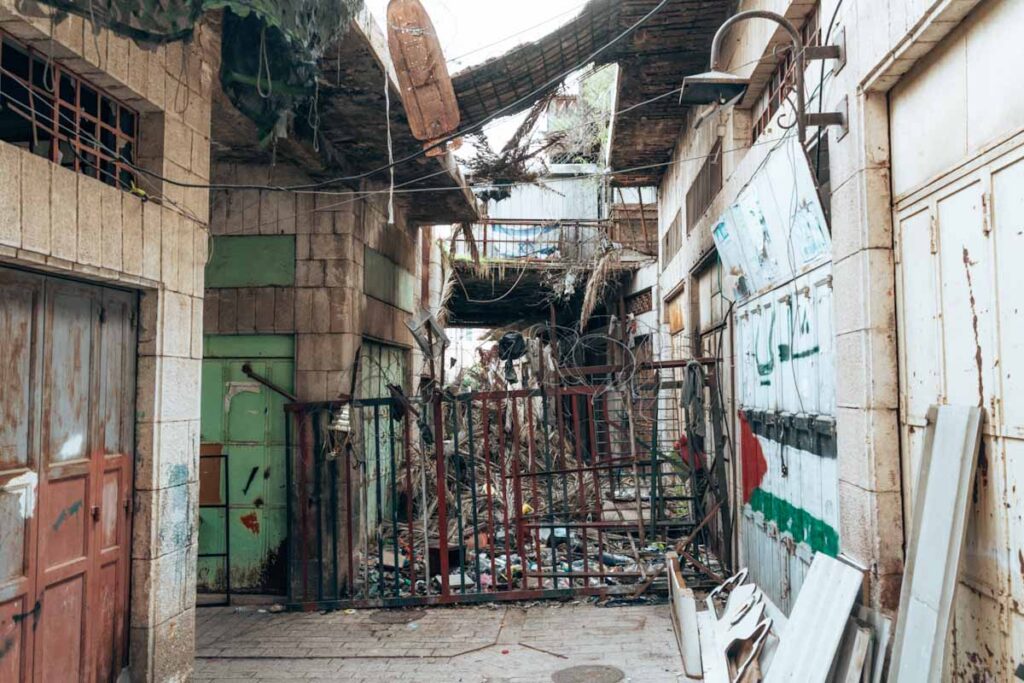
DAY 6-7: JERICHO
Jericho is one of the world’s oldest continuously inhabited cities and the hottest area in Palestine. Jericho doesn’t have the old historical centre. Still, it is the monasteries carved into mountains, archaeological sights and close proximity to the Dead Sea that make it an attractive destination for foreign and local tourists. Two days are sufficient for the places below; if you want to visit the Dead Sea, you need to add one more day. On day 1, we started exploring late at 1pm by visiting Hisham’s Palace, Mount of Temptation and Jericho City Centre. On day 2, we hiked to St. George Monastery and explored the Jericho city and refugee camp where we stayed. I can not forget to mention the people of Jericho, who are amongst the friendliest we have met in Palestine. Many times we were invited for a coffee and friendly chat.

BEST THINGS TO SEE IN JERICHO
Hisham palace .
We arrived in Jericho around 1pm, and the first thing we visited was Hisham’s Palace. We took a taxi for 10 ILS from the city centre. But you can walk, it would take around 40 minutes. After you get inside the area, watch the 10 minutes documentary explaining the history of Hisham Palace. It is an Islamic ruin with one of the most well-preserved mosaics. Search for the Tree of Life, the most famous mosaic in the palace.
- Opening times for Hisham Palace: 8am – 6pm
- Entry fee: 10 ILS
- Time: 45 minutes
How to get to Hishams palace
You can easily walk from the city centre to Hisham’s palace. It is roughly 3 km and 40 minutes on flat terrain through the city. Or take a taxi for 10 ILS ($2.7).
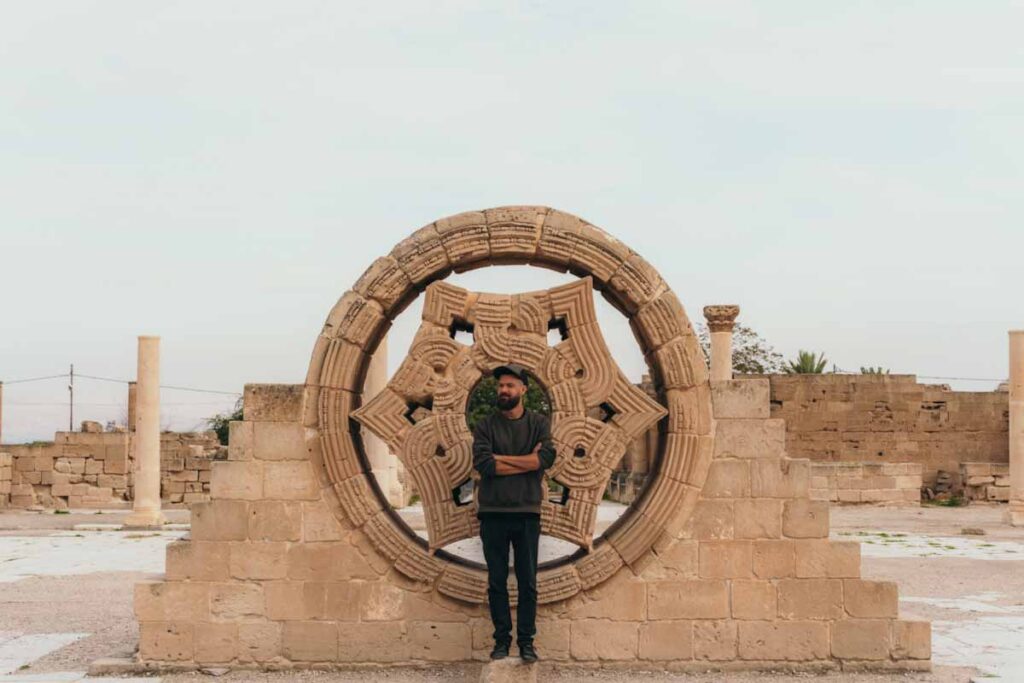
Mount of Temptation (Deir al Krntl)
This Monastery is carved high in the mountain into the cliff, which is totally impressive. I’d say one of the most beautiful sights in Palestine. Unfortunately, when we came, it was closed. It means they lock the gate, and you can not get inside. However, you can still have a nice view from the area around you and take a small hike that takes you under the Monastery, where you can see a lot of caves and the Monastery from below. The Monastery is built on the spot where Jesus resisted Satan after 40 days of fasting. You get amazing views over the Dead Sea and the agricultural area of Jericho.
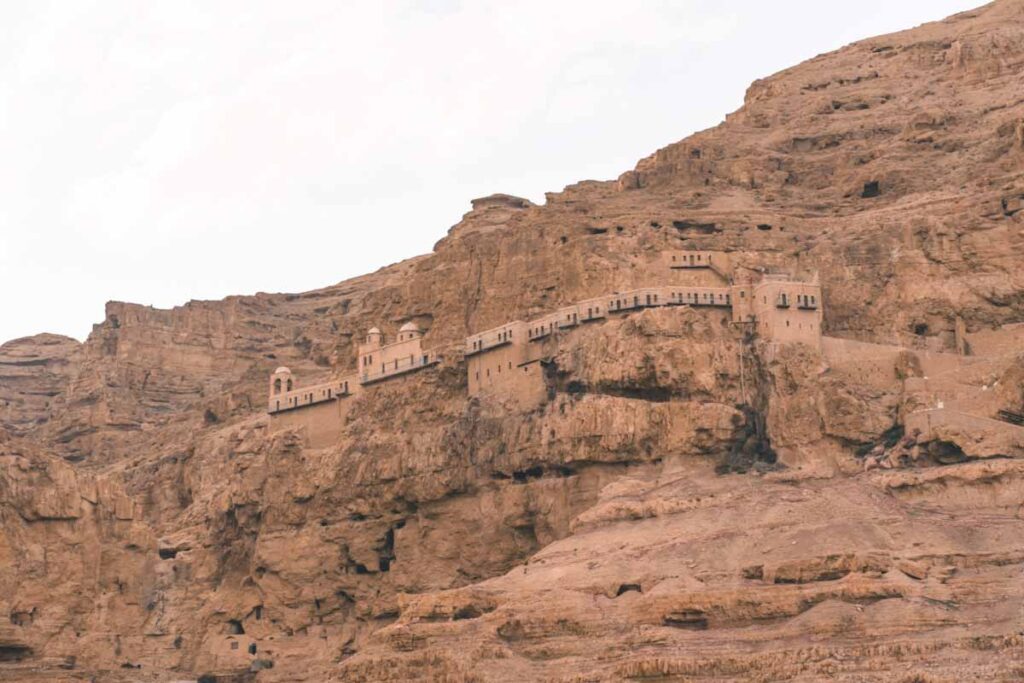
How to get to Mount of Temptation
From Hisham’s Palace, it makes sense to head to the Mount of Temptation, as it’s in the same area, only 4.5 km away. It’s the Monastery carved into the rock on the opposite hill. We took a taxi for 15 ILS to reach the bottom of the Mount of Temptation. It takes 15 minutes to hike on the gravel path to reach the top. It’s a pretty easy short hike; you see the Monastery right above you all the time. If you go from the city centre, just take a taxi for the same price.
After we were done exploring, we hiked down the mountain back to the road and saw a shared taxi coming. We asked the driver if he went into the centre and he pointed that we can jump in. So we did. We showed him where we wanted to go – to the Jericho centre, and he dropped us off there for 3 ILS. Otherwise, you can walk back to the main road and catch any shared or private taxis passing by.
Another option to reach the Mount of Temptation is to go by cable car, which costs 60 ILS. A big restaurant is on the top where the cable car stops, just a few metres from the entrance.
- Opening times: Mo, Tu, We, Th, Sat: 9-15:30, Sun: 10-15, Friday: Closed
- Entry fee: free

St. George Monastery
Another monastery carved into the cliff. You get a fantastic view from the upper viewpoint. Be prepared for many locals pushing you to take a donkey ride down to the Monastery. Apparently, beautiful paintings are inside the chapel, and you can see parts of the original mosaic floors.
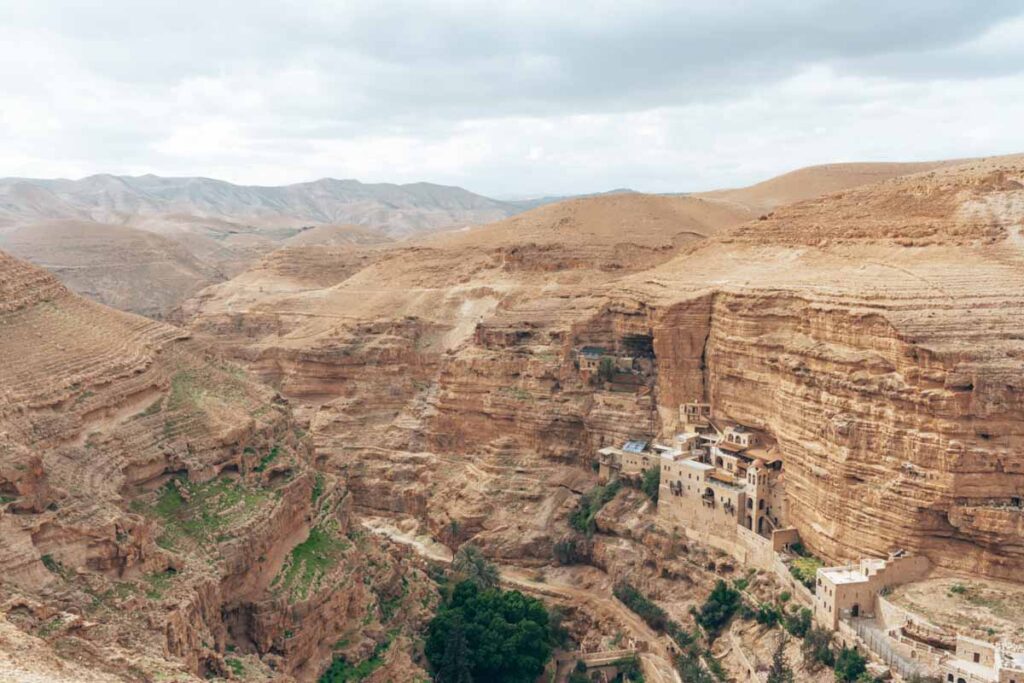
How to get to St. George Monastery from Jericho
Reaching the Monastery is straightforward. From Jericho city centre, it’s 6 km to reach the Monastery. You should open Maps.me while reading this description, as it will be easier to understand. From the city centre (Mount 41 hostel), walk or take a taxi to Wadi Al Qelt hostel – it’s 2,5 km through the city and along the road.
When we walked this way, after the roundabout towards the Wadi Al Qelt Hostel, the car with two friendly locals stopped and offered us a ride for free to the Monastery. Which was super nice, so you can also try to hitchhike; locals in Jericho are very friendly.
Ok, if this won’t be your case, the way is following. There are two ways from Wadi Al Qelt Hostel. The first one is to follow the road for cars, which will take you to the Monastery. It’s a steep uphill road. This way, you turn up at the Monastery’s viewpoint (the most beautiful one). You can also take a taxi from Jericho centre to this viewpoint; when we asked around, the lowest price was 10 ILS per person. To reach the Monastery, you just walk from the viewpoint down the steep road; it takes maybe 10-15 minutes.
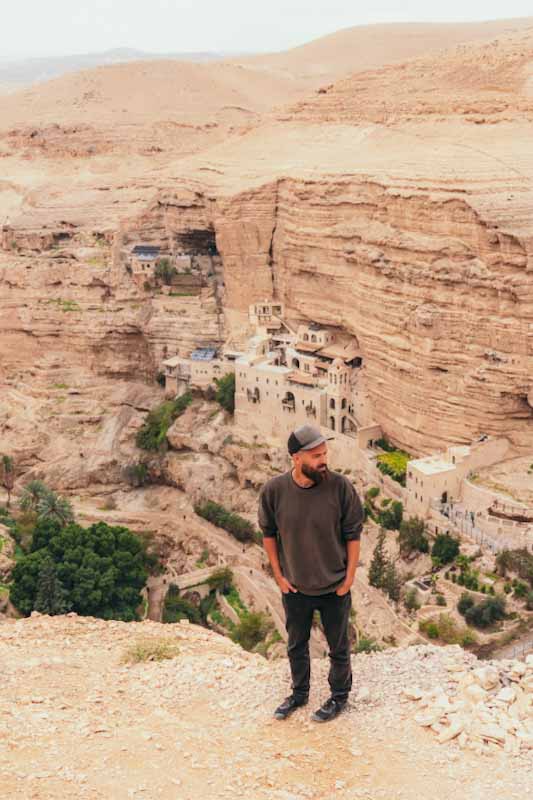
Second option: Little bit before Wadi Al Qelt hostel, there is a brown sign on your right that says ,,Herod’s Palace”. Turn right. After you cross the bridge, turn left and follow blue or red signs that will take you through the valley, through the beautiful scenery to the Monastery. It takes roughly 1 hour and 15 minutes through this hiking trail. The first part is uphill, and the rest is more or less flat. This way, you will appear directly by the Monastery. To get to the viewpoint, it’s a very steep hill.
Therefore we recommend you go the other way around (like we did). Walk along the road for cars to get to the top viewpoint (or take a taxi), then check the viewpoint and hike down to the Monastery to explore. After you’re done, walk back to the city through the hiking trail. Btw, the hike through the valley was wonderful; we enjoyed the scenery very much and met many marmots. Bear in mind that this hike goes through the valley, and we were the only people on the trail. It’s a hiking trail, and only a few people actually do it. However, we enjoyed the views, and the valley was stunning. After the hike, we returned to the road close to Wadi Al Qelt hostel by the brown sign described above. From here, it is roughly 2,5km back to the centre. We took a taxi for 15 ILS.
- Opening times of St. George Monastery: 9-13, but when we arrived at 12:20, they had already closed
- Entry fee: Free
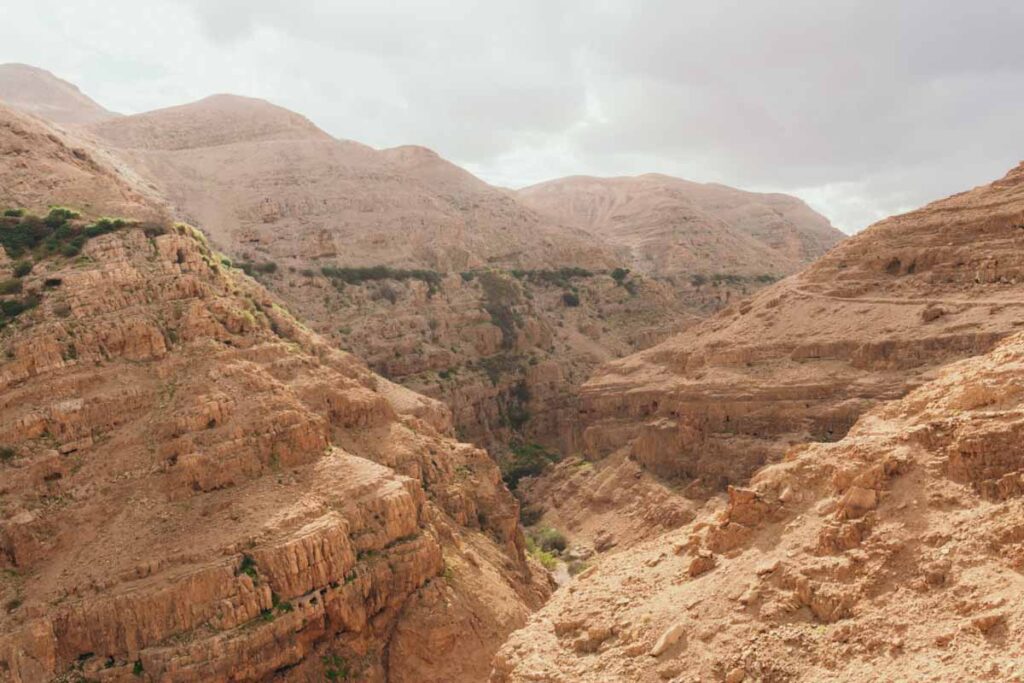
HOW TO GET TO JERICHO FROM HEBRON
Take a shared taxi from this location. You can also find shared taxis to Ramallah and other locations from here.
We took a direct shared taxi to Jericho for 30 ILS. The ride took 1 hour and a half. Be careful; some taxi drivers are very sneaky and wanted us to go to the wrong location just to get money from us. Luckily other taxi drivers teamed up and took us to the right car to Jericho. The second option is to take a shared taxi to Al-Eizariya (20 ILS) and change there for another shared taxi to Jericho (10 ILS).
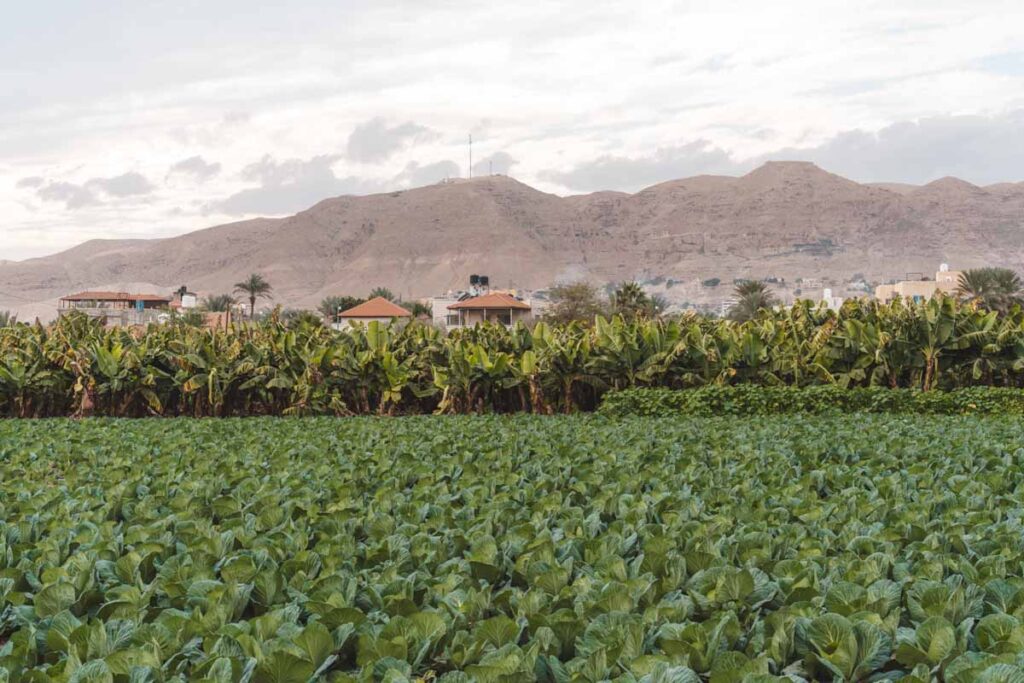
HOW TO GET AROUND JERICHO
If you stay in Jericho refugee camp, like us, reaching the city centre is around 3 km. The good thing is a shared taxi stops in front of the Sami Hostel , where we stayed and for 3 ILS goes to Jericho centre. This shared taxi runs very often, so it is not a problem. Once in the centre, you can easily walk almost everywhere.
Prices of shared taxis in Jericho
- Jericho Centre – Hisham Palace: 10 ILS
- Jericho Centre – Mount Temptation: 20 ILS
- Jericho Centre – St. George Monastery: 15 ILS
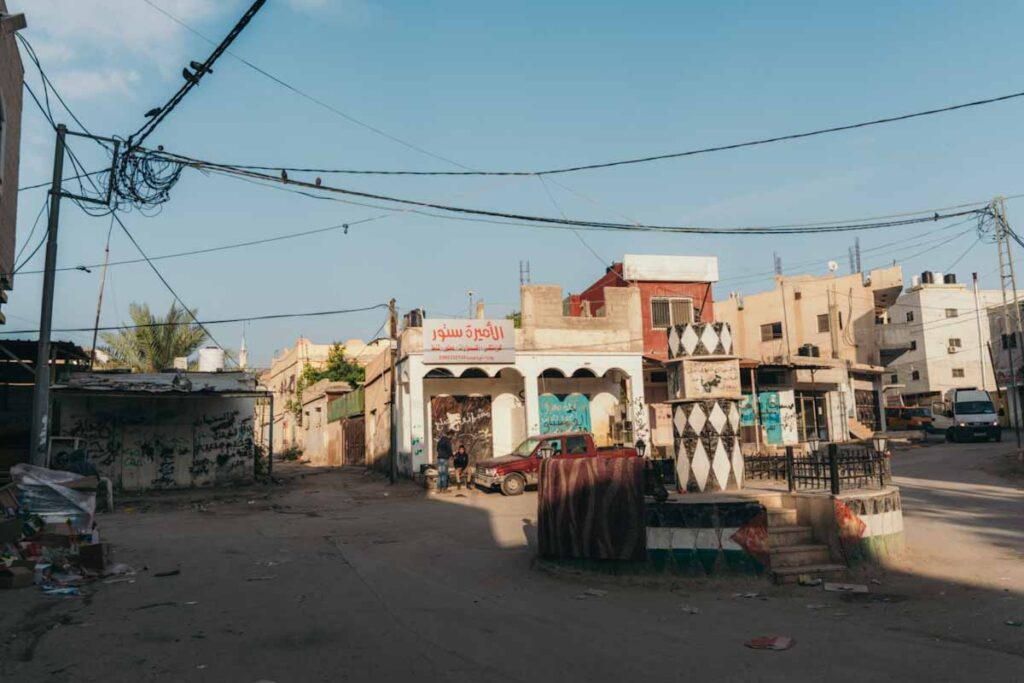
WHERE TO EAT IN JERICHO
Restaurants in the city centre (roundabout by Mount 41 hostel) are very overpriced and cheat customers by serving small portions. If you go a bit further away, you’ll find good local eateries.
Abu Feras restaurant – our favourite place to go. Falafel or hummus 5 ILS. They also have shawarma, Palestinian food (rice, small dishes and chicken) and more. It’s across the Bank of Palestine in this location.
مخبزومعجناتالشام – if you want a change from all the typical Middle Eastern food, head to this bakery , as this bustling place serves the best pastries we had in a while. Pizzas, different kinds of filled pastries. Super yummy. Prices range from 3-10 ILS.
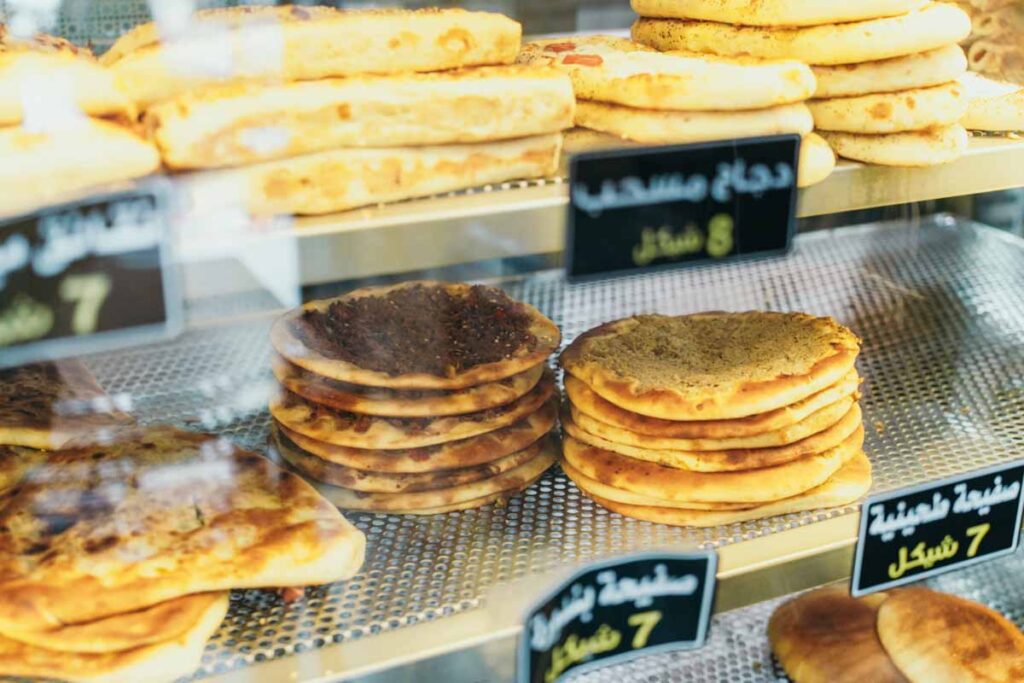
WHERE TO STAY IN JERICHO
Jericho has not many budget options. However, depending on your preferences and budget, you can easily find a place to stay. You can stay in the city centre or a refugee camp. We recommend you stay in the camps as they are a big part of Palestine, and everyone should experience the reality.
Budget I Sami hostel – the backpacker’s option in Jericho; this hostel is located in a refugee camp, that’s why we decided to stay there. The owner is friendly and helpful. It’s located 3 km away from the city centre however there are restaurants and stores right in front of the hostel. A shared taxi (3 ILS, 15 min) runs all the time between the centre and Sami, and they stop right in front of the hostel, which is super convenient. You can see life in the Palestinian camp, which was the first one built in Palestine. The area is safe to walk even after dark. You can book dorms online, but double rooms are available too, and the owner will most likely upgrade you. Also, it is a great option to talk to people about life in a refugee camp, the current situation and their opinions. A private double room costs 120 ILS ($33).
Want to stay in refugee camps in Palestine? Read our experience here.
Mid-Range I Mount 41 – if you don’t want to stay away from the centre, the best option is to stay in hostel Mount 41, which has the best central location in the city. However, there are only dorms.
Mid-Range I Auberg-Inn Guesthouse – another popular option amongst travellers. It’s close to the Mount of Temptation, the rooms are big, and the place is clean.
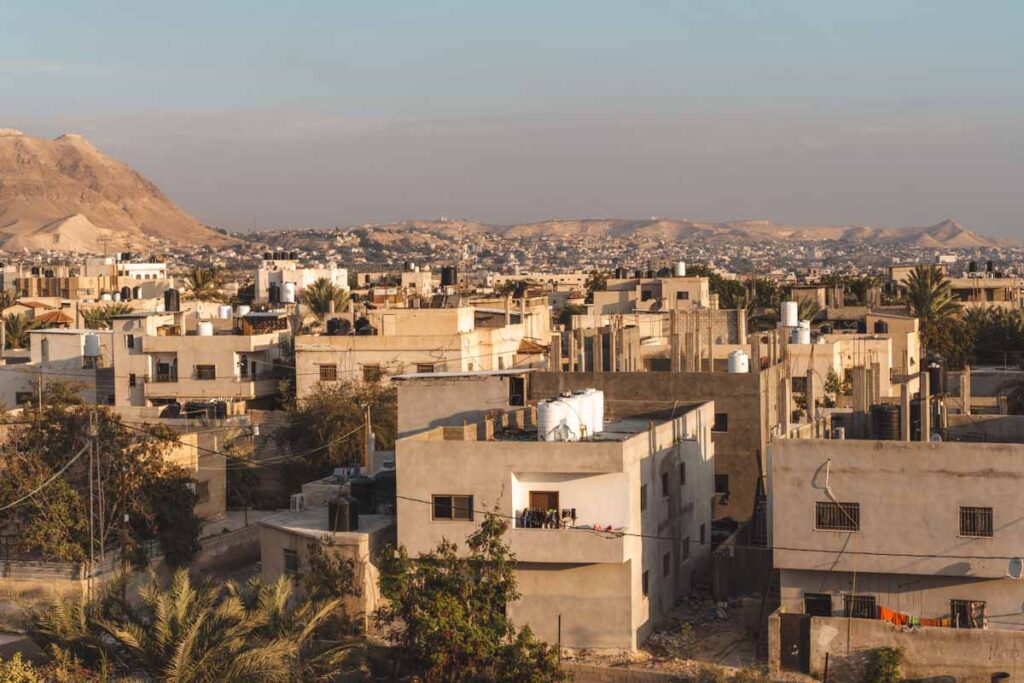
DAY 8: RAMALLAH
Honestly, Ramallah was a bit disappointing as we felt like not much was going on here. We enjoyed the Christmas decorations around the cosmopolitan city and the good Palestinian pizza in local bakeries. But also the famous local ice cream you can taste at Rukab’s Ice Cream.
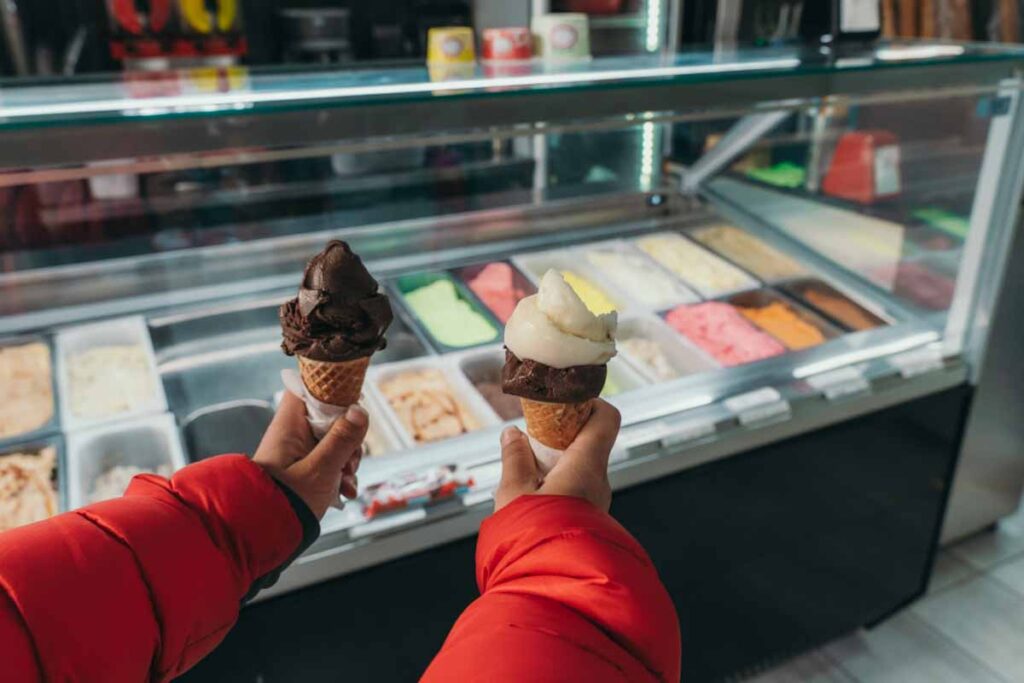
BEST THINGS TO SEE IN RAMALLAH
Yasser arafat museum.
As the name suggests, this museum is dedicated to the life of Yasser Arafat. In my opinion, the museum is made in quite a chaotic way, and if you’re not familiar with Yasser Arafat’s actions, it might be a bit confusing. A whole section in the museum shows the life of Yasser under the Israeli Siege during the years 2001 and 2004. The first thing you see when entering the area is the Mausoleum. However, these days, it is not guarded by soldiers anymore.
- Opening times of Yasser Arafat Museum: 10am – 6pm
- Entry fee: 5 ILS ($1.4)

Taybeh Beer Brewery
We wanted to visit the beer brewery in Taybeh, so we went to parking lot where buses to Taybeh goes. We entered the bus and waited half an hour for the bus to fill up, but no one showed up. We used Google Translate, and the driver said it could sometimes take even a few hours. We searched for a shared taxi instead, which was right on the road next to this parking lot . We were the first ones in the taxi, another two ladies joined, and then we waited another half an hour, and no one showed up. We gave up as we thought getting back might be even more problematic.

HOW TO GET TO RAMALLAH FROM JERICHO
Take a shared taxi that has a station in the centre opposite the Mount 41 hostel in Jericho. They charge 18 ILS.
How to get around Ramallah or to other cities
Ramallah is very confusing with the shared taxis system as there are many stations from where the shared taxis or buses leave, The best is always to talk to local people, and they will show you where to go.
WHERE TO STAY IN RAMALLAH
Eco Hostel Ramallah is a place where travellers meet in Ramallah and also volunteer. The German guy checked us into the hostel earlier than check-in time, which we appreciated. We stayed in shared dorms for 75 ILS ($20) per person, which is quite a lot in our opinion; it was the most expensive accommodation we had in Palestine. The place is very clean; you can use the kitchen, fast Wi-Fi, free water and a coffee & tea station.

DAY 9-10: NABLUS
Nablus surprised us with its beautiful atmosphere and old city, where we felt like being back in Tripoli in Lebanon . It is a conservative and authentic city that does not attract many foreigners. At the time of our visit, a new terrorist group was forming with the aim of fighting the Israeli forces. The area from Nablus towards the north is quite sensitive, and during our stay, we were informed by our hotel not to go outside after sunset. The whole old city and market shut down before 5pm, which is when we should go back to the hotel. One evening, around 5pm, we were already chilling when we heard gunshots right in front of our window. Hundreds of people of this Nablus group with guns went into the streets and shot into the air. That day, we saw a small boy holding a huge gun and casually walking around the market. Even though it sounds dangerous place to be, this group aim to protect Palestinians, and you, as a tourist, have nothing to fear about. However, if the bullets are in the air, they must also go down; so it is better to be inside your hostel in the evenings.
That night, there were big riots close to Jacob’s Tomb as Jews, and the Israeli army, which protected them, came to pray at this holy site. There was shooting, fire on the streets and fights until late that night. In the hostel, we met US journalists who were preparing to go there to film and make a report on this.
People in Nablus are suspicious of foreigners at first, so they checked on us many times, asking where we are from, if we are journalists, and why we came. After we explained we were just tourists, they relaxed and were very nice to us. Actually, Nablus is a place where we would like to return one day.
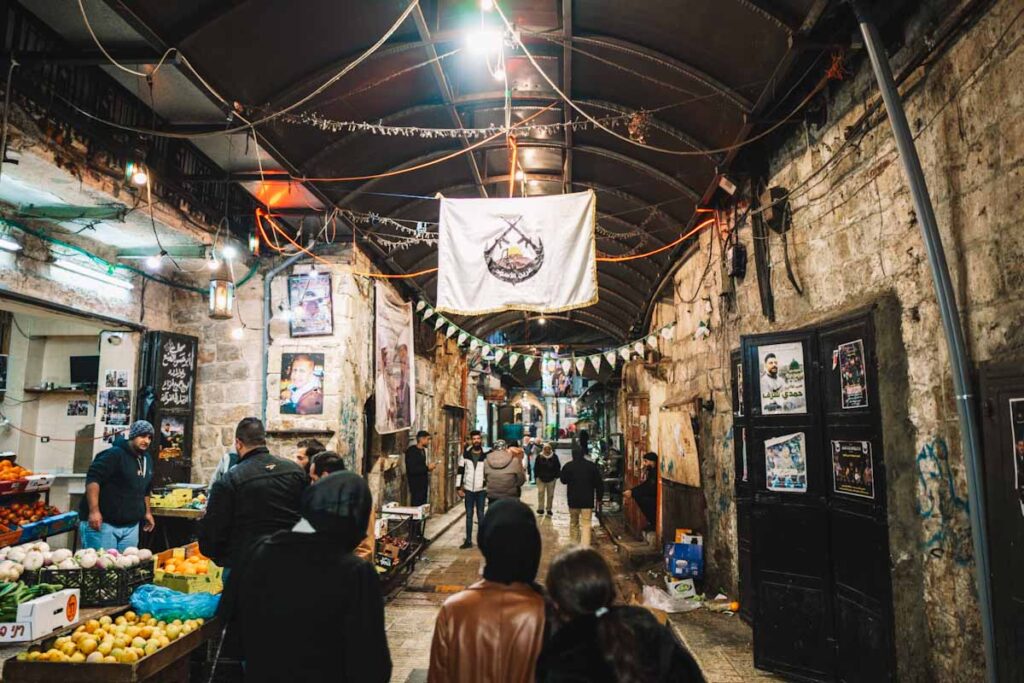
BEST THINGS TO SEE IN NABLUS
Traditional souq.
This souq had many shops with traditional products and crafts, where the recipe is passed from generation to generation: Halva, sweets, honey. There is even a store with a crocodile and snake skin that the owner brought from India. The whole market and old city are covered with posters and flags of the activist group, showing martyrs killed in fights with Israel.
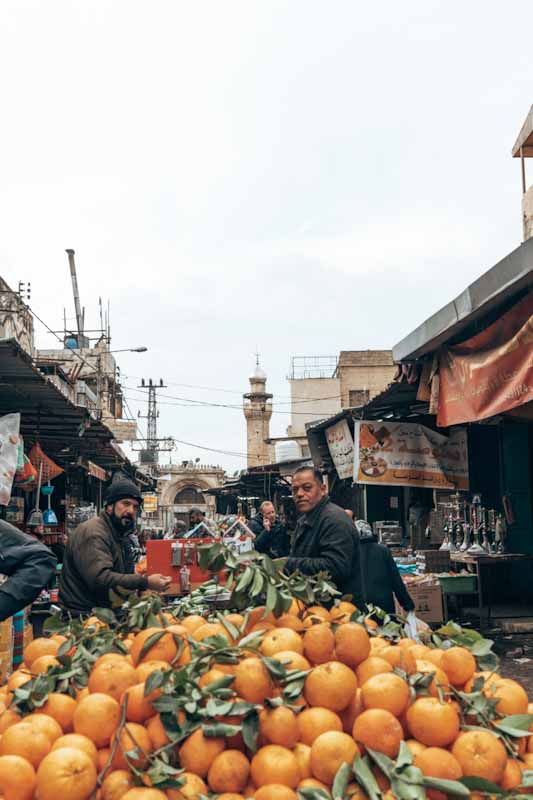
The old city and watch tower
The old city has an authentic vibe, narrow streets and charismatic stone houses. Come to the square with the watch tower, have a coffee from one of the stalls and enjoy the place. It has identical Ottoman Era architecture as we saw when we visited Damascus during our trip to Syria.

Try the best Kunafeh in Palestine in Al Aqsa Kunafeh , the famous Kunafeh place in Palestine. Their Kunafeh tastes like heaven, and there is no wonder why this place is bustling with locals every day. You can also see the whole process of making kunafeh which is a cool experience.
The next sweet thing you must try is Tamriyah , a fried pastry filled with semolina pudding that costs only 1 ILS. Zalabye Pumpkin is to die for. It is something like a crepe filled with sweet pumpkin filling and then fried. It costs 7 ILS and is totally delicious. Halva . Oh, halva. We visited two traditional places where they make halva, the owners took us inside, showed us around, and gave us a taste of their delicious halva, and we bought a few boxes to bring back home with us. The food in Nablus is fresh and so good.
You can get local Palestinian food, falafel sandwiches or hummus in many places. We didn’t make a mistake in any of the eateries we visited in the old town.

Soap factory
There are numerous soap factories in Nablus. Visit one, check out the colourful soaps and lovely smell and learn about the soap-making process.
As you can guess, Nablus is our favourite city in Palestine, and that’s why we dedicated a whole separate post about Nablus and the best things to do and eat there, but you can also read about the safety situation.
Read more in our post: How to visit Nablus, Palestine, in 2023 & Is it safe? (Coming soon)
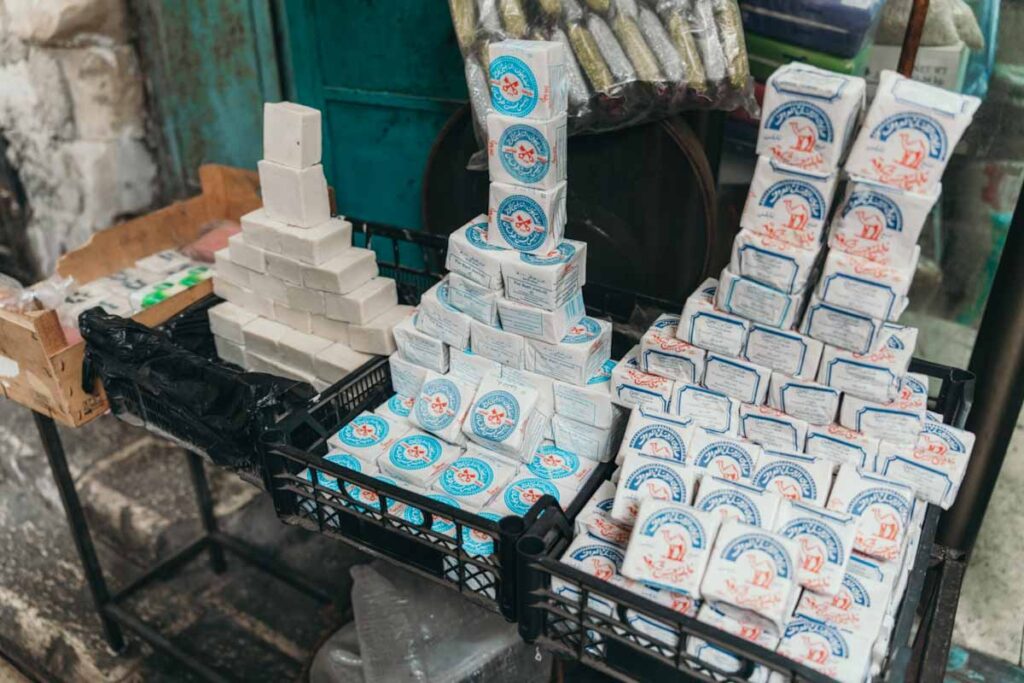
HOW TO GET TO NABLUS FROM RAMALLAH
We asked the local man where the shared taxi have a station, and luckily he took us to the building, where we took a lift and after we saw the place where many share taxis stand. We paid 17 ILS. The location of the multi-floor building from where the shared taxis leave is here .
HOW TO GET AROUND NABLUS
Stay in the centre of Nablus, and you can easily walk everywhere. If you want to go further, take a taxi for 5-10 ILS.
WHERE TO STAY IN NABLUS
Turquoise Guest House I without a doubt, is the best place to stay in Nablus and maybe the whole of Palestine. It is right in the old town, located on the second floor of the stone house. There are some private rooms and also separate dorms for men and women; that’s where we stayed. We met interesting people here, travellers and volunteers who helped at Turquoise Guest House. The owner and family took the time to discuss things about Nablus; they have generally been very helpful. The guest house has an amazing rooftop from where you can see the whole of Nablus. After sunset, it’s a show of lights.

DAY 11: JENIN
Jenin is not your typical holiday destination as it is a place of frequent riots and a place where the Palestinian journalist Abu Akleh was killed when reporting for Al Jazeera. Her face is a symbol of Palestinian activism. You will see graffiti with her face and posters all around Palestine.
When you cross the Emek Harod checkpoint to Nazareth, expect you will be suspicious as only activists and journalists usually go to Jenin. We decided not to spend a night there and only go for a day trip. Jenin is a traditional Palestinian city with similar vibes to Nablus. We felt there very well, safe and welcomed. People stopped us on the street and wanted to practice English.
The market in the centre, together with the one in Nablus, is the best market we visited in Palestine. We wandered around its streets for a couple of hours. We used our time, especially for walking around the centre of Jenin, talking with people, and tasting some food and pomegranate juice. And then, we took a shared taxi towards the border as the plan that day was to make our way to Nazareth, Israel.

HOW TO GET TO JENIN FROM NABLUS
In Nablus, take a shared taxi to Jenin from this location . It costs 16 ILS.
WHERE TO STAY IN JENIN
Jenin Creative Cultural Center – I got in touch with Yousef through Facebook messages . He runs this place and is a director of an NGO in Jenin. They charge quite a higher price for accommodation, but since there are not many hotel options, this is the place to be. We spent a half day in Jenin on the way to the border, so we didn’t stay overnight.

HOW TO GET TO NAZARETH FROM JENIN
Take a shared taxi from Jenin to Jalamah, the city right by the Emek Harod Checkpoint, where you cross to Nazareth in Israel. We asked locals, and they brought us to the shared taxi location. We paid 4 ILS for a ride.
We already described the Emek Harod Checkpoint above in the Checkpoint section .
After you cross the checkpoint, you find yourself back in Israel. Follow people and go outside of the building. Then continue your way to the bus stop by the main road. On google maps, you find the bus stop as Jalamah Checkpoint and wait for the bus to Nazareth. Check the Moovit App to find the bus that is going there. We took bus #52 and then changed to bus #354. More buses are going as well as taxis. It is only 25 km from Nazareth.
Read more: Visiting Israel on budget: Tips & Perfect 5 days itinerary. (Coming soon)

More from the Middle East
Palestine / israel.
How to visit Jerusalem in 24 hours: Safety, Tips, Itinerary
Visit & Stay in refugee camps in the West Bank.
Taba Border Crossing: Dahab (Egypt) to Eilat (Israel) with Troubled Stamps in Passport
How to travel to Lebanon & Ultimate 11 days itinerary
The best things to do in Beirut, Lebanon
Is it safe to travel to Lebanon? Our experience
How to travel to Syria & Is it safe to visit?
How to travel to the Turkish Republic of Northern Cyprus
Travel off the beaten path in Cyprus
Epic road trip: The King’s Highway in Jordan
Wadi Rum: Overnight in the desert & Know before you go
How to travel to Aqaba, Jordan & Ultimate beach guide
How to visit Petra and Little Petra in Jordan
It’s time to plan your trip!
Find our travel resources below that help you plan your next trip. Good luck and safe travels.
Book your flight
Skyscanner is our favourite tool for searching for the cheapest flights and flight combinations. Multi-city or Explore Everywhere helps us to find real bargains.
The best platform to rent a car and compare the prices for your next road trip anywhere in the world is Discovercars.com . The booking process is hassle-free.
Find your acommodation
On Booking.com we always find the best deals for accommodation. Another great option for cheap accommodation is Hostelworld .
Travel insurance
We always recommend IATI Travel Insurance which offers excellent plans. As a reader of Broken Navigation, get an exclusive 5% discount. For Europeans Truetraveller offers perfect travel insurance for the best price.
Explore more with Tours
Some places are better off explored with a knowledgeable guide. Or, if you simply want to save time and hassle, we recommend GetYourGuide . Another great option that also has an amazing range of activities is Viator .
protect yourself online by VPN
We always use NordVPN everywhere we travel for safe internet browsing and access to specific sites that might be blocked.
Disclosure: We recommend only companies we personally use. If you book services through any of the affiliate links in our posts, it earns us a small commission at no extra cost to you.
Travelling for years now, she found the passion in unique and off the beaten path places. Romana is a food lover, but it doesn’t stop her from hiking the mountains for several days. By sharing her experiences, she wants to help you experience the same.
You may also like
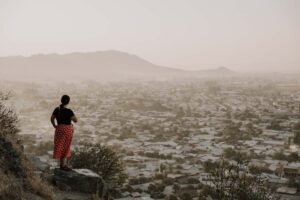
Discover the Best of Osh: Your Ultimate Travel Guide

Top Places to Visit in Uzbekistan in 2024 & 2 Weeks Itinerary

Ultimate Travel Guide to Beirut & Top Things To Do in 2024
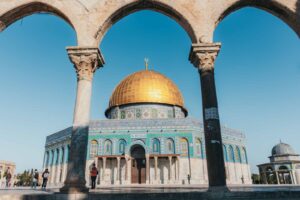
Visit Jerusalem in One Day, Top Places & Itinerary 2024
- Israel , Palestine
Leave a Reply Cancel Reply
Your email address will not be published. Required fields are marked *
Name *
Email *
Add Comment *
Email me when someone replies to my comment
Subscribe to newsletter
Post Comment
Subscribe to our newsletter
Get access to exclusive content and stay up to date with the latest travel tips and news.
A Lifetime Experience
Come and explore Palestine and Israel with us, let us show you this amazing land, you will meet the people, try local food, and make the bible come alive.
Discover the Holy Land
The place where the three religions meet. I invite you to explore and experience this ancient land, through the stories of people who call it home. A mosaic of cultures and beliefs, ancient features, and secrets buried deep underground.
The Largest Mosaic Floor in the Middle East
Book your tour to Hisham’s Palace to see the largest colorful mosaic floor of the bath complex that dates back to 743 AD during the Umayyad period.
Explore the Monasteries of the Judean Desert
An array of historic and religious sites dates back from the Byzantine period, to modern times. Visiting the monasteries of the Judean desert is a unique experience you can’t miss.
Like the Wise Men, come and meet Baby Jesus
Enjoy the ancient history of Bethlehem with a private guide. Step back in time to an era of Byzantine emperors, the Virgin Mary and Jesus in this city of Biblical history. You’ll explore the Old City of Bethlehem and it’s quarters, learn about local olive oil production at Al Badd Museum and learn about the life of Jesus at the famous Nativity Church and more
Featured Private Tours
Tours of discovery through ancient cultures, history, and religions in an exceptional country

Hebron and Bethlehem Private Day Tour

Bethlehem and Mar Saba Monastery Private Day Tour
Jericho, mount of temptation, hisham’s palace and bethlehem private day tour, st. george’s monastery, wadi qelt, mar saba monastery, and bethlehem private day tour, check my tripadvisor page.
Being one of the most searched tours in Bethlehem, I am proud to be excellently rated on the TripAdvisor website.
Enjoy a traditional lunch with a local family
Book your lunch with a local family to experience the local hospitality, engage with local people, ask them questions and enjoy the traditional food that they prepared for you.
Quick Reads
The judean desert and its monasteries.
by Michael Jackaman | January 23, 2023 | Judean Desert | 0 Comments
Christmas Eve Mass 2022 LIVE | Bethlehem
by Michael Jackaman | December 24, 2022 | Bethlehem | 0 Comments
Is Jericho worth visiting?
by Michael Jackaman | December 8, 2022 | Jericho , Travel Info | 0 Comments
Tradition of Olive Wood Handicrafts and Holy Land Olive Trees
by Michael Jackaman | October 17, 2022 | Bethlehem , Local Handicrafts | 0 Comments
Jericho, the Ten-Thousand Year Old City
by Michael Jackaman | March 1, 2022 | Jericho | 0 Comments
See what Bethlehem is like this Christmas
by Michael Jackaman | December 25, 2020 | Bethlehem | 0 Comments
Best things to do in Hebron
by Michael Jackaman | May 21, 2020 | Hebron | 0 Comments
A Must Visit to Jacob’s Well
by Canon Mark Madden | April 28, 2020 | Nablus | 0 Comments
Jerusalem: Holy Week, the Holy Sepulchre and the Holy Fire
by Michael Jackaman | April 17, 2020 | Jerusalem , World Heritage Sites | 0 Comments
Saint George Monastery Of Choziba
by Michael Jackaman | March 19, 2020 | Judean Desert | 0 Comments
The Baptismal Site of the Jordan River
by Michael Jackaman | February 11, 2020 | Judean Desert | 0 Comments
How to get from Jerusalem to Bethlehem
by Michael Jackaman | February 7, 2020 | Featured Post | 0 Comments
Ancient History & Modern Culture
Explore the west bank for yourself.
The Birthplace of Jesus Christ
The Oldest City in the World
The city of the Friend of God, Prophet Abraham
The Uncrowned Queen of Palestine
Let's arrange something together
Privacy overview, pin it on pinterest.
- Palestine ›
Palestine Tours
Book a private palestine tour with a local tour guide, popular palestine destinations, popular west bank private tours.
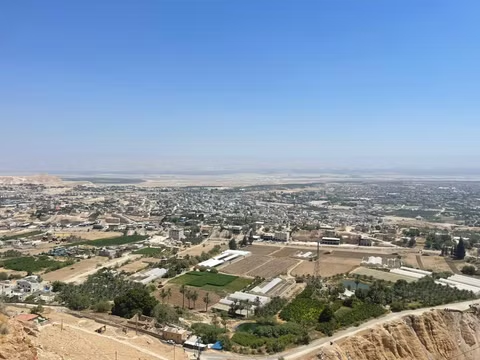
Jericho Tour - All in one day
Discover jericho, an ancient city, it is the oldest city in the world according to the archaeologists and the lowest one, dates back to more than 9.000 years ago. it is a very special spot, along the way, you will read signs indicating that you are at sea level, and as you continue, you will reach a point that reveals the depth and elevation of our earth. you must embark on this journey of a lifetime to explore the religious, historical, and archeological sites, as well as the dead sea..
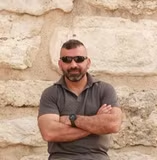
Hebron Day-Tour
Have the chance to get a taste of the old city of hebron as you walk around the city's markets, visit the historical and religious sites, have lunch with the locals, and experience life in the city. you'll be inspired by the wide variety of tourist attractions..
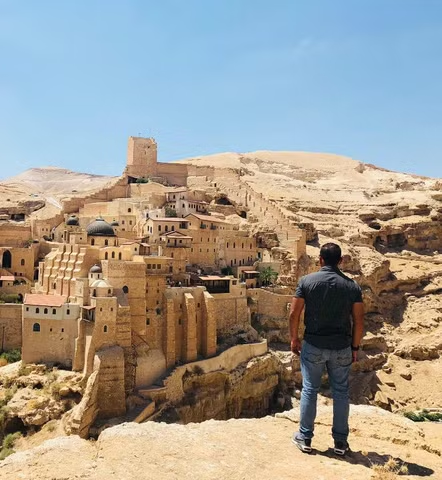
Full Day Bethlehem Highlights
Explore a mix of ancient and contemporary history during this full-day journey to bethlehem . visit religious sights important to the history of christianity, including the church of the nativity, milk grotto church, explore the beautiful old city of bethlehem, sample the local cuisine, see banksy’s political art, including the walled-off hotel..
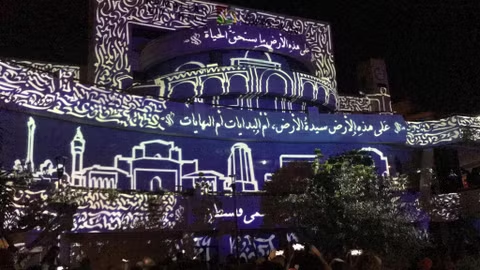
Best of Ramallah a Full-Day Tour
Enjoy the fascinating journey to ramallah, the primary hub of commercial and political activity in the territories, walk the streets, and see the life and numerous interesting sights of this modern and big city on the west bank. the tour will head to manara square, the prosperous commercial district, visit yasser arafat's tomb and museum, and tour rawabi city which is the first planned city built for and by palestinians in the west bank. we will fill in your day nicely., the best tours and activities.
With a real local of your choice
The option to personalize your tour
Just contact your favorite local
Only private tours!
So no group tours with strangers
Related Palestine Tour Guide Pages
Private tours in palestine.
History | July 2019
Two Tour Guides—One Israeli, One Palestinian—Offer a New Way to See the Holy Land
With conflict raging again in Israel, a fearless initiative reveals a complex reality that few visitors ever experience
:focal(2161x919:2162x920)/https://tf-cmsv2-smithsonianmag-media.s3.amazonaws.com/filer/21/ee/21ee120b-041a-4604-8a0c-06b06664d5a6/julaug2019_j01_dualnarratives.jpg)
Geraldine Brooks; Photographs by David Degner
In the fierce morning light of Caesarea, we hike down the beach, following the line of a ruined aqueduct that dates from the era of Herod the Great. The golden sand is littered with tiny russet tiles. Peering up into the dunes, we shade our eyes as our guide points out their source—the crumbling floor of what’s believed to have been a diplomat’s home when this Mediterranean port was an administrative center for the Roman occupation of Judea, some 2,000 years ago. Farther on, we see evidence of the Muslim conquest of the city 600 years later, ushering in Arab rule that lasted until the Crusades. Later, in 1884, Bosnian fishermen settled this shore, and the minaret of their mosque now punctuates a lively tourist precinct beside the leafy and affluent Israeli town where the Israeli prime minister, Benjamin Netanyahu, makes his home.
It’s our first morning in Israel, and already we’ve covered thousands of years of overlapping cultures, a perfect introduction to this tiny notch of land, so long inhabited, so often fought over and brimming with stories that have shaped the world. The group I’m with, mostly members of a Lutheran church in Lake Forest, Illinois, outside Chicago, is part of a tourist boom that last year brought four million visitors to this nation of fewer than nine million people. At many stops, we are surrounded by a babel of languages, representing visitors from every corner of the world, all drawn to this land and its stirring history. But our experience differs from that of most visitors. Instead of one guide, we have two—an Israeli and a Palestinian—and each gives a dramatically different perspective on everything we see. During the next week, we will travel from places of worship to archaeological sites and into private homes, crossing and recrossing Israeli military checkpoints and the approximately 285-mile separation barrier that divides much of this society.
Our Israeli guide is Oded Mandel, 38, the son of Romanian Jews, whose father survived the Holocaust as a child. Oded’s parents immigrated to Israel in the 1970s, after the Jewish state reportedly made cash payments to the oppressive regime of Nicolae Ceausescu in exchange for exit visas. Oded serves as a reserve officer in the Israel Defense Forces. Bearded and bespectacled, he describes himself as “proud in my military service, in being Jewish, proud in my parents and what they did to come here.”
Aziz Abu Sarah, also 38, a Palestinian Muslim, lives under occupation in his birthplace, East Jerusalem. He was 9 years old during the first Palestinian Intifada, when Israeli soldiers burst into his bedroom one night to arrest his older brother, Tayseer, who was accused of throwing stones. Tayseer went to prison and, after his release nine months later, died from injuries he sustained there.
I first visited Israel and the occupied Palestinian territories during that uprising, in the winter of 1987. I was a young correspondent for the Wall Street Journal , dodging stones and rubber bullets to interview boys like Tayseer as well as reservists like Oded. I empathized with the Palestinians, many still children, risking their lives to protest poverty and daily indignity. But I also felt the crushing anxiety of Israelis, especially Holocaust survivors and terror victims, and I sympathized with soldiers, many of whom despised their new duties skirmishing with civilians. I also grew frustrated, in the safe comfort of European and American cities, with the smug certainties of friends who could feel sympathy for only one side. Either all Israelis were brutalizing oppressors or all Palestinians were bloodthirsty terrorists. I wished my acquaintances could spend even a week doing what I did, listening to stories from both sides that were often equally harrowing.
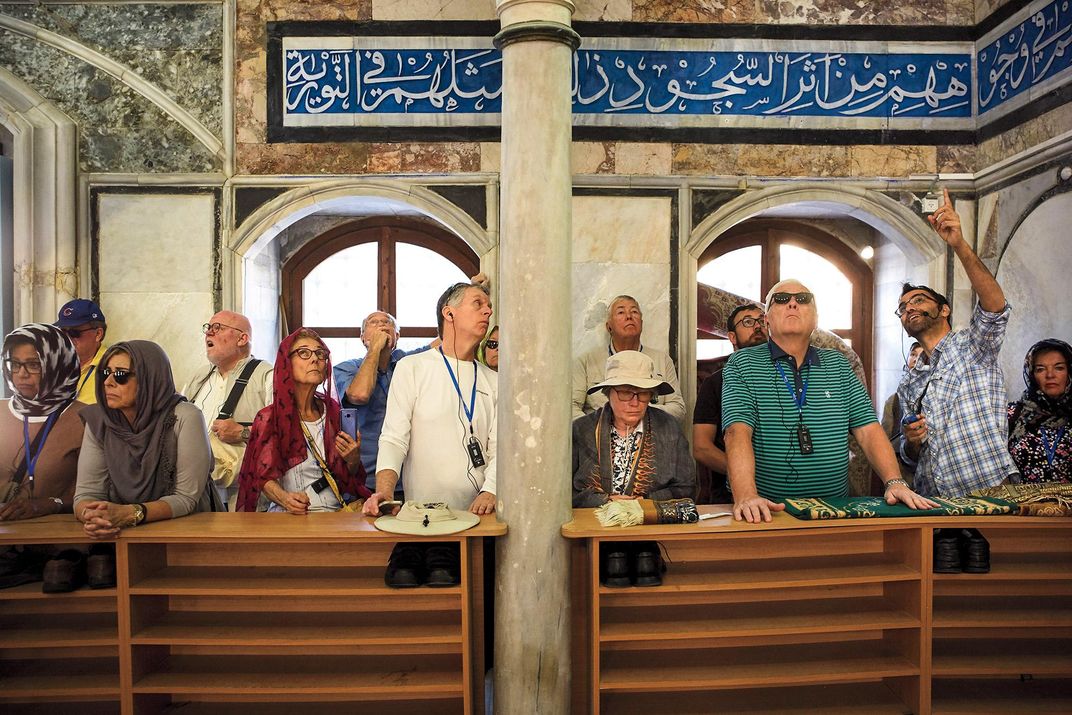
Aziz Abu Sarah created Mejdi Tours to offer just such an experience. He was well aware that most visitors receive just one view: Jewish tourists and many Christian groups focus heavily on Jewish history and rarely visit the West Bank or interact with Palestinians. Palestinian tours, by contrast, focus on difficulties of life under occupation and the Christian pilgrimage sites in Palestinian towns such as Bethlehem, while millennia of Jewish history is ignored.
Aziz, like an archaeologist at one of the country’s celebrated tels , or archaeological mounds, had the idea to present visitors with the multiple narratives of the people who share this land, digging down layer by layer and story by story, undaunted by complexity—indeed, reveling in it.
Arriving in Nazareth feels like crossing an invisible border into an Arab country. Minarets stud the skyline, mixing with church spires. Clutching falafel sandwiches, we wander past neon signs in Arabic and women wearing colorfully embroidered Palestinian dresses. In the market, spice sacks gape open, revealing bright saffron and paprika. Cardamom and coffee scent the air.
The Chicagoans I’m with are a well-traveled group, mostly professionals, but only a few have been to Israel before. They lob questions at our guides. Though Aziz’s and Oded’s perspectives are not aligned, they share an easy, bantering relationship. Aziz, wearing a pearl-buttoned Western-style shirt that signals his love of country music, is naturally ebullient, with the affect of a stand-up comic. Oded, affable and measured, says he likes the Mejdi Tours approach “as a way to challenge what I am thinking.” Frequently, each offers the same caveat before answering a question: “It’s complicated.”
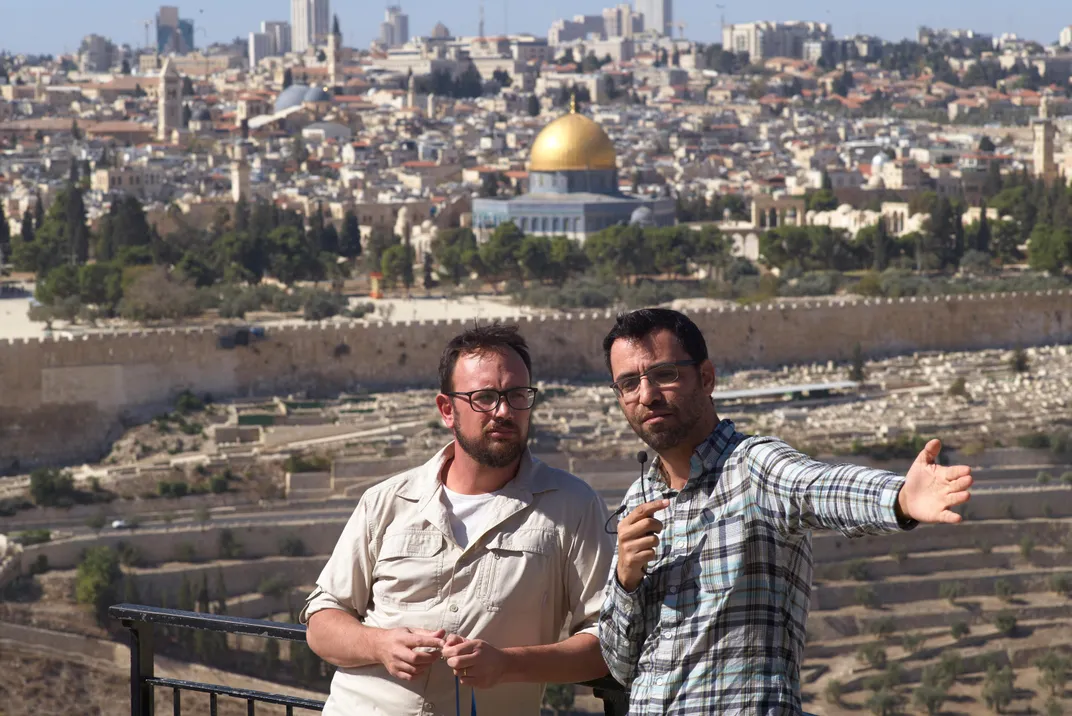
Now some in our group are struggling to understand the legal status of the people in Nazareth, which is one of the largest Palestinian communities within Israel. Arab Israelis, or Palestinian citizens of Israel, as most prefer to be called, make up 21 percent of Israel’s population. They carry Israeli passports, can vote in national elections and send Palestinian members to the Knesset, or Parliament. Why, one traveler asks, did some Arabs stay inside the new State of Israel while so many others fled during the Arab-Israeli War of 1948?
Oded gives the Israeli narrative, explaining how European Jews, fleeing pogroms and discrimination, began to return to their ancient homeland in the 19th century, when it was under Ottoman and later British rule. Occasional acts of violence between Arabs and Jews turned to outright conflict when Jewish migration accelerated during and after the Second World War, as displaced refugees and survivors had few other places to go. In 1947, as the British mandate was ending, the United Nations voted to partition the land into separate homelands for Jews and Arabs. “The Jewish side said, ‘Yes, we need a state right now.’ We tried to live here in peace, we acknowledged partition,” Oded says. “But the Arabs said ‘No,’ and in 1948 we had to fight five different Arab armies” during what Israelis call the War of Independence.
When Aziz takes up the narrative, he uses the Palestinian term for the 1948 war: al-Nakba , the Catastrophe. He describes the killing of Palestinian civilians by Jewish paramilitaries. “People were terrified,” he says. Arabic radio broadcasts fanned the panic, warning of massacre and rape. In fear for their lives, huge numbers fled to the West Bank and Gaza Strip as well as to Lebanon, Jordan and Syria. “They thought the fighting would end in a few days, and they would come back to their homes. They were not allowed to, and those who fled—at least 700,000 people—became refugees.”
Oded interjects that more than 800,000 Jews were themselves forced to flee Arab countries such as Egypt, Syria, Iraq and Yemen following violent reactions to Israel’s founding.
“I don’t accept that parallel,” counters Aziz. “What Egypt did is not the Palestinians’ responsibility.”
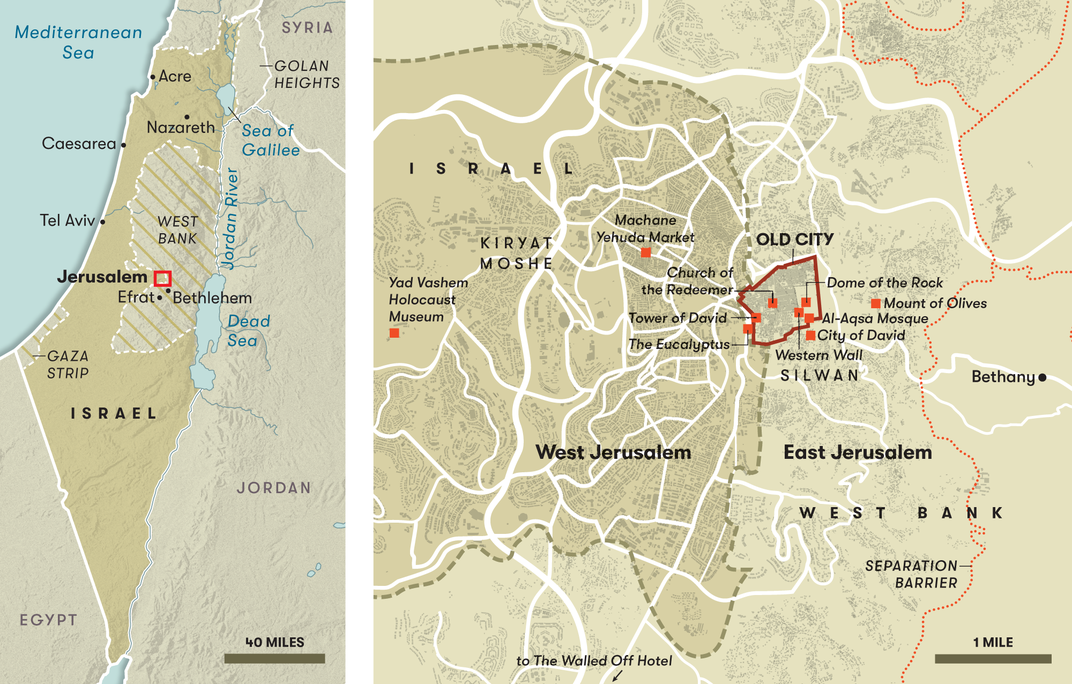
The discussion is interrupted when our bus rounds a curve on an olive-studded hillside and a shimmering sheet of water comes into view. “ That’s the Sea of Galilee?” exclaims one incredulous Midwesterner. “It looks like a little lake in Wisconsin!” This issue of scale will come up again and again—the trickle of water that is the “mighty” Jordan River, even the size of the disputed land itself, which is slightly smaller than New Jersey. It is vividly on display in the Golan Heights, in Israel’s far north, where barbed wire surrounds an army post that looks into Syria. A sign indicates that Damascus lies just 60 kilometers, or 37 miles, away.
For a long time after the death of his brother, Aziz would not have listened to an Israeli perspective like Oded’s. A self-described radical bent on revenge, Aziz refused to learn Hebrew because it was the “language of the enemy.” But, after graduating from high school, he couldn’t get a decent job, so he joined a class at a language center designed for recent Jewish immigrants. For the first time, he met an Israeli who wasn’t a soldier. His teacher was sensitive and welcoming. “Since I didn’t know enough Hebrew to argue with her, we had to become friends first,” he tells me.
That experience kindled a new curiosity. Aziz went to work for a Jewish ceramics company in the ultra-Orthodox Jerusalem neighborhood of Mea She’arim (“My employers were very good to me”), and attended an Evangelical Christian Bible college in Jerusalem. (“I didn’t want to know what Muslims think Christians believe. I wanted to understand from Christians what they believe.”) Aziz then joined a support group for those who had lost a family member in the conflict; members shared their stories and discussed reconciliation.
In front of often-hostile audiences, he retold the story of Tayseer’s death alongside an Israeli with his or her own tragic tale of violence and bereavement. He saw that such stories had immense power to change people’s thinking, and he expanded on that experience by creating a radio program, in Hebrew and Arabic, in which Israeli and Palestinian guests would each speak about a dramatic change in their life or attitude. Eventually, Aziz’s activism brought him to the attention of Scott Cooper, then a director of George Mason University’s Center for World Religions, Diplomacy and Conflict Resolution in Fairfax, Virginia, where Aziz was recruited to create programs in interfaith outreach, peace-building, negotiation and government reform, which he then led in person in Afghanistan and Syria and in online courses for Iranians.
In 2009, Aziz and Cooper created Mejdi Tours, adhering to strict principles of social and environmental responsibility. The company has spent more than $900,000 in the communities it visits, and its tours and tourists have spent $14 million at local businesses. Groups are almost never booked in chain hotels and are encouraged to shop at small stores or fair-trade co-ops. The company offers similar multinarrative tours in Northern Ireland, Bosnia and Herzegovina, Iraqi Kurdistan and other places that have experienced conflict.
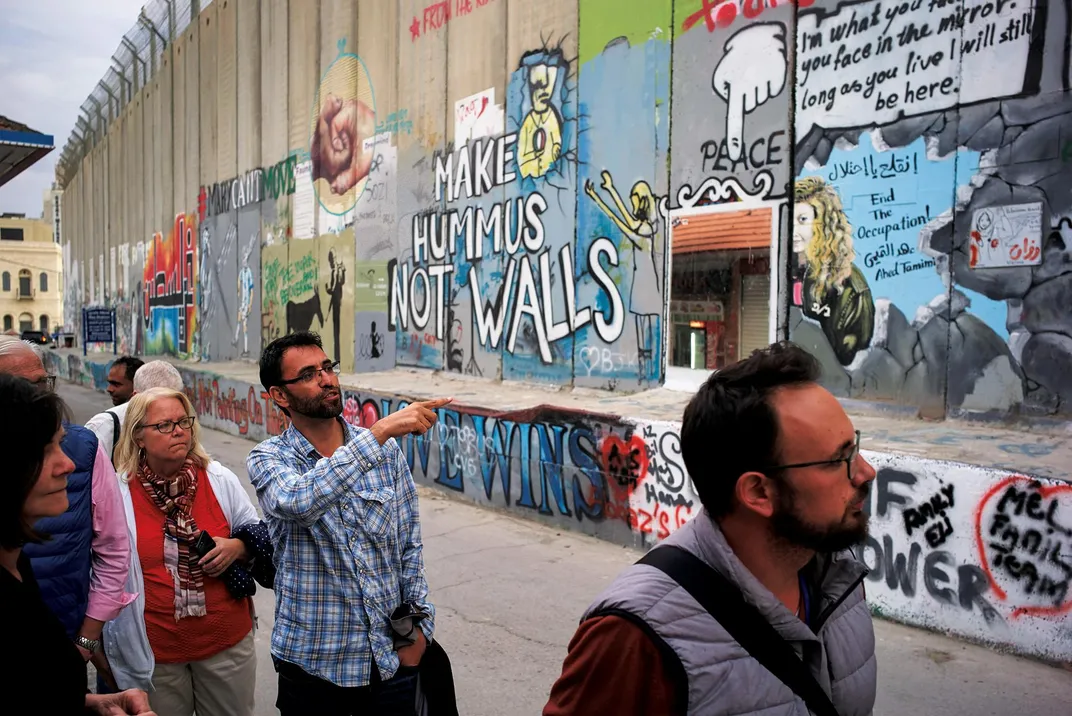
“In a place like Barcelona, people can’t stand tourists, because they don’t connect with the locals,” Aziz says. “We’re all about making connections.” He quotes the 14th-century Moroccan traveler Ibn Battuta: “Travel makes you speechless, then it turns you into a storyteller.”
On Friday morning, as we prepare to explore the ancient port city of Acre, a mixed Jewish-Arab city on the northwest coast, Aziz mentions the widespread view that the city has the country’s best hummus. “Personally, I don’t agree with that,” he adds.
“Me neither,” says Oded.
“Finally, we have one narrative here,” Aziz quips.
We visit the green-domed Al-Jazzar Mosque just as worshipers are arriving for Friday midday prayers, the week’s most important communal observance. Most of the travelers have never set foot in a mosque. They gaze at the intricate tilework adorned with calligraphic inscriptions from the Quran. Since Islam regulates every aspect of a believer’s life, Aziz explains, the imam’s sermon may extend beyond the spiritual, touching on some matter of daily existence—diet, say, or finance. Or the sermon might be intensely political, which is one reason demonstrations often erupt on Fridays after prayers.
Later, on the road to Jerusalem, Oded remarks that Friday is special for Jews as well, as sunset marks the beginning of Shabbat , the Sabbath. “You’ll see that the traffic is going to get lighter. Religious people will be walking to synagogue.” Soon we are walking ourselves, having left the bus behind at the entrance to Kiryat Moshe, an Orthodox Jewish neighborhood where driving is discouraged between sundown Friday and sundown Saturday.
At the apartment of Rabbi Joshua Weisberg, we squeeze around a table, humming along as his family sings a traditional song to greet the Sabbath. “And now,” says the rabbi, “I’m going to bless my children. It’s going to take a while.” There are eight children, ranging in age from 3 to 20. The eldest, a daughter, is away, studying at a religious seminary, but one by one the others come to the head of the table, snuggling against their father as he embraces them and whispers the ancient Israelite blessing: “May God shine his face upon you and show you favor....”
Over dumpling soup and platters of chicken, Rabbi Weisberg tells us that the same blessing was found etched onto a 2,800-year-old silver amulet excavated at an archaeological site only a few miles from the apartment. “A parent in Isaiah’s Jerusalem probably put that amulet on his child, expressing the same hopes and concerns, in the same Hebrew I prayed tonight,” he says. “That’s one of the reasons it’s important for me to be here—to feel that continuity of Jewish life in this place.”
When the rabbi’s two eldest daughters finished high school, they chose to do two years of national service, working with disadvantaged and disabled kids, which is an alternative to military service open to religious youth. But the third daughter plans to join the army, a controversial choice among Orthodox girls. “Israel defends me,” she told her father. “I won’t serve?” To the rabbi, that independence of mind is welcome. “I want my children to be Jewish, and to have a connection with God—I’d be devastated if they didn’t have that. But for the rest, they will decide.”
On the way back to our hotel, Aziz, who had not met Rabbi Weisberg before, is enthusiastic about his humor and openness. “I told him I’d like him to be involved with more of our groups. He said, ‘Are you sure you want me? I’m a right-wing guy.’ I told him, ‘That’s why I want you—I know plenty of leftists already.’”
The West Bank settlement of Efrat, about an hour south of Jerusalem, consists of red-roofed residences slung across seven hilltops, and is surrounded by long-settled Palestinian villages. Efrat is populated mainly by traditional religious Zionists, many of whom believe they have a national and spiritual imperative to settle the biblical lands of Judea and Samaria. But lots of residents, says Shmil Atlas, who directs development in the settlement, move there for other reasons, too. He cites the settlement’s proximity to Jerusalem, good schools, a well-educated professional community, as well as cost: a three-bedroom house, for example, can be bought for about the same price as a one-bedroom apartment in Jerusalem.
Efrat is now home to about 12,000 Israelis, and the community plans to grow by 60 percent over the next few years. Part of the settlement is in lockdown this morning, because of suspected infiltrators detected by electronic sensors. When we arrive, security personnel are searching house to house. Palestinians who usually work here have been banned from entering. (No infiltrators were found.)
Despite the heightened tension, Atlas paints a sunny picture for us of the settlement’s relationship to its Palestinian neighbors. Nearby villagers, Atlas says, are glad of the work the settlement offers—around a thousand jobs, mostly in construction, maintenance and agriculture. Since most of the Israeli residents commute to work in Jerusalem, he jokes that by day the mayor of Efrat is “the mayor of a Palestinian city.” One woman in our group is clearly taken with Efrat—the crisp, luminous air of its hilltop setting, the charming villas splashed with bougainvillea.
But the cost to Palestinians of ongoing settlement expansion is on stark display less than ten miles north, where the town of Bethlehem is being slowly choked by military checkpoints and is unable to grow because of the looming separation barrier. “The whole town is essentially walled in,” the Rev. Dr. Mitri Raheb, president of Dar al-Kalima University College of Arts & Culture, tells the group. When Raheb’s mother was hospitalized for cancer treatment in East Jerusalem, he was able to get a permit from Israel to visit her; his mother’s sisters were denied. When his father-in-law was suffering a heart attack, a border guard required him to exit the ambulance and walk through the checkpoint. He died a few days later.
“We have no room to grow,” Raheb laments. “It is destroying the character of the little town, and its economy.” A quarter of Bethlehem’s work force is unemployed, and the need to use every inch of land means little green space. “Our kids don’t know what spring looks or smells like,” he says. But Raheb, a Palestinian Christian, paraphrases a comment attributed to Martin Luther, on the essential need to retain hope: “If the world is ending tomorrow, go out and plant an olive tree.” He fulfills that ideal by leading the sole Palestinian university dedicated to arts and culture. “We are educating the next generation of creative leaders in Palestine,” he says proudly.
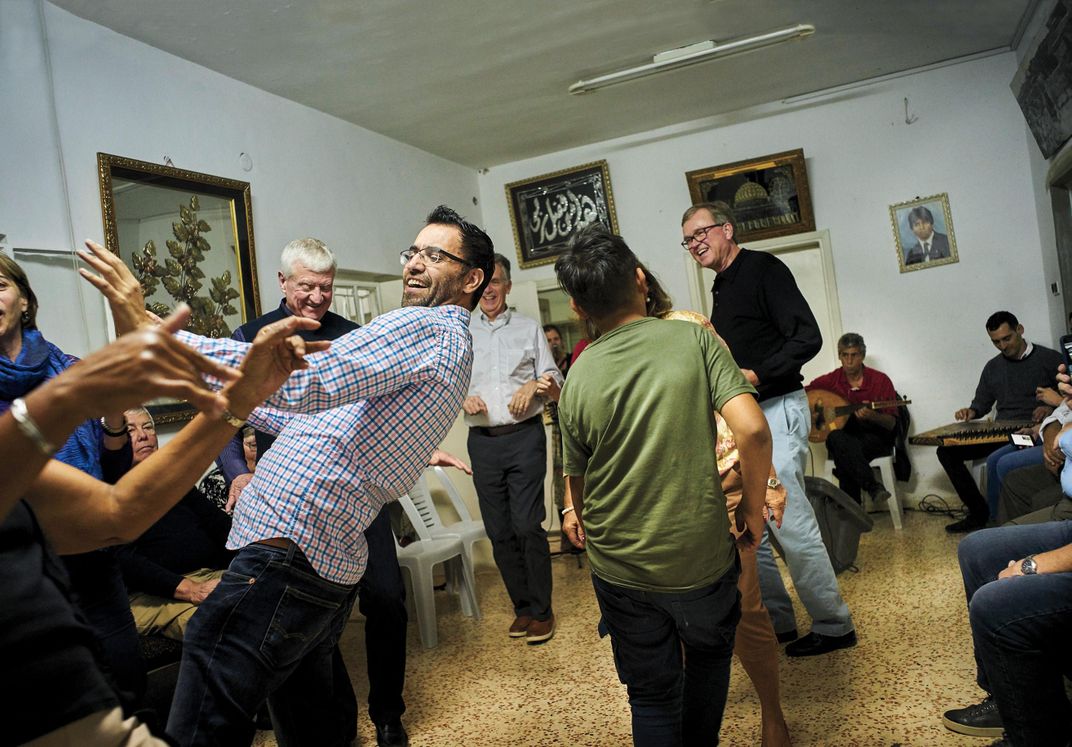
Snarled in traffic at a checkpoint, the traveler who had earlier been drawn to Efrat now works through her feelings. “I thought, I’d like to live there: It’s intellectual, it’s a mix of young and old, it’s a really pretty community. But then in Bethlehem you see how suffocated they are. It’s like a ghetto.”
To Aziz, this is how a Mejdi trip is supposed to work. “Most people who come here will hear only one of these two narratives,” he says. “If they come here already very pro-Palestinian, I’ll say, let me push you a bit harder to see the other side. Same thing if they’re very pro-Israel. Being able to see the other side doesn’t mean you have to agree with it.”
One morning, we find ourselves on the Mount of Olives—picking olives. It’s a volunteer effort for the beleaguered Augusta Victoria Hospital, a Lutheran institution that cares for about 700 patients a day from Gaza, the West Bank and East Jerusalem, specializing in oncology and nephrology. The gray-green olive groves cover the hillside, and the Chicagoans climb into tree branches to harvest ripe fruit onto waiting tarps. Oil from these 800 trees will be sold to raise funds for the hospital, which has been under severe financial pressure, especially since the Trump administration halted aid to the Palestinians. Previously, such aid covered almost a quarter of the hospital’s bills, explains Pauliina Parhiala of the Lutheran World Federation. “There are USAID stickers on a lot of the equipment.”
Money isn’t the only challenge. Palestinian hospital staff who live in the West Bank are sometimes delayed at checkpoints. Not quite two-thirds of the Gazans who apply to come to the hospital receive permission to enter Israel, and sometimes the parents of children who need dialysis or chemotherapy are denied entry on security grounds. Still, Parhiala says, medicine is a bright spot of Palestinian and Israeli cooperation. Palestinian doctors receive overwhelming support from Israeli colleagues, training together and working side by side. “Even in the most difficult times, this has continued, and that’s a ray of hope for me,” Parhiala says.
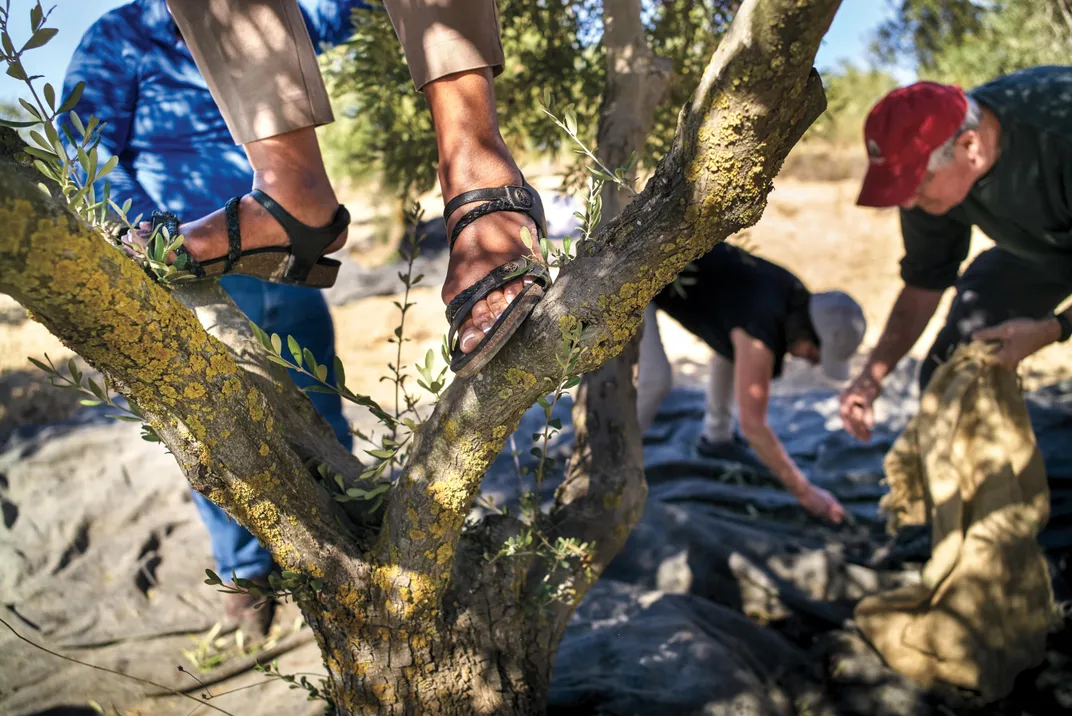
Later, as Oded and Aziz lead the group through the narrow alleyways of Jerusalem’s Old City, Aziz unfolds his story as a Jerusalemite. Although born here, he is merely a permanent resident, not a citizen. After the Six-Day War in 1967, when Israel captured the
West Bank and Gaza Strip, it annexed East Jerusalem and 28 surrounding Palestinian villages, home to some 70,000 Palestinians, including Aziz’s family. Those Palestinians were not granted citizenship, and though they are eligible to apply for it, the process is difficult. Even Aziz’s tenuous residency status can be revoked if the government determines he is not “centering his life” in the city. That’s a risk for someone who runs an international travel company, has lived in the United States, and works on conflict resolution around the globe.
Last September, Aziz announced that he would run for mayor of Jerusalem, intending to take a case to court to test the right of a noncitizen to do so. But he was assailed from both sides before he could even file suit. He learned that his Israeli-issued residency permit was suddenly under review. Activists linked to the Palestinian Authority threw eggs at him and threatened his life for breaking with a long-standing election boycott and “legitimizing” the Israeli occupation. (Only about 2 percent of Palestinians who are eligible to vote in Jerusalem’s municipal elections actually do so.) Aziz eventually withdrew, but he still thinks his strategy was the right one. “Our leaders aren’t pragmatic,” he laments. “Instead of opening a discussion, they resort to violence and threats.”
One evening, our group visits Aziz’s family home, in the village of Bethany, just beyond the area annexed by Israel. Aziz’s father built the large house himself, and planted trees and gardens, only to learn that living in the house would disqualify the family as residents of Jerusalem. The family faced a choice between staying in the home and losing the right to travel freely to and from the city of their birth, or moving into a cramped apartment within the city lines. They chose the apartment, to protect their status. Today they may only visit the home in Bethany, never sleep there.
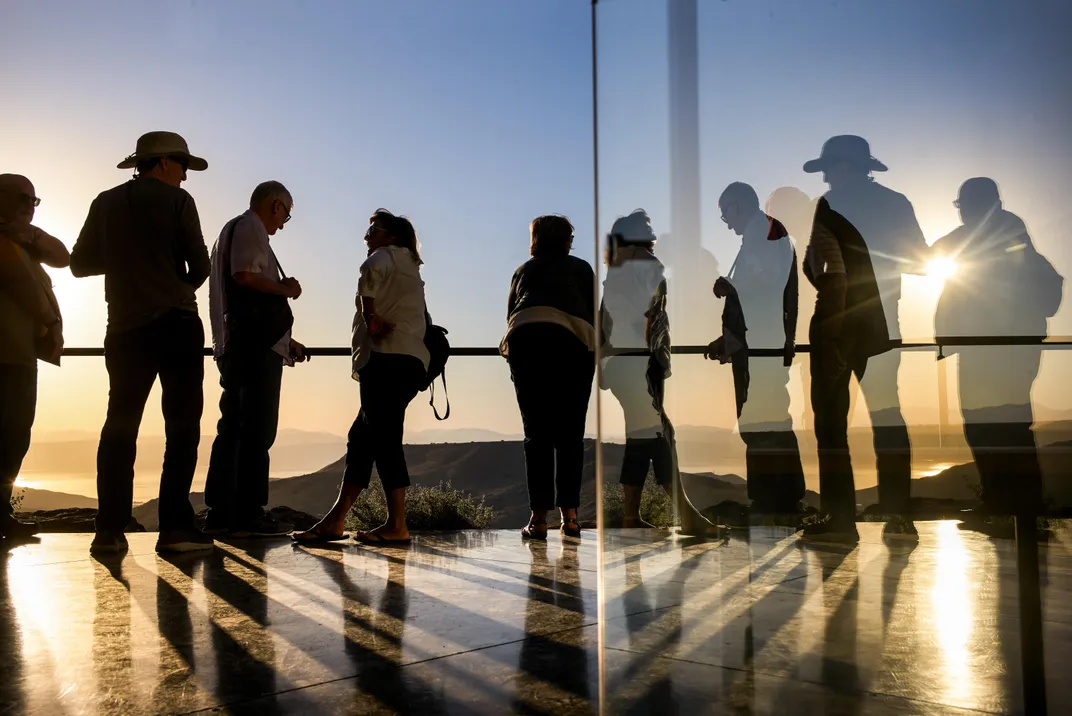
On the wall of the house’s main salon is a photograph of Aziz’s brother, Tayseer. When 19-year-old Tayseer was released from prison, in 1991, he was vomiting blood. His family rushed him to the hospital, but it was too late. Aziz reflects that it was hard to abandon a desire for revenge, but demonizing and dehumanizing the enemy, he says, only serve to fuel the conflict. He realized he had a choice to defy that impulse.
From the kitchen, Aziz’s mother, aunts and sister-in-law emerge with huge pots of maqluba , “upside down” in Arabic. With great flourish, they invert the pots and present perfectly layered towers of rice, chicken and vegetables. A band whose members are Israeli and Palestinian performs songs reflecting both traditions. Aziz and his nephews teach us some Arabic dance moves while his parents, clad in traditional Palestinian robes, look on in amusement.
On Sunday morning, we make our way through the teeming alleys of the Old City, where merchants pushing handcarts cry out for right of way through processions of Franciscan monks in rope-belted robes and hordes of tourists. Hidden behind a high wall, we find the 19th-century Church of the Redeemer. Its cool, geranium-decked courtyard is an unexpected oasis from the bustle of the ancient city.
After a church service, Oded brings us to the Western Wall, the last remnant of the Second Temple, which was destroyed by the Romans in A.D. 70. Known as the Kotel, it is the most sacred space in Judaism. As the midday sun beats down on the ancient stones, Oded holds up a copy of a famous photograph. It shows young Israeli soldiers in the Six-Day War who were the first to fight their way through Jordanian troops and minefields, uniting the city under Jewish control. The soldiers’ faces are battle-weary, but their expression as they gaze up at the wall is filled with awe. “Two thousand years of yearning in this photograph,” says Oded.
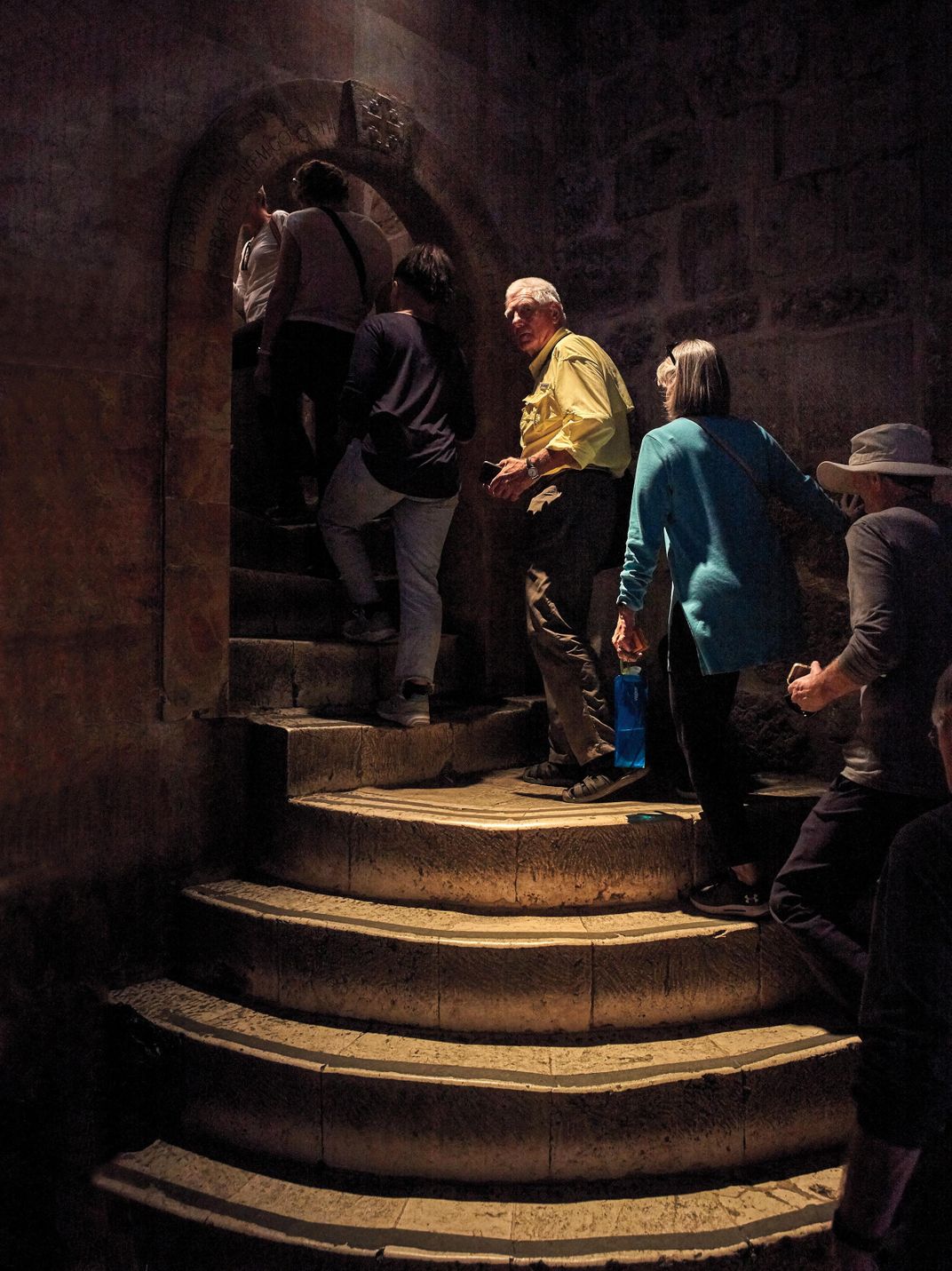
Oded outlines the evolution of Israel’s military vision, from the euphoric invincibility born of that swift victory in 1967—when Israel pushed the Syrian Army back from the strategic Golan Heights, drove the Egyptians out of the Sinai Peninsula and Gaza and the Jordanians out of the West Bank and East Jerusalem—to the beginning of the military occupation there that continues more than 50 years later. Then he explains the attempted reversal in 1973, when Egypt and Syria launched a surprise attack on Yom Kippur, the holy day when Jews fast and pray. It took hours to contact key reservists and several days to mobilize the unready forces. “We thought we were on the verge of the third temple destruction,” says Oded, meaning that it seemed possible the Jewish state could be wiped out, as it was in ancient times.
That afternoon is spent at Yad Vashem, Israel’s Holocaust memorial and museum. I wander outside, to the Garden of the Righteous Among the Nations, in search of a plaque honoring Dervis and Servet Korkut, Muslims who sheltered a Jewish girl during the Nazi occupation of Sarajevo. Dervis Korkut, an Islamic scholar and the national museum’s chief librarian, also saved a masterpiece of medieval Judaica, a rare illuminated codex known as the Sarajevo Haggadah.
In 2008, I wrote a novel, People of the Book , based on the journey of that haggadah, imagining the stories of those who carried it to safety over hundreds of years. The haggadah was created in Spain before the Inquisition, at the time of La Convivencia , or The Coexistence, when Muslims, Christians and Jews lived peacefully together until violent Catholic bigotry forced Muslims and Jews into exile. The haggadah was saved from Catholic book burning by a priest in Venice in 1609, and, by the 19th century, had made its way to Sarajevo, where in early 1942 Korkut saved the book from Nazi looters, hiding it among Qurans in a mosque. Fifty years later, Sarajevo’s own celebrated convivencia was ripped apart by ethnic cleansing during the Bosnian War. This time, another Muslim librarian rescued the haggadah as the museum was being shelled. For many, the book has come to symbolize how an ideal of multiplicity—of religion, of ethnicity, of culture—can survive, if only enough people care.
Novelists live by imagining the unlikely, and walking in Yad Vashem’s sun-dappled, pine-fragrant shade, my mind drifts to an alternate narrative in which that Syrian border in the north isn’t filled with skeins of razor wire, and a person of any background or creed could hop in her car and drive those 37 miles for dinner in a peaceful Damascus. It’s the kind of reverie that feels irresistible when visiting this place.
Back in 1991, when I was still a foreign correspondent, I asked people across the region to play this mind game with me on the eve of the Madrid Peace Conference, the first time Israeli and Palestinian officials sat down publicly to speak about an accord. At first, everyone shrugged off my question: Peace was impossible, the hatred ran too deep.
But when I prodded, they began to unspool wondrous visions of a golden age of friendship and prosperity, a convivencia for a new era. A Palestinian shipping magnate exiled in Jordan dreamed of plunging into the surf at Caesarea, as he used to as a child. A Syrian man longed to visit the place his parents had honeymooned on the West Bank. An Israeli cartoonist told me he just wanted to “sit and schmooze over coffee, like normal neighbors.”
It was bittersweet to recall those conversations, yet it seemed apt to reflect on such possibilities at Yad Vashem. Israel and Germany had become staunch allies less than half a century after the Second World War. Who had a right to say peace was unthinkable?
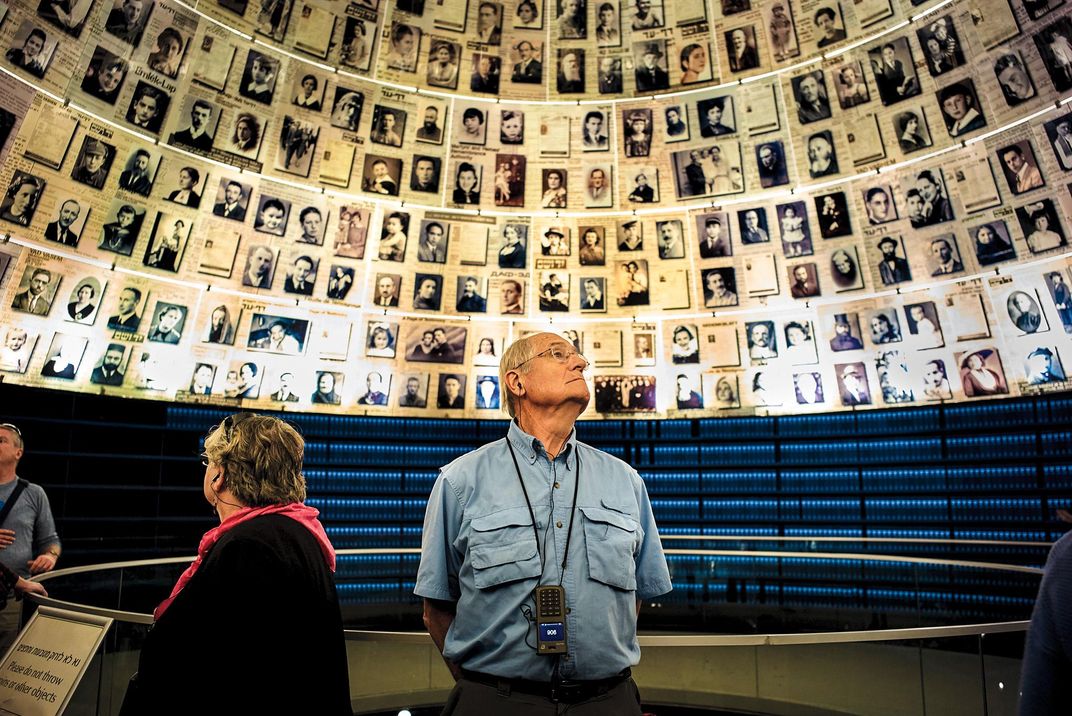
When I rejoin our group, they are meeting with Berthe Badehi, a Holocaust survivor who spent her childhood hiding from Nazis among French farmers. After the war, she immigrated to Israel, and she recalls her astonishment the first time she went to the bustling food market of Jerusalem’s Machane Yehuda. “There were Jews everywhere,” she says. “I had been in hiding all my life. Finally, here was a place to be myself.”
But there was a high price. In 2002, her oldest grandson was killed at 22, when he was part of an army unit attempting to free Israeli soldiers trapped inside Palestinian leader Yasser Arafat’s besieged compound headquarters during the Second Intifada. She shows us a picture of the young man, and Oded gasps. He recognizes him. He embraces Berthe, and tells her that he lives in the same community as another of her grandsons, where every year they commemorate her elder grandson’s death. It is another reminder of the intimacy and interconnectedness of this society.
The next morning, we visit the “City of David,” an extensive and glossily presented archaeological dig just outside the southern wall of the Old City. Excavations have uncovered the ruins of a large palace possibly built during the Davidic era (c. 1000 B.C.), as well as the probable source of the ancient city’s water supply. I had been here before, researching The Secret Chord , a novel I wrote about the life of King David. Then, as now, the excavations fueled my imagination, conjuring the city as it is described in the Bible, rising up out of the crumbled stones, peopled with musicians and artisans.
Our guide to the site, a British immigrant to Israel, is a practiced presenter who radiates enthusiasm as he describes a recent discovery: a processional way closely matching details from the story of young Solomon, mounted on his father’s mule, anointed king by Tzadok the priest and Nathan the prophet—a ceremony still enacted at every British royal coronation.
For a person like me, who excavates the past for fiction, it’s easy to get swept up by all of this. But I am shaken from my daydream when we tour Silwan, the predominantly Palestinian village that sits atop the excavations. Our guide here is neither practiced nor fluent in English, just an old man in a dingy robe who fears for his neighborhood. Many of the humble dwellings here are cracking, undermined by the excavations, and others have been occupied by Jewish settlers. There is palpable tension, as Palestinians sidle warily past armed Israeli guards to reach their homes, while Israeli school buses have mesh over the windows to protect against stones, Molotov cocktails, or worse. If this was, indeed, the site of David’s city, I imagine he would despair to find it in such a state.
Our final stop is a close-up look at the separation barrier, which, when it is completed, is designed to carve the landscape for 440 miles. The first sections were built in 2003, at the height of the Second Intifada, when, Israel says, it was necessary to prevent suicide bombings, which have practically ceased since. But for Palestinians, the wall has meant further loss of land; in some places, families have been separated, and many farmers have lost access to their own fields.
In 2017, the British artist Banksy opened the Walled Off Hotel, not far from Bethlehem. Billed as the hotel with “the worst view in the world,” it is hard up against a soaring concrete section of the Palestinian side of the barrier, which has become a canvas for portraits of Palestinian resistance figures and for sarcastic graffiti: “In my previous life I was the Berlin Wall. The beer was better there.” “Make hummus not walls.” The hotel is part political statement, part immersive artwork, with edgy décor like the bullet-strafed water tank that fills the hot tub in the presidential suite. A sardonic multimedia account of the conflict, delivered in a plummy British-colonial accent, concludes with the line: “If you are not completely baffled, then you don’t understand.”
Visitors nod in agreement.
We share a farewell dinner at the Eucalyptus, a kosher restaurant in Jerusalem, where the Israeli chef, Moshe Basson, explains how he uses indigenous ingredients, including many frequently mentioned in the Bible—hyssop, dates, pomegranate, almonds.
Over an array of fragrant dishes, the guests share the lessons of an intense week.
“Before I came, I didn’t know what I didn’t know,” observes Kim Morton.
“I came thinking I was going to hear two sides,” says Roger Bennett. “Now I’ve figured out there are many more than two sides.”
For Craig Linn, the most enlightening moment came in Yad Vashem. “The need for security is so great,” he says. “When Berthe says, ‘I just wanted a place where I could be myself.’” He pauses, recalling the emotion of the moment. “But then, the Palestinians feel that, too....”
Cathy Long, who is a generation older than our guides, takes a personal tone. “I’m leaving all of this feeling you two are my sons,” she says, her voice catching. “I just wish there was an answer, something we could do, so that your kids could be safer.”
Oded, who has two small children, is clearly moved. “I hope that next time you come, there will be something more positive to show you,” he says. “But you help by keeping an open heart, and by being curious about everything.”
Aziz concludes the meal by quoting the poem “Tourists,” by the celebrated Israeli poet Yehuda Amichai. The poem is shot through with bitterness about the way some tourists see his country, connecting more with its edifices than its people. In the last lines, a tour guide fixates on a Roman arch not far from the Tower of David, in the Old City.
Redemption will come
Only if their guide tells them,
“You see that arch from the Roman period?
It’s not important:
But next to it, left and down a bit,
There sits a man who’s bought fruit and vegetables for his family.”
The tower Amichai mentions is one of the most prominent features of the city’s ancient wall. When I was a young reporter covering the conflict, I would often sit in the evenings on a bench in the lovely old neighborhood across the valley, and gaze at the tower as the moon rose behind it, turning the stones pearly against a blushing sky. In those days, it provided a moment of solace after witnessing so much violence.
The morning after our final meal, as the group disperses to catch flights homeward, I visit the tower again. There is no weary man with his vegetables resting there today. In fact, as I climb the steps to the base of the tower, the area is unexpectedly deserted. For a few minutes, I’m alone.
When I was writing my novel about King David, I wanted to set a scene inside the tower that bears his name. But my research quickly revealed that the striking stone structure had nothing to do with him. King Hezekiah may have built the first tower on the site, long after David’s era. In time, that tower fell, and other structures rose in its place, as Jews, Romans, Byzantine Christians, Arabs, Crusaders and Ottoman Turks bled and died for control of these stones. The graceful edifice that stands today is actually a minaret—the remains of a mosque built in 1637.
And that makes it the perfect symbol of this land’s many-layered narratives, the inspired fictions we cling to and the painful truths we bury.
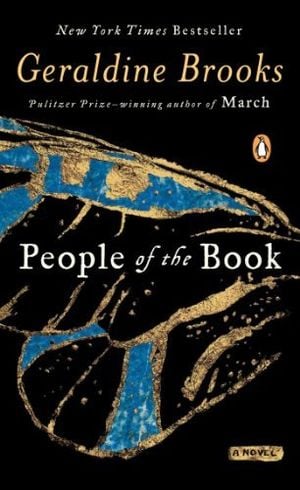
People of the Book
Inspired by a true story, People of the Book is a novel of sweeping historical grandeur and intimate emotional intensity by an acclaimed and beloved author.

The Secret Chord: A Novel
Peeling away the myth to bring David to life in Second Iron Age Israel, Brooks traces the arc of his journey from obscurity to fame, from shepherd to soldier, from hero to traitor, from beloved king to murderous despot and into his remorseful and diminished dotage.
Get the latest History stories in your inbox?
Click to visit our Privacy Statement .
A Note to our Readers Smithsonian magazine participates in affiliate link advertising programs. If you purchase an item through these links, we receive a commission.
Geraldine Brooks | READ MORE
Geraldine Brooks is the author of several books, including the Pulitzer Prize-winning novel March .
David Degner | READ MORE
David Degner is an editorial photographer based in Boston, Massachusetts.

Explore the world with tourHQ
- Destinations
- I am a Guide
- I am a Traveller
- Online Experiences
- Currency (USD)
Use tourHQ to get Palestine tour guides for Nablus, to ensure you can haggle in the soap markets and make the most of the ancient Roman and biblical relics nearby.
Search Cities in Palestine
Nablus Tour Guides
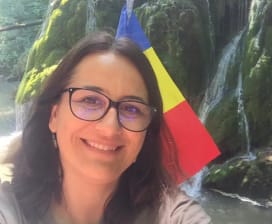
Alina Giurgiu
I am a qualified tourist guide and have been working in the travel industry for more than ...

I proudly hail from Bethlehem and am a licensed tour guide proficient in both English and Spanish, ...
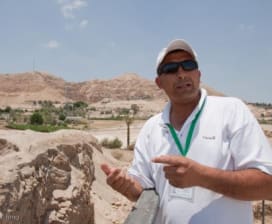
I, Hijazi Eid, am a Palestinian guide and travel consultant with a deep love for ...

Abood Cohen
At the age of 22, I find myself navigating the world of Marketing as a university student at ...
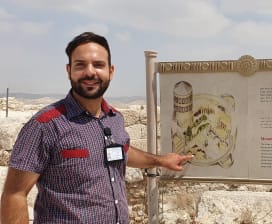
"English" My Name is Nizar Lama, I am an authorized Tour Guide for the Holy Land (Israel & ...

Wael G Hazeena
Greetings, fellow travelers! My name is Wael, and I extend a warm invitation to join me on a ...
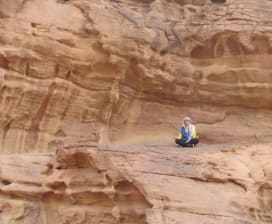
Shahd Hindi
Hello! I am a passionate and dedicated individual with a diverse background and a zest for life. ...

Tamer Halaseh
Greetings! I am Tamer Halaseh, a dedicated Palestinian civil society activist, projects ...
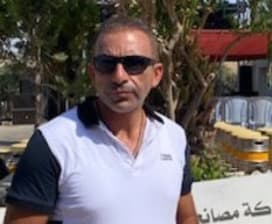
Matheos Alkassis
I'm Mathieus Al Qassis, a tour guide since 2007, born and raised in Beit Jala near Bethlehem in a ...
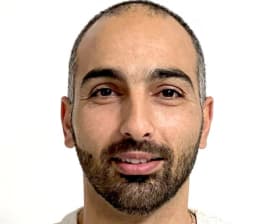
Michael Jackaman
Hey there, I'm Michael Jackaman, a Palestinian tour guide from Bethlehem with a specialization in ...
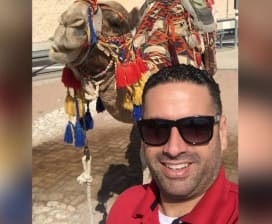
Jorge Khalilieh
Soy guia de turismo en Palestina y al rededores en donde vivo desde que ...
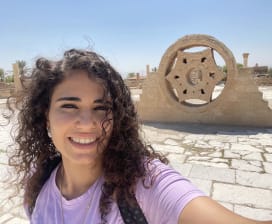
Georgette Loussi
Marhaba, everyone, my name is Georgette, and I'm happy to be your tour guide! I am a ...

Alaa Asfour
My name is Alaa Asfour .... I live in Hebron one of ancient city in the world ... most conflict ...
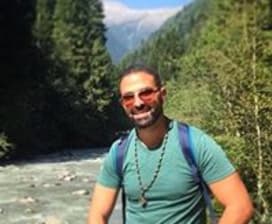
George A. Rabie
George is my real name , born and raised in the city of bethlehem .Been a tour guide since 2 years ...
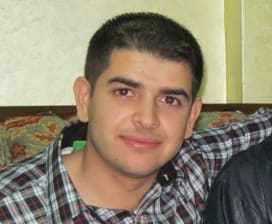
Mohammad Najim
Are you looking for a memorable experience in Palestine? Well, you have come to the right place. ...
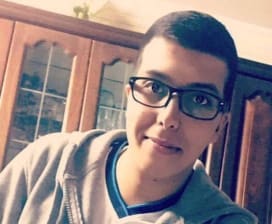
Ali AlOtaibi
I'm a Ali, a Civil Engineer currently residing in Nablus with my family. Additionally, I ...
Hunkered down between the rugged, rocky peaks of Mount Gerizim and Mount Ebal in the very heart of the Palestinian Territory on the West Bank, the city of Nablus has long been sought after for its enviable position. The Romans were the first to fortify it, while later everyone from the Ottomans to the Egyptians arrived, invariably seeking control of the Levant trade routes and the lucrative cotton mills, olive groves, fig plantations and soap factories that came to fuel the city's economy. Today, the outlines of Israeli military posts on the hills above town still belie the tactical importance of the place, while Nablus itself surges forward with its bustling stock exchange and university institutions. Visitors often love delving into the Old City area, where Nablus tour guides can help them navigate the narrow maze of stony streets, or haggle through the ancient souk in search of the finest-quality Nabulsi soap (a regional specialty). There are also numerous archaeological dig sites of biblical importance close by, from Samaria-Sebaste to 2,000-year-old Tell Balata.
Tell us your destination, date, and group size.
Our team of travel experts and guides will design a tailored itinerary just for you., enjoy your trip with peace of mind knowing everything is taken care of..
Say Goodbye to Travel Stress
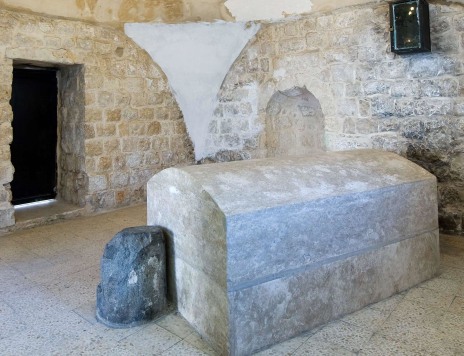
Choose Currency Close modal
- USD US, dollar
- GBP British Pounds
Cookie icon We use cookies!
We, and third parties, use cookies for technical and analytical purposes, for marketing purposes and for integration with social media. For more information, refer to our Privacy Policy and Terms of Consent.
By clicking on 'I agree', you consent to the use of these cookies.

IMAGES
COMMENTS
From the past to the present day allures, Palestine tour guides will endorse Hebron's souk to pick out well crafted souvenirs, culminating in scrumptious middle eastern fare of falafel and mansaf washed down by an excellent specimen of local beer from the Taybeh brewery. Tell us your destination, date, and group size.
You won't have to apply for a visa to visit Palestine, and your passport won't be stamped when you cross the border. All you need is the Israeli visa card. Visitors from European Union countries, United States, Canada, Australia, Japan and many more can get a visa on arrival valid for 90 days upon getting to Israel.
Bus nº485 costs 16ISL (7USD), departs every half an hour or so from the first floor and leaves you at the Central Station. Sherut (shared mini-vans) cost 68ISL (19USD), depart more often, are faster and leave you closer to your final destination. During Shabat, bus nº485 doesn't run. Yehuda market at closing time.
Ideal for group tours—religious, academic, non-profit, and more—MEJDI offers the very best of Palestine with completely customized itineraries that go beyond traditional tours by connecting travelers with the land, building lasting friendships with the warm and hospitable local people who live there. From modest accommodations to 5+ star ...
Palestine Revealed: 2-Day Private Tour from Jerusalem. 111. Historical Tours. 2 days. Journey through the Palestinian Territories and the Gush Etzion Settlement Block. ... Avi our tour guide speaks good English and he really made sure that the group stayed together. Read more. Review of: Jerusalem and Bethlehem Day Tour from Jerusalem. Written ...
Cultural and political tours to Israel & Palestine PALESTINE - ISRAEL - JORDAN - SINAI Off the beaten track tours • Visit sites • Meet locals • Discuss Human Rights & Politics
Palestine is one of the most interesting places not only in the Middle East but in the world. It has a very unique culture, history, friendly people and delicious food. So, it's not only about Biblical places. Based on my experience with and knowledge about Palestine, I've written this comprehensive guide for traveling in Palestine. So,
Palestinian Territories. Middle East. Split between the West Bank, with its sun-baked hills, chaotic cities and ancient biblical sites, and Gaza, a war-ravaged strip of coastal land sealed on three sides by Israel and Egypt, the Palestinian Territories has long been an unorthodox stop on a Middle East itinerary. 01 / Attractions.
Travel to Israel and the Palestinian Territories on an Intrepid tour - a pilgrimage to Jerusalem, Bethlehem, Masada, the Dead Sea, Tel Aviv and more. My Wishlist My Booking 1 800 970 7299 ... We had the most wonderful tour guide, Salah, who shared the history, religions and cultures of this incredible place in a way that was meaningful and ...
Explore Israel and Palestine through MEJDI's industry-first Dual Narrative Tour and see the Holy Land with the help of two local tour guides: one Israeli and one Palestinian. Visit: Tel Aviv and East Jerusalem; optional pre-trip extension in Northern Israel and post-trip extension in Jordan. Starting at $ 3,595 USD*.
This ultimate travel guide to Palestine (West Bank) is everything you need to know for an independent trip to the most interesting places in Palestine. Read our 11 days Palestine itinerary with detailed descriptions of transportation, including the exact shared taxi locations, prices, where to stay, including refugee camps, how to cross the ...
With a private tour guide you will be shown Palestine through the eyes of a local. Traveling with a local allows you to experience Palestine as authentically as possible, to appreciate and understand the culture in a deeper way. We can arrange for you to visit areas specific to your interests, all you have to do is contact one of our private ...
Our guides would love to show you their country, help you experience the best there is to offer and also arrange for you a customized itinerary. Feel free to contact one or several of our private tour guide, and let them do the rest! GoWithGuide's local Palestine guides are passionate locals who can't wait to share their love of their ...
Private tours in Israel and Palestine. Explore and experience this ancient land, through the stories of people who call it home. ... Enjoy the ancient history of Bethlehem with a private guide. Step back in time to an era of Byzantine emperors, the Virgin Mary and Jesus in this city of Biblical history. You'll explore the Old City of ...
Palestine Tours is a private tour guide for Bethlehem, Jericho, Hebron & Ram Allah. Palestine 's tours focus on Sightseeing, Nature and History.Read about the guide's reviews, charges and more at tourHQ.com ... Private Tour Guide in : Bethlehem; Other Guiding Areas: Jericho, Hebron, Ram Allah, Jerusalem; Languages: English Mobile: +970 ...
Top Palestine Private Tours and things to do: Visit Palestine with Local Guides. Check reviews, photos, request an itinerary, plan a day trip or walking tour.
From the past to the present day allures, Palestine tour guides will endorse Hebron's souk to pick out well crafted souvenirs, culminating in scrumptious middle eastern fare of falafel and mansaf washed down by an excellent specimen of local beer from the Taybeh brewery. Tell us your destination, date, and group size.
Tourism in the Palestinian territories is tourism in East Jerusalem, the West Bank, and the Gaza Strip. In 2010, 4.6 million people visited the Palestinian territories, compared to 2.6 million in 2009. Of that number, 2.2 million were foreign tourists while 2.7 million were domestic. [1] In the last quarter of 2012 over 150,000 guests stayed in ...
A Palestine travel guide is a precious thing, in our view. With so much history, culture and natural heritage, we welcome it wholeheartedly onto our travel guide pages. Because Palestine is not just a place to view from afar, through the news or through activism websites. Palestine is a place that has to be visited to be understood.
Bethlehem. The birthplace of Jesus Christ, the little town of Bethlehem is one of the holiest pilgrimage sites for Christendom. Nestled on the slopes south of Jerusalem where the earth is dry and arid, the sheep graze lazily in the Shepherds Fields. The white Jerusalem stone of The Church of the Nativity invites Christians from all over the ...
History | July 2019. Two Tour Guides—One Israeli, One Palestinian—Offer a New Way to See the Holy Land. With conflict raging again in Israel, a fearless initiative reveals a complex reality ...
I studied and graduated from Dar Alkalima University in tourism studies as a tour guide and I have been working as a Palestinian tour guide since 2012. I became a licensed tour guide by the Palestinian Ministry of Tourism in 2014. I took English studies at Sam Houston State University in Texas. At the same time I started working as a private ...
Use tourHQ to get Palestine tour guides for Nablus, to ensure you can haggle in the soap markets and make the most of the ancient Roman and biblical relics nearby. ... Visitors often love delving into the Old City area, where Nablus tour guides can help them navigate the narrow maze of stony streets, or haggle through the ancient souk in search ...